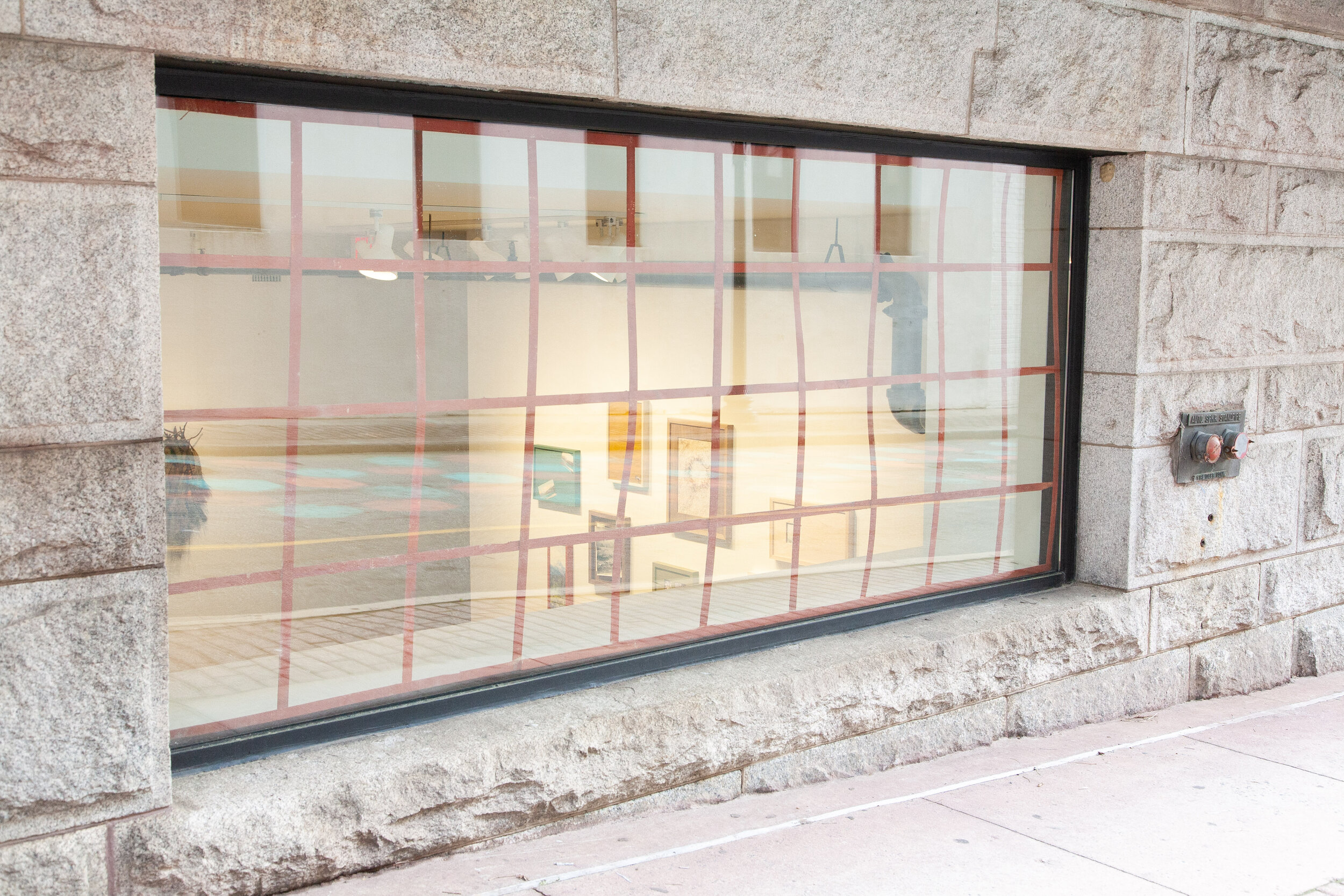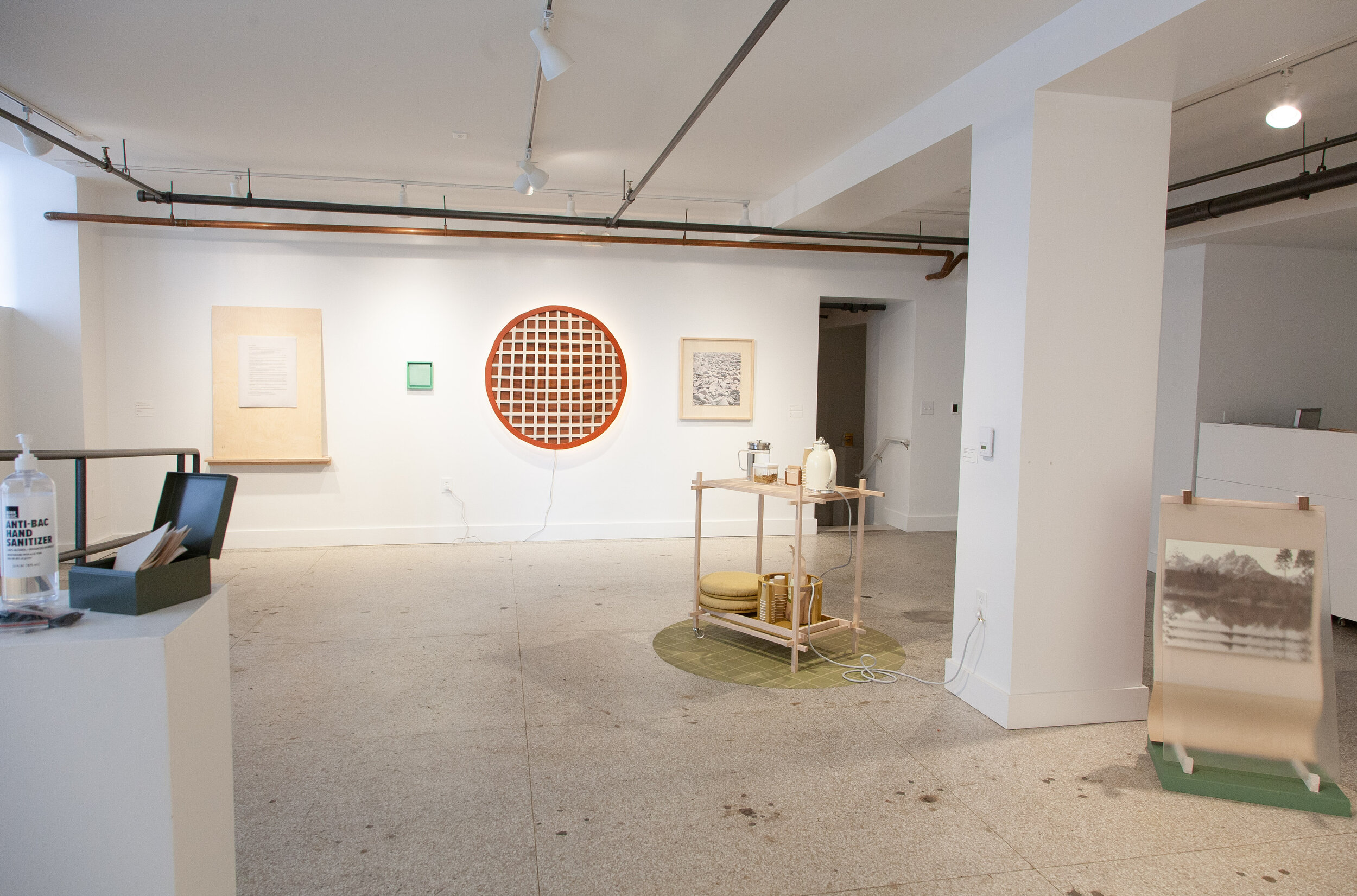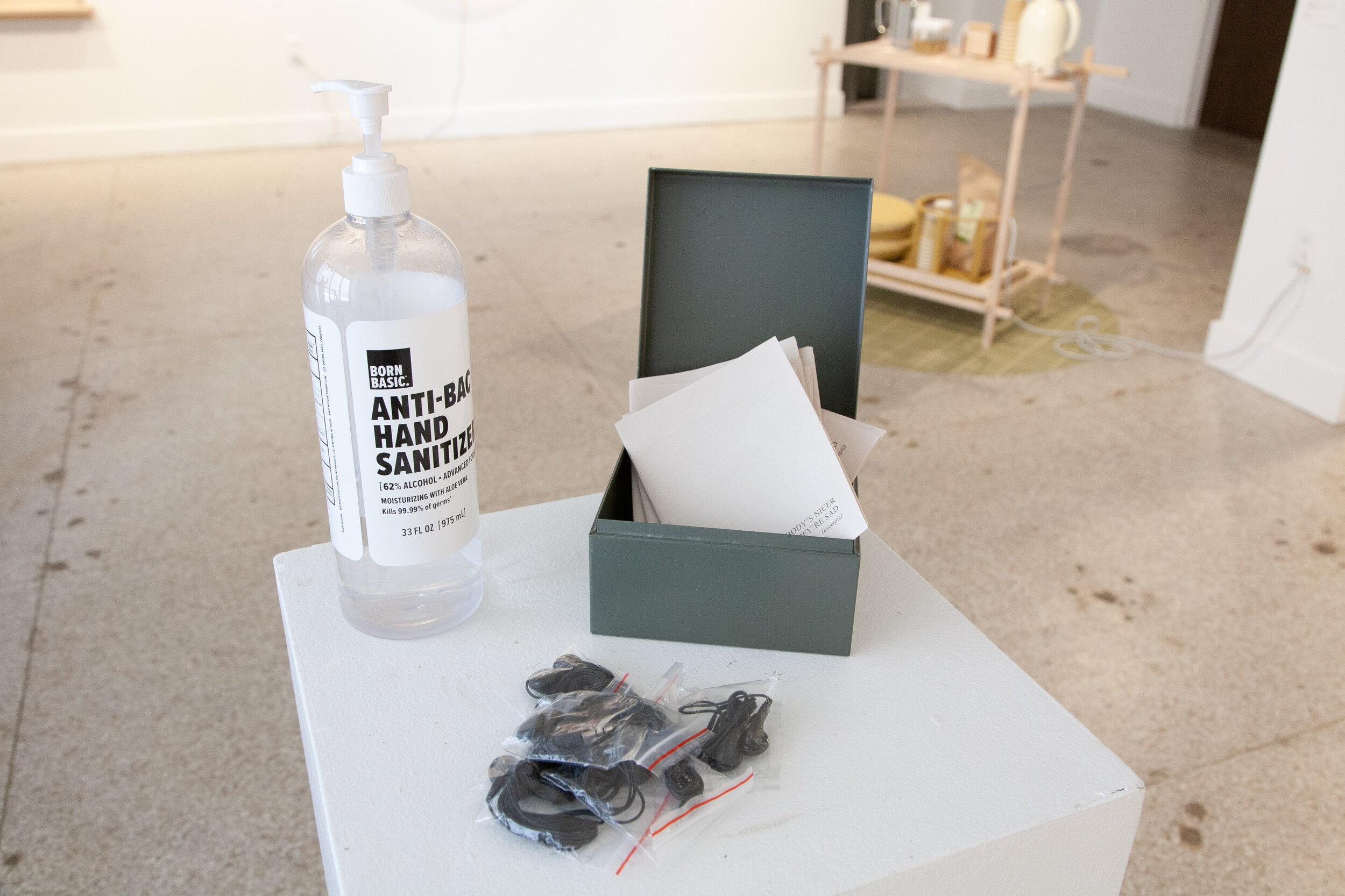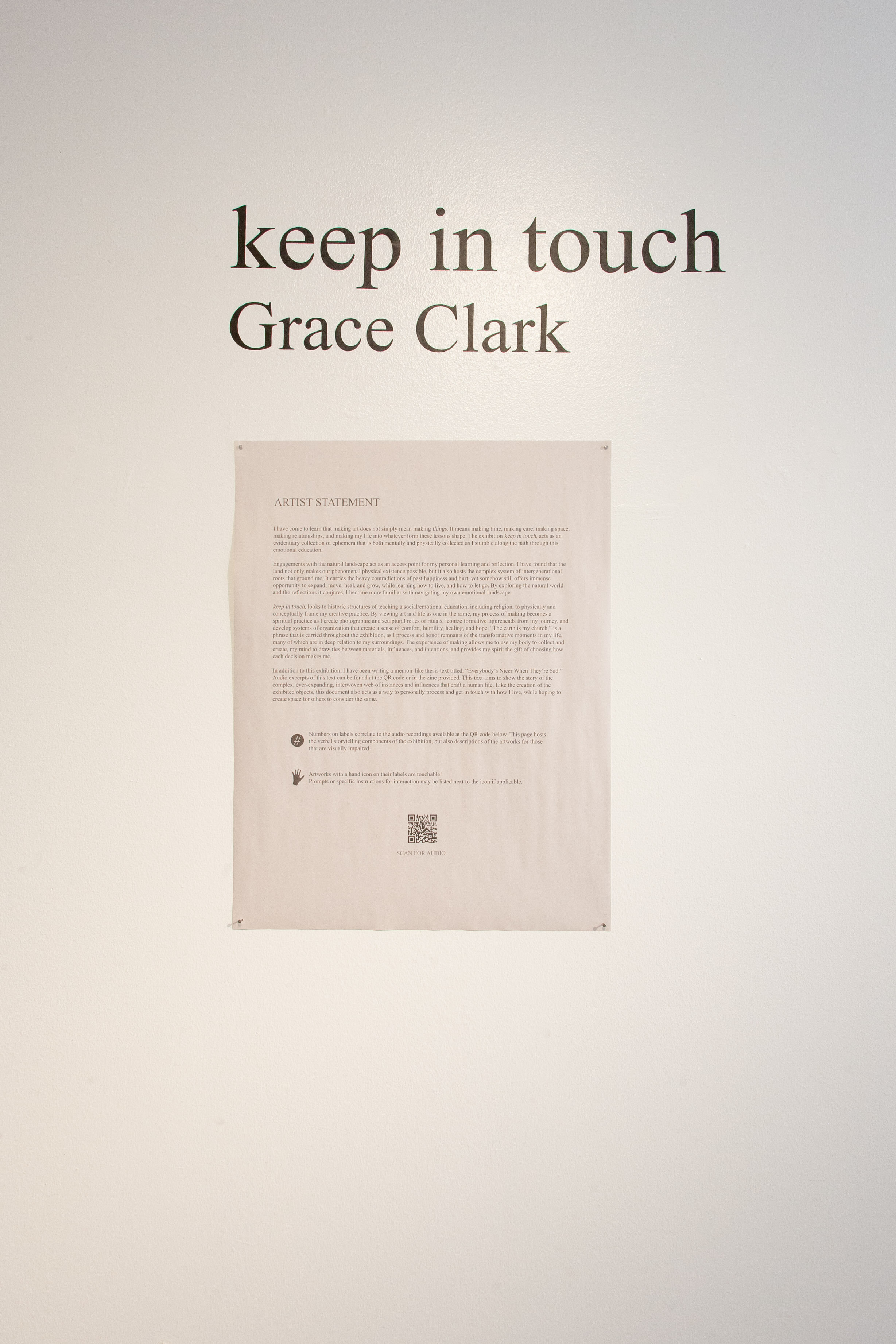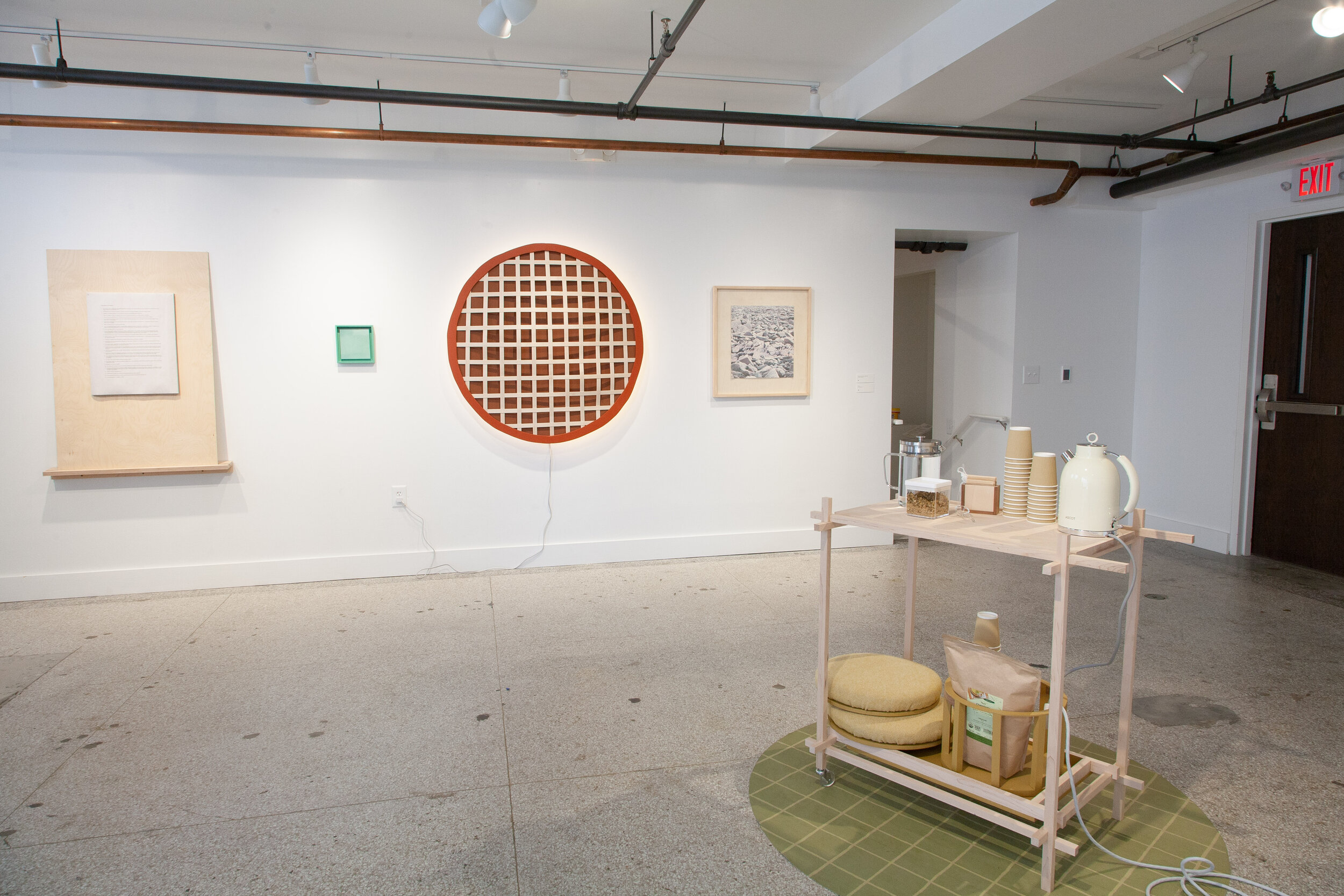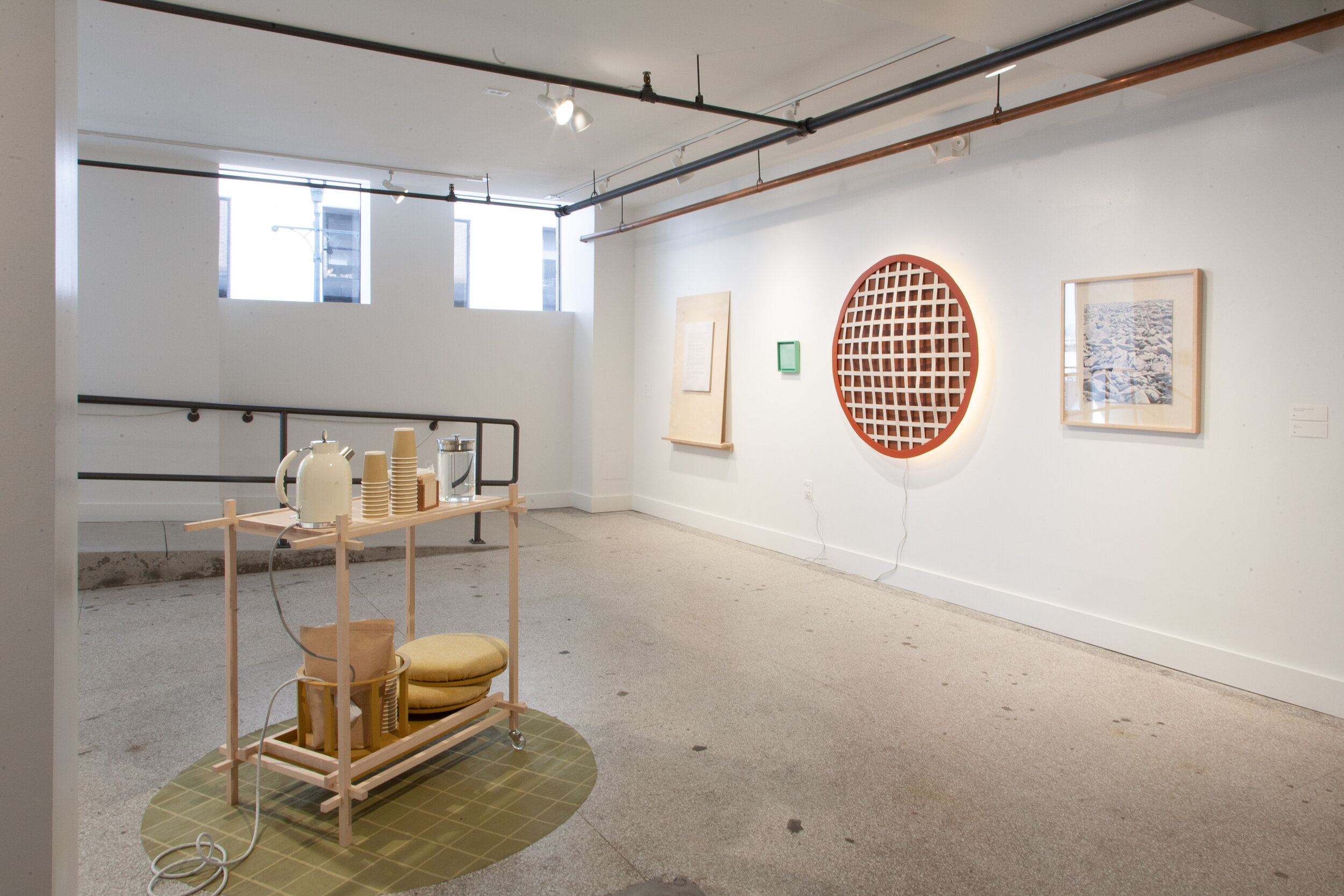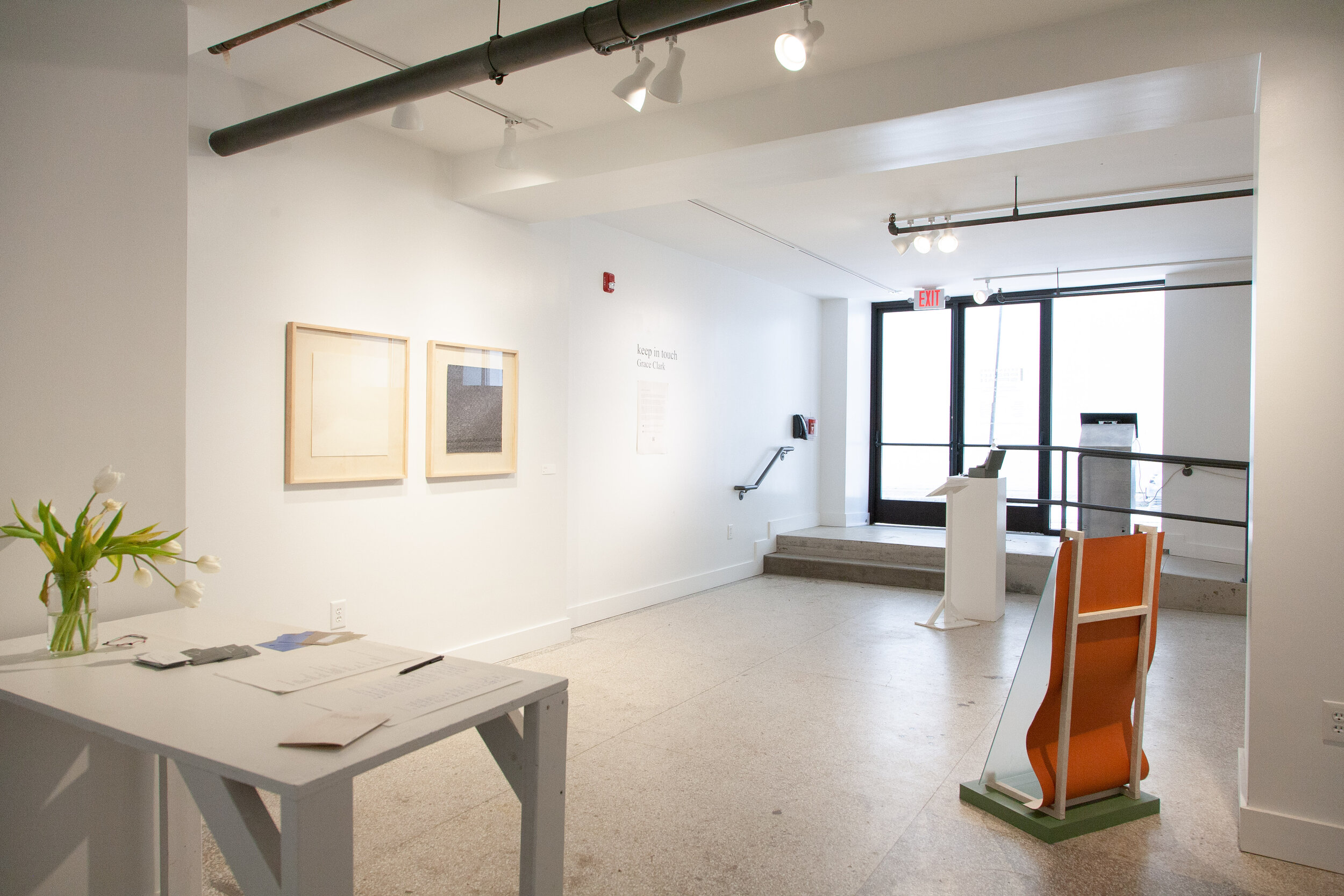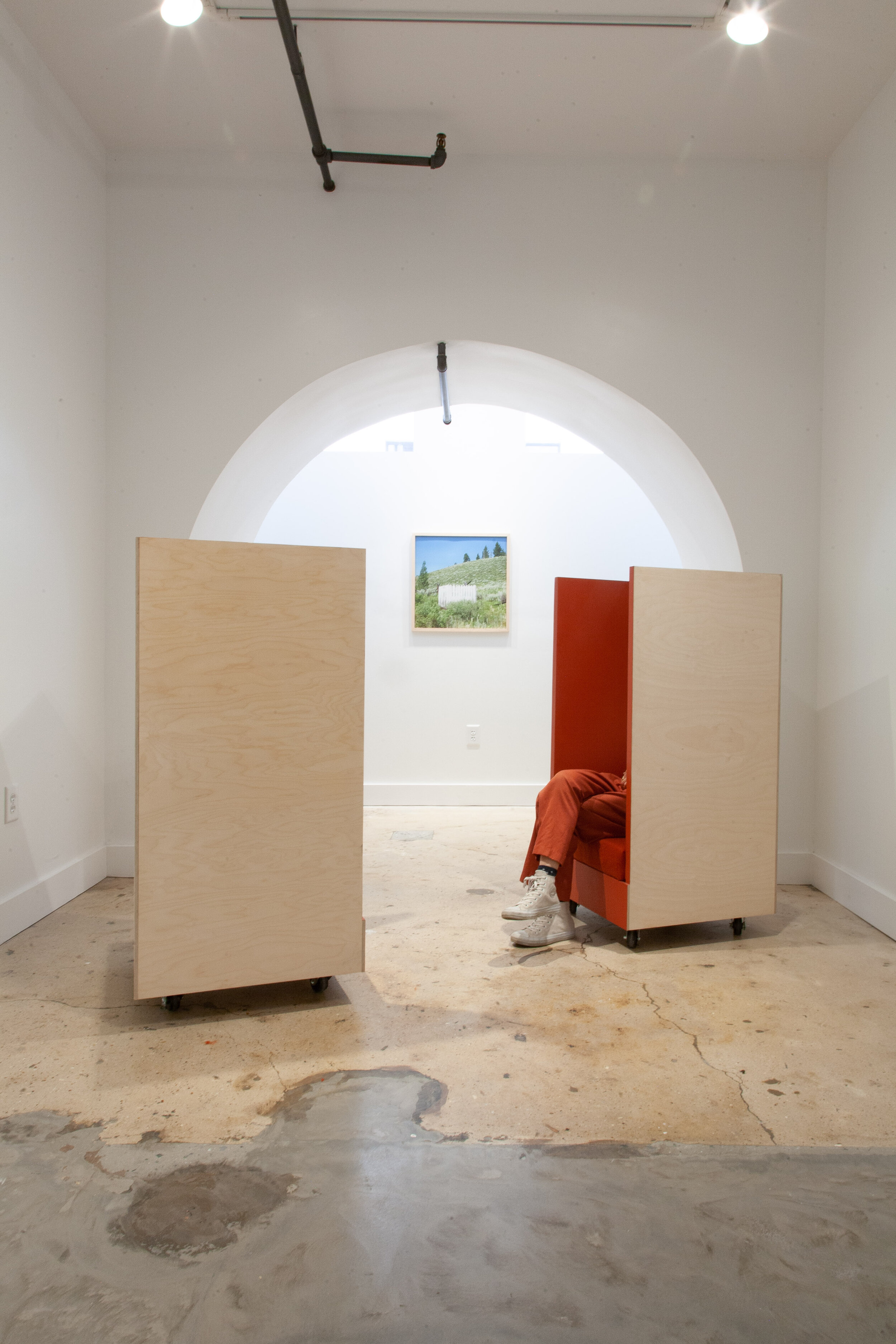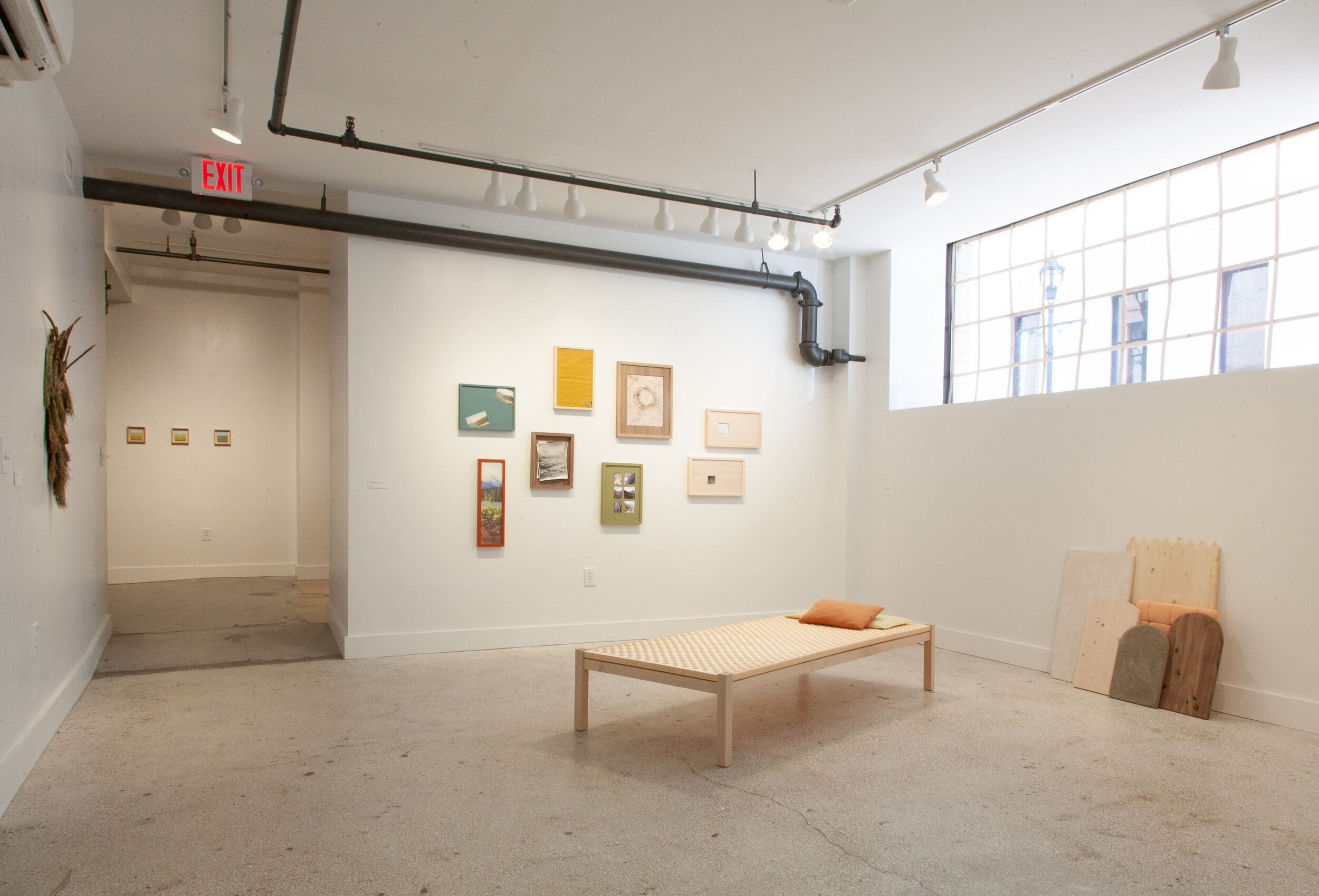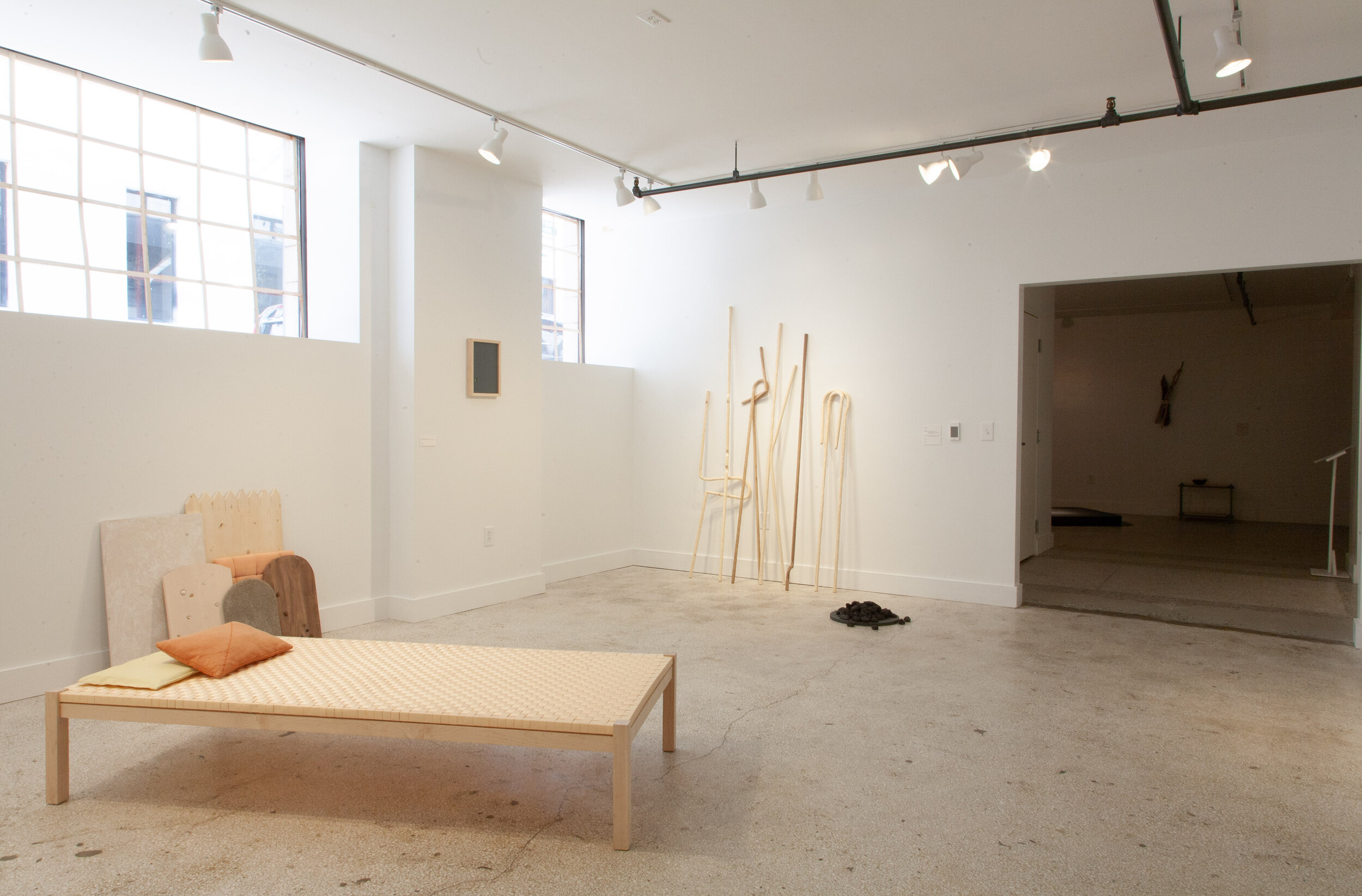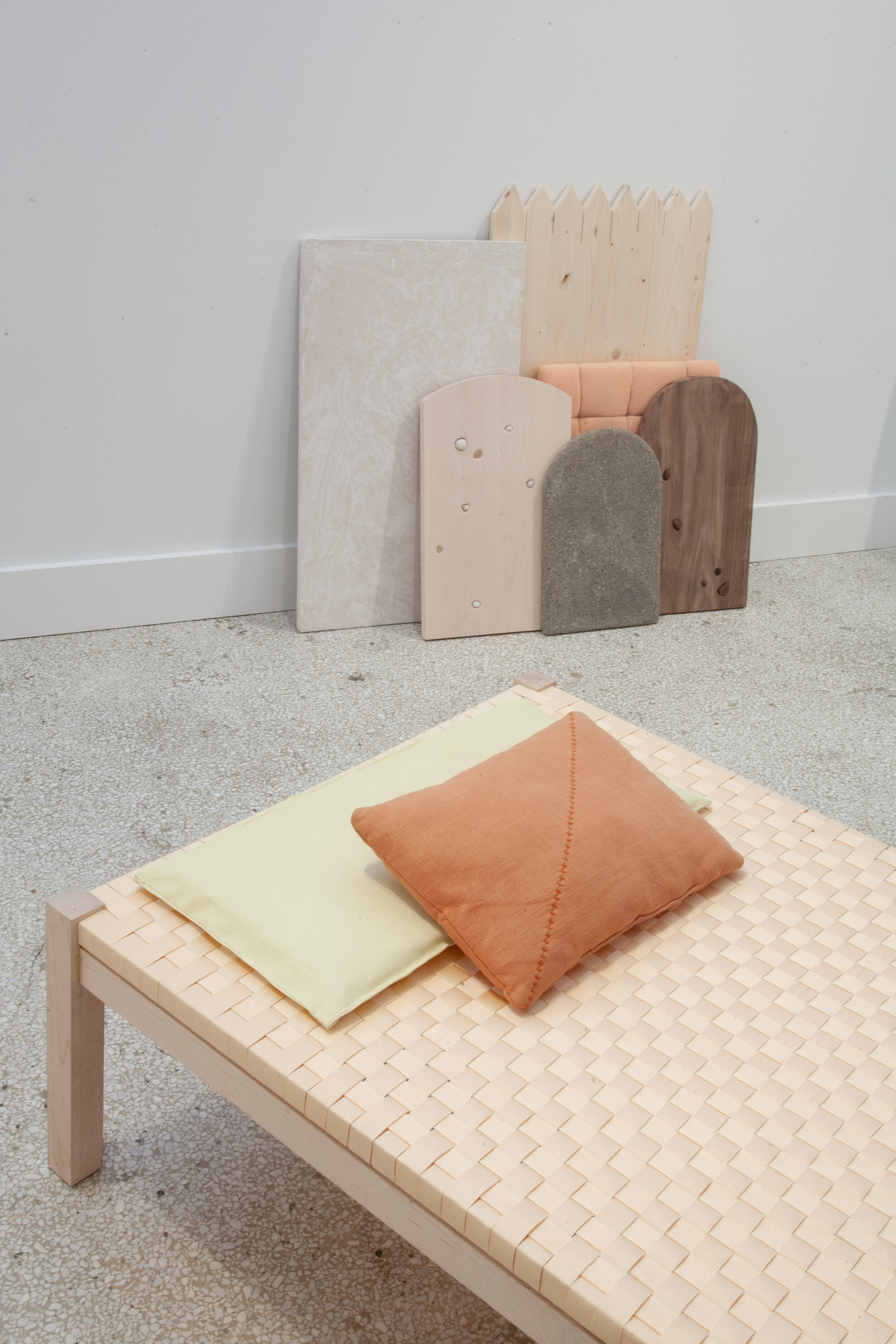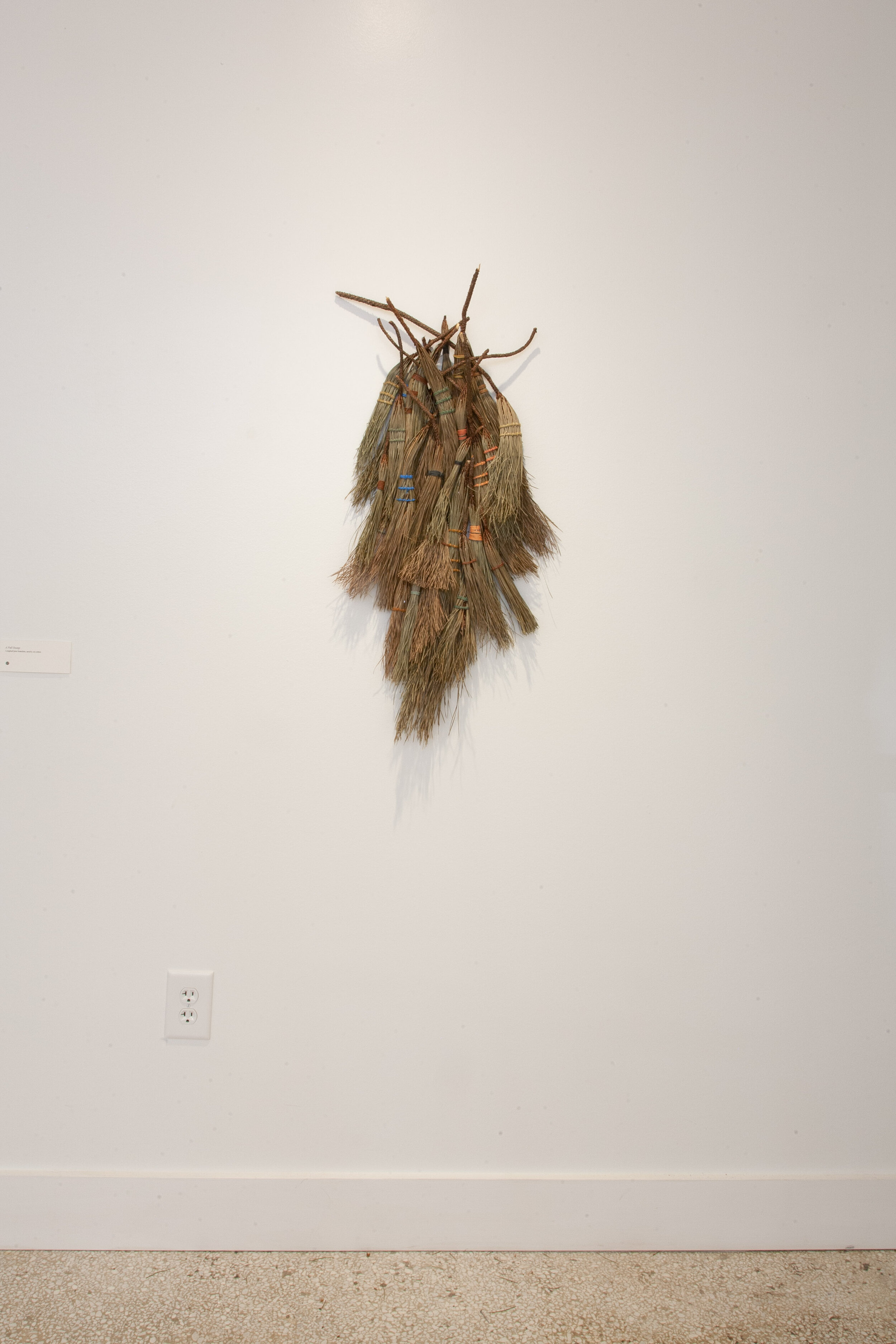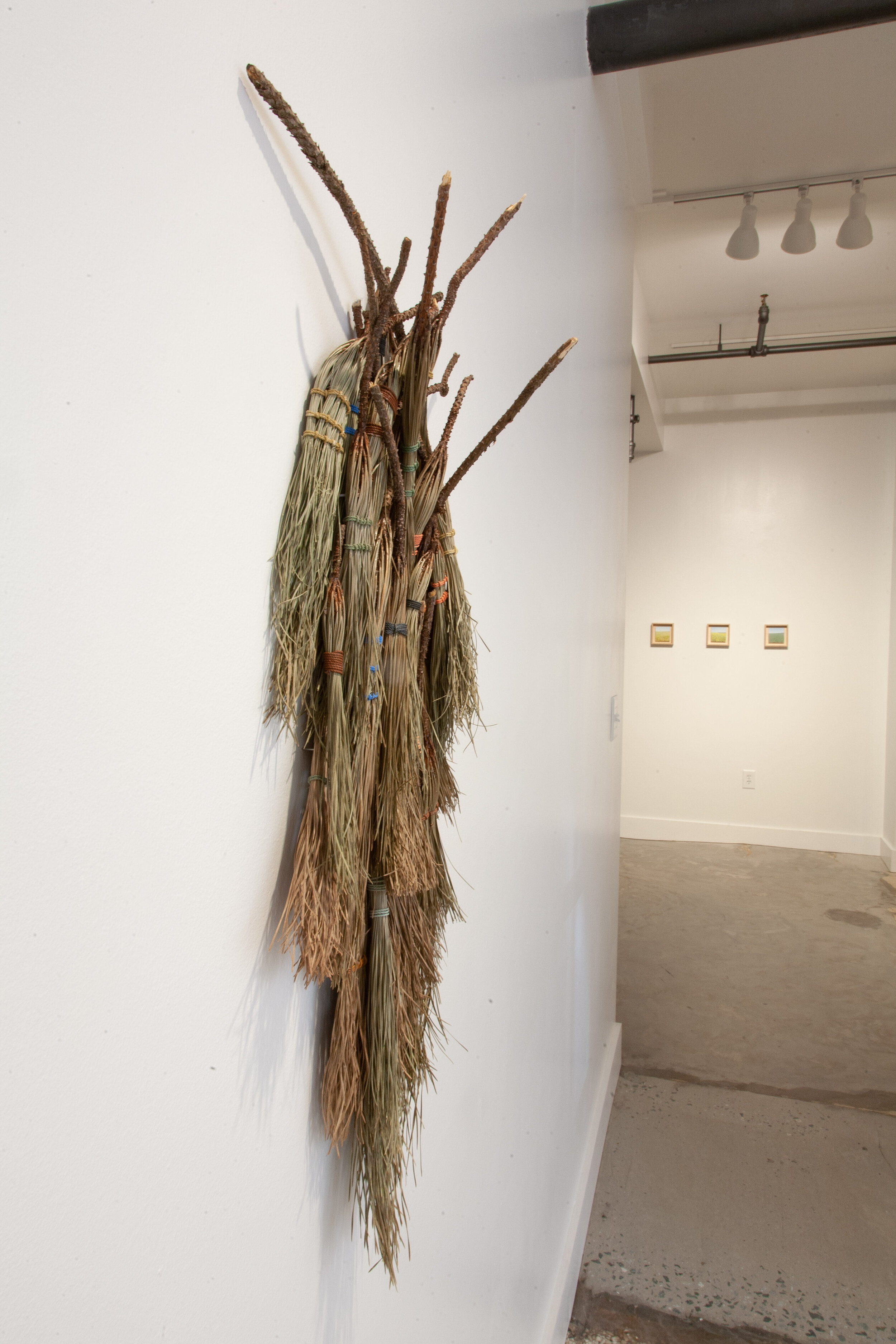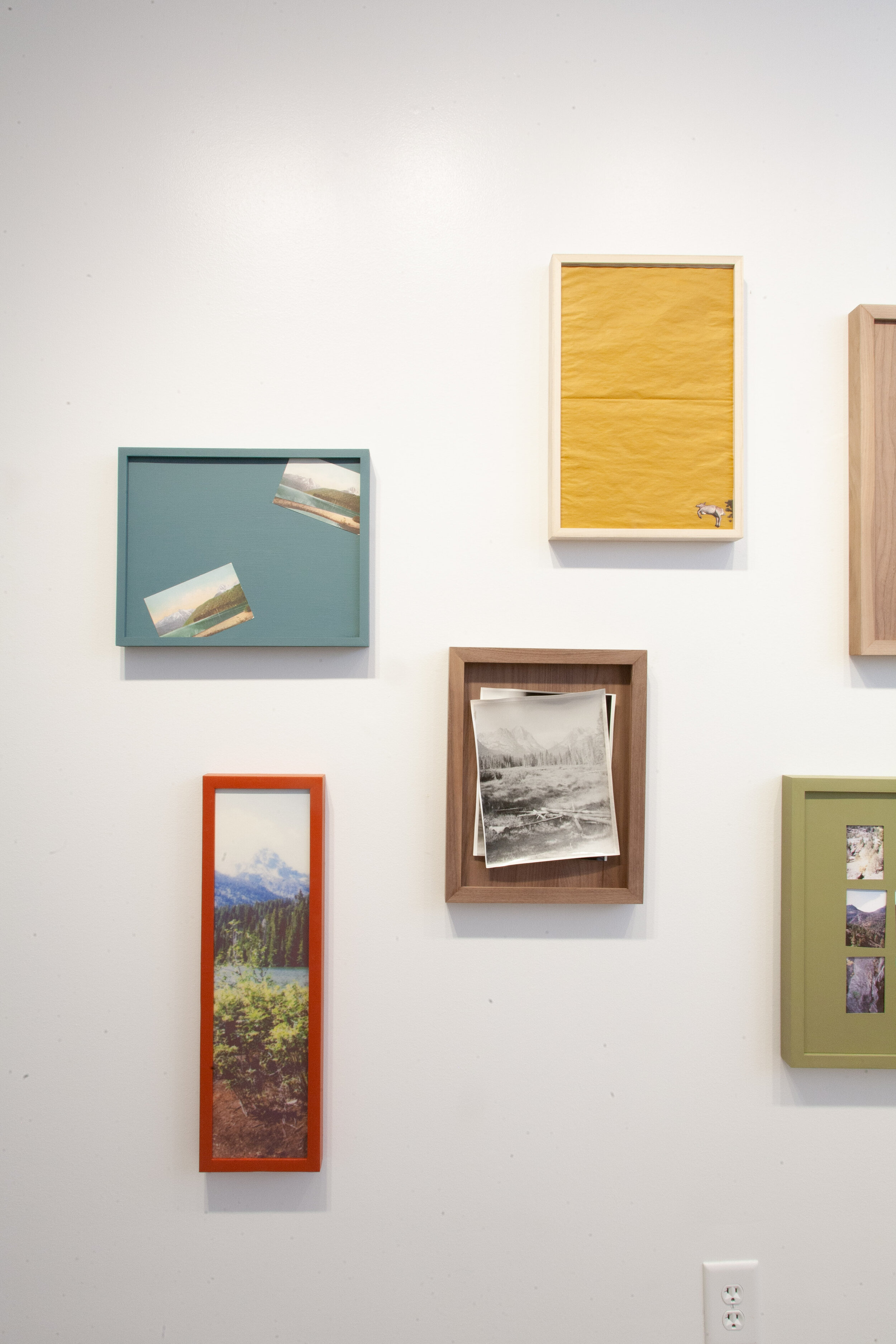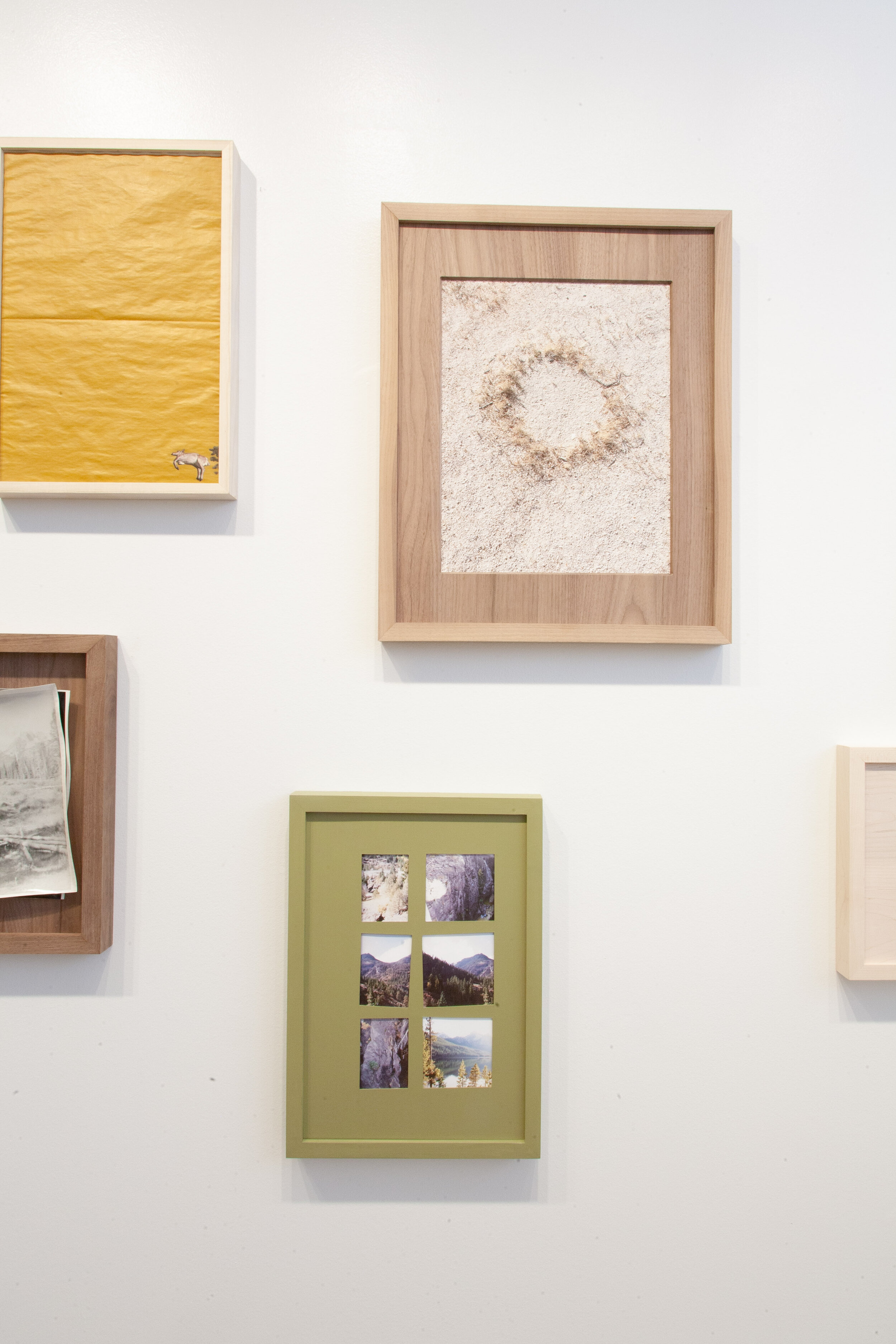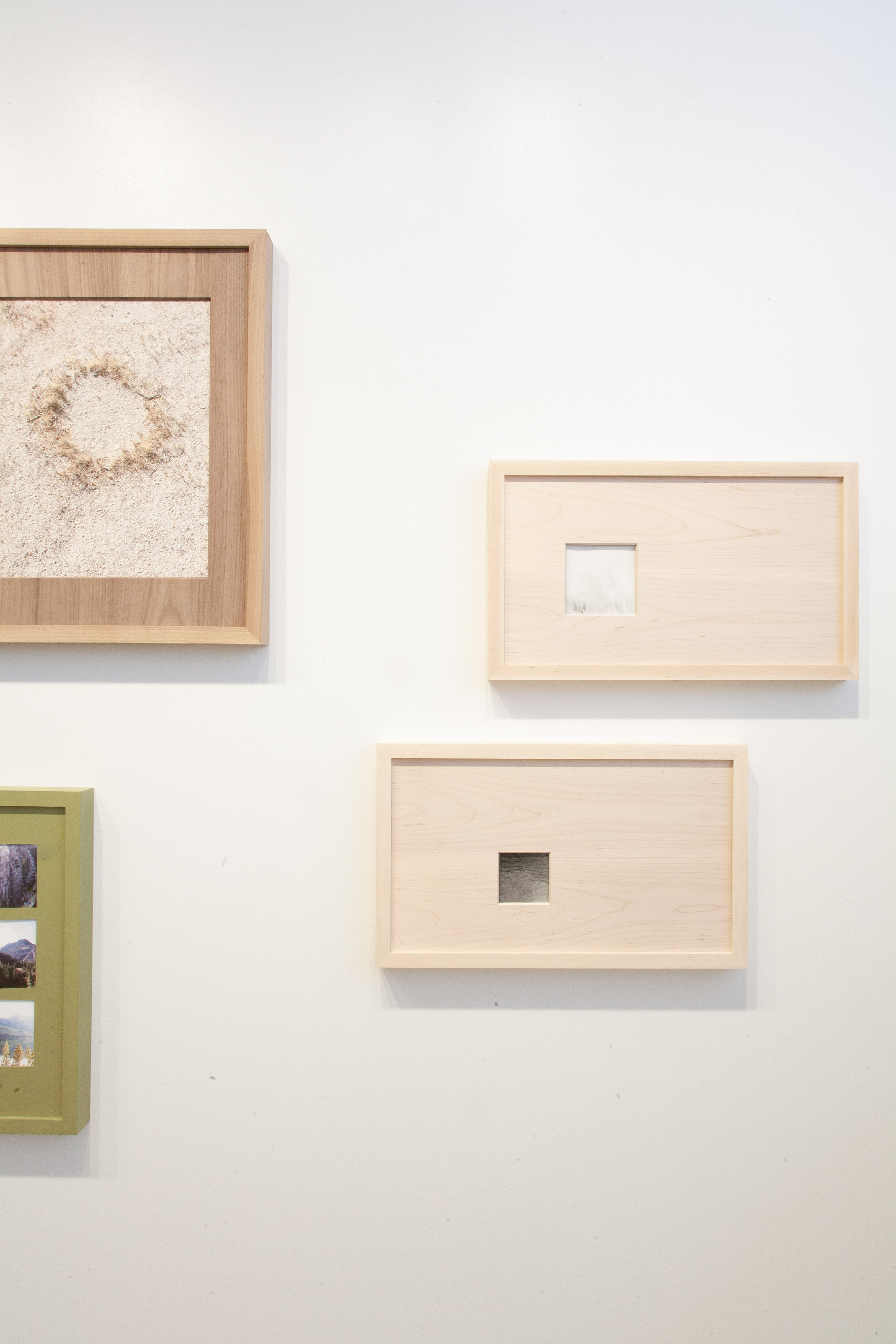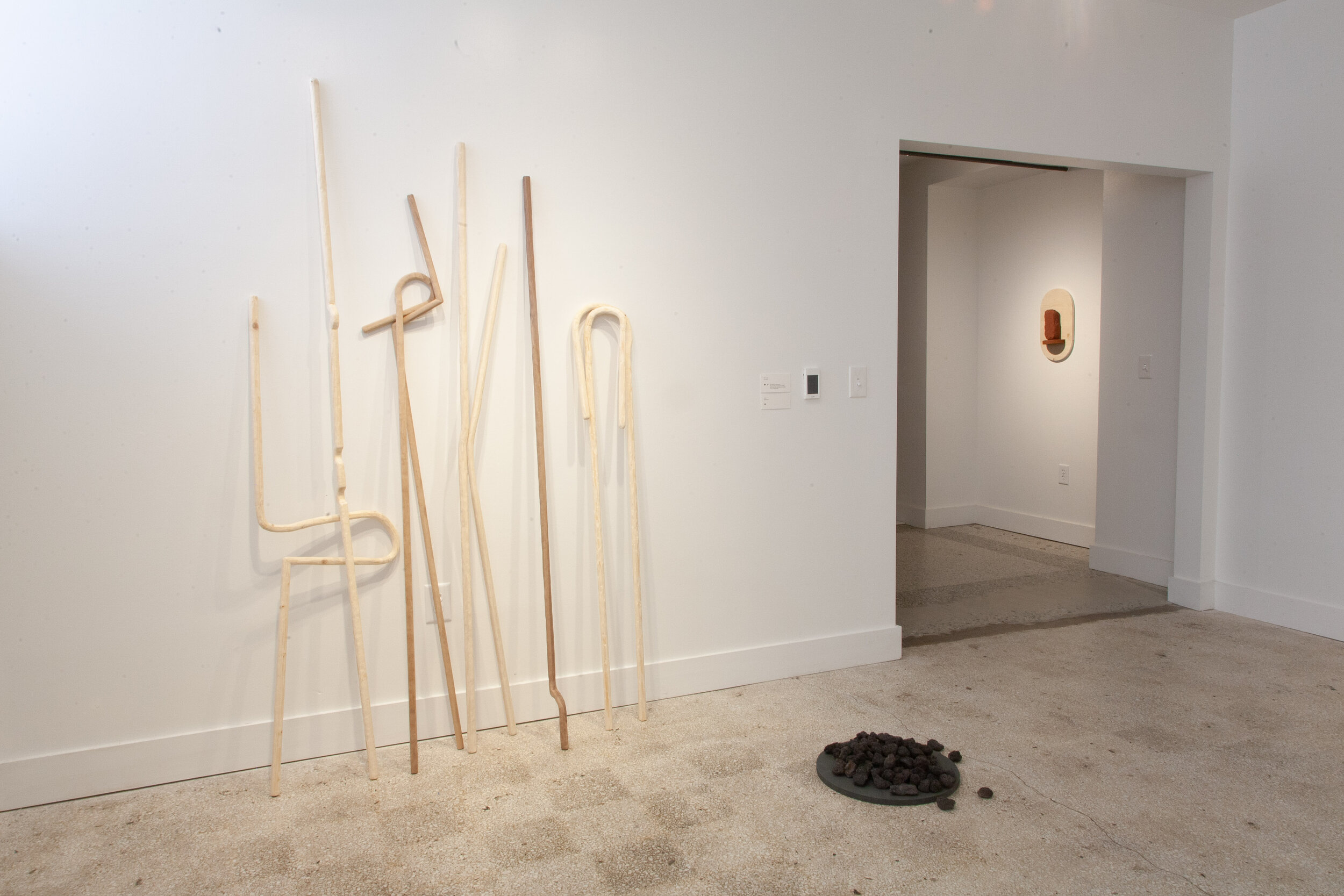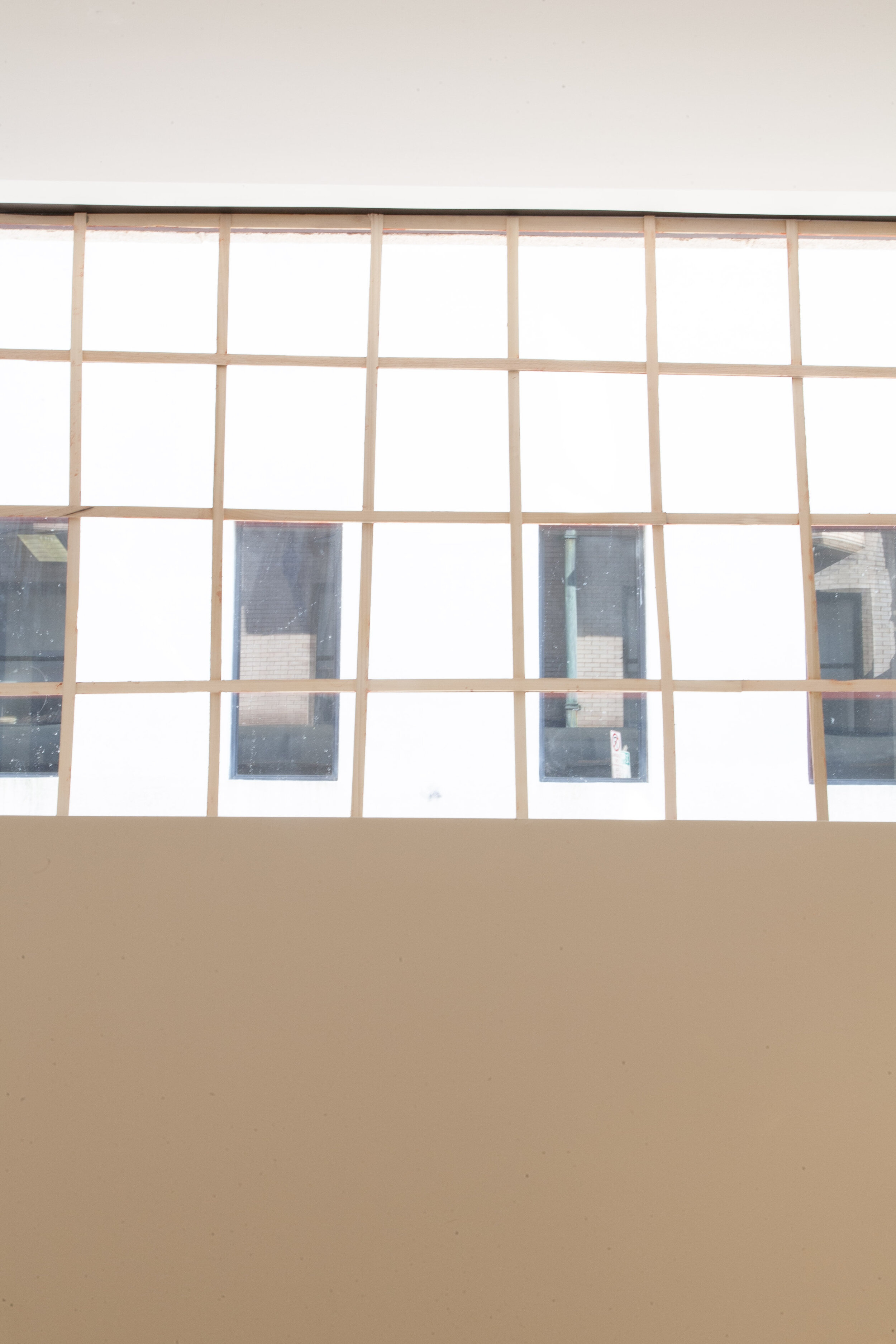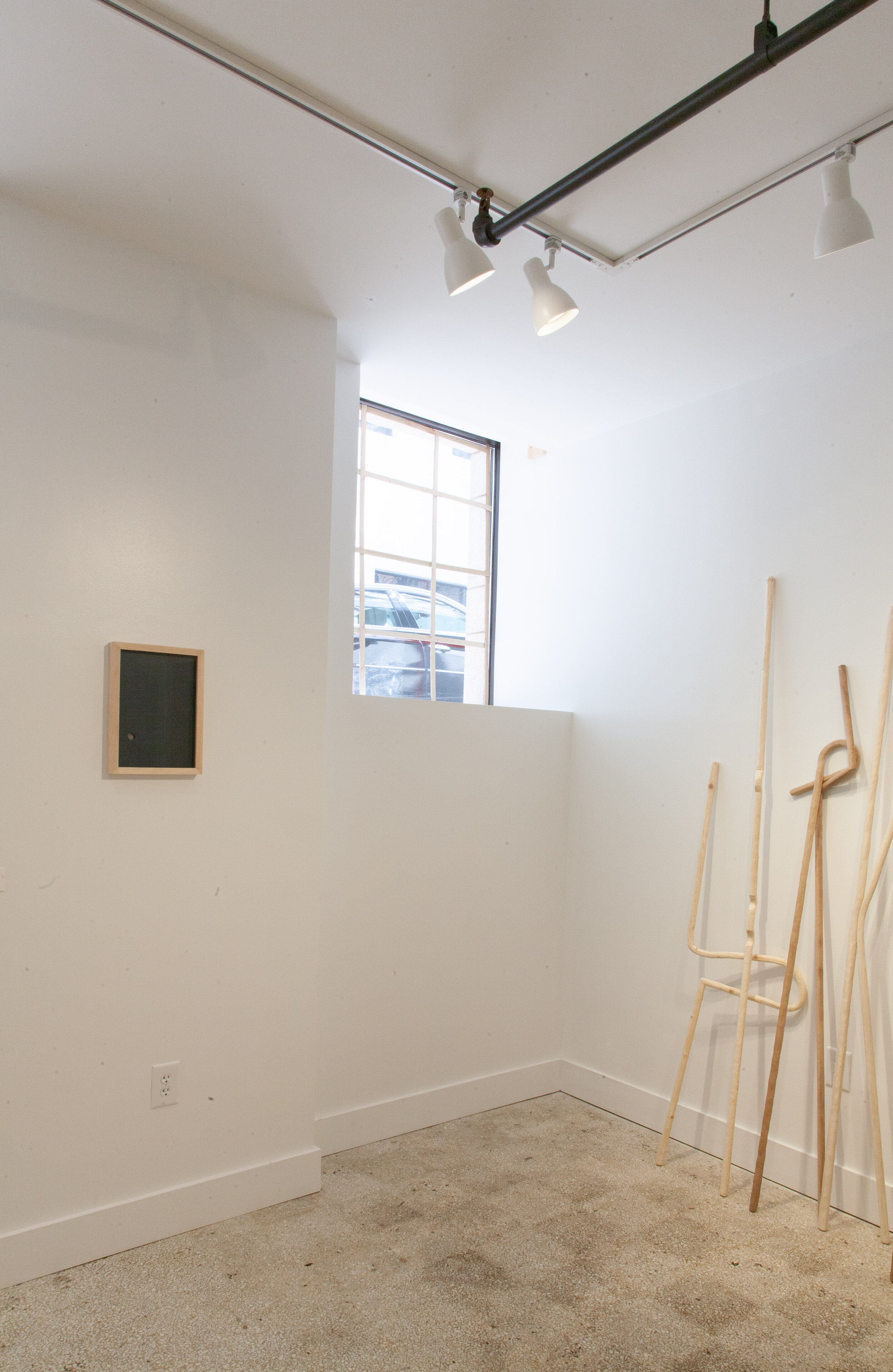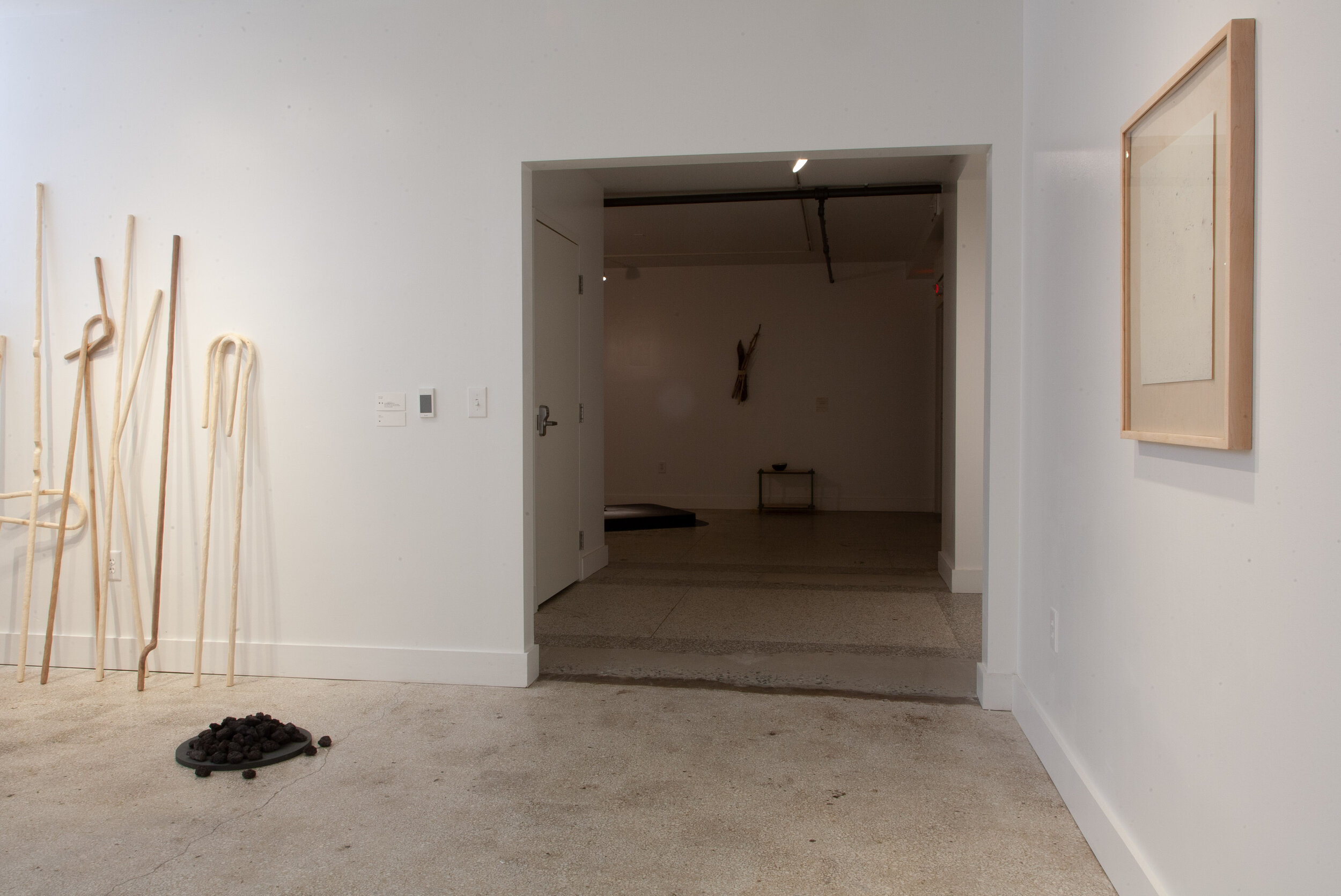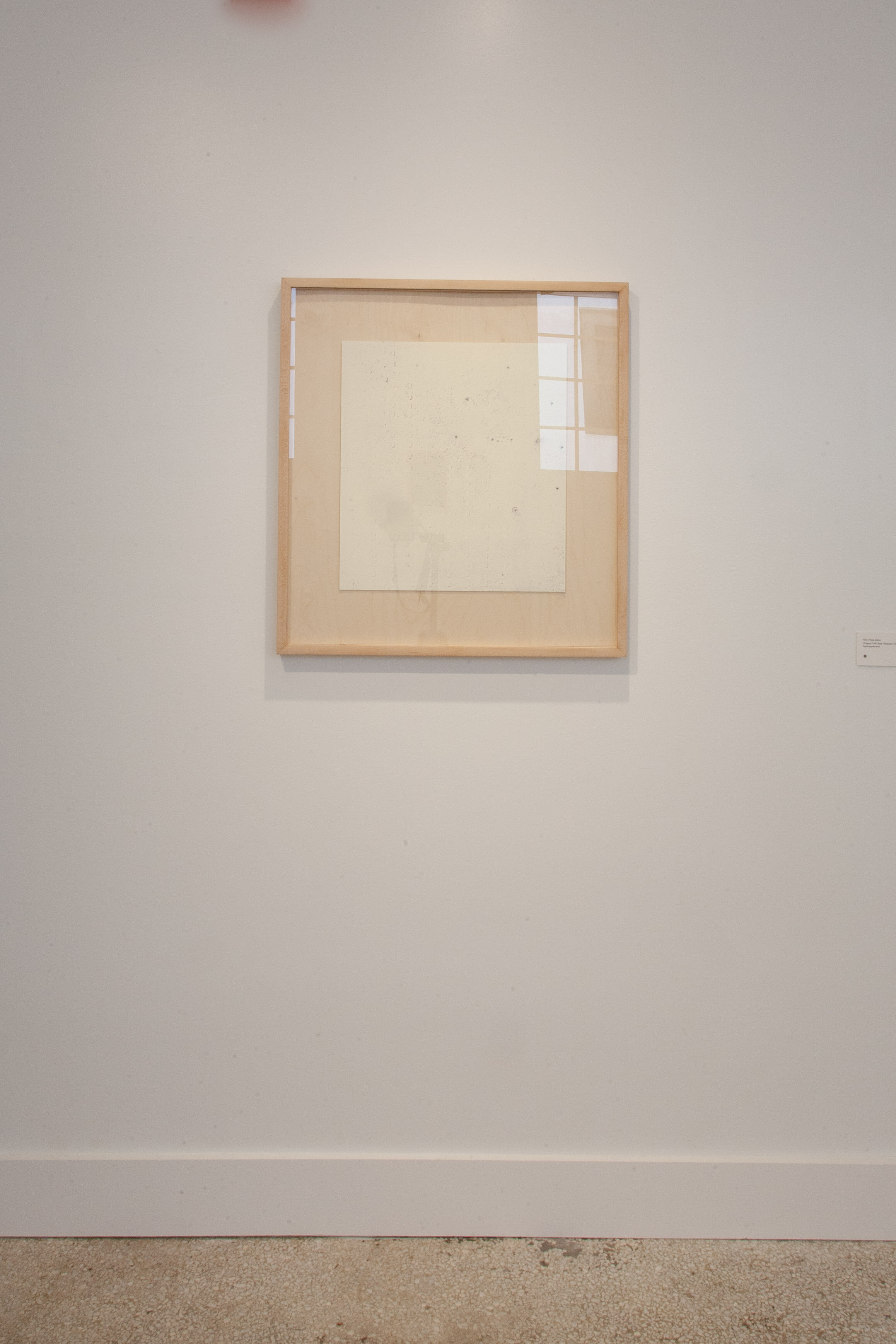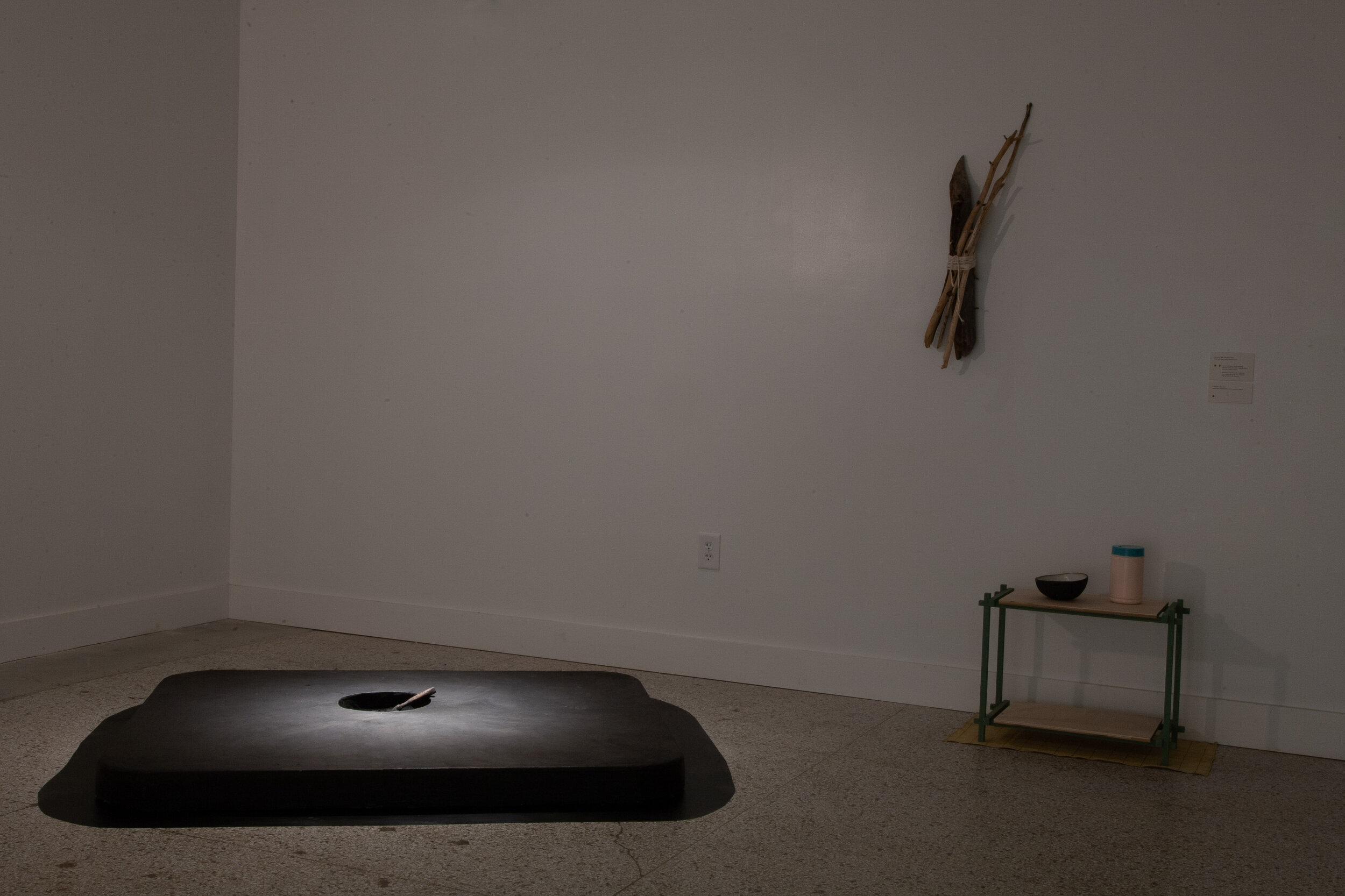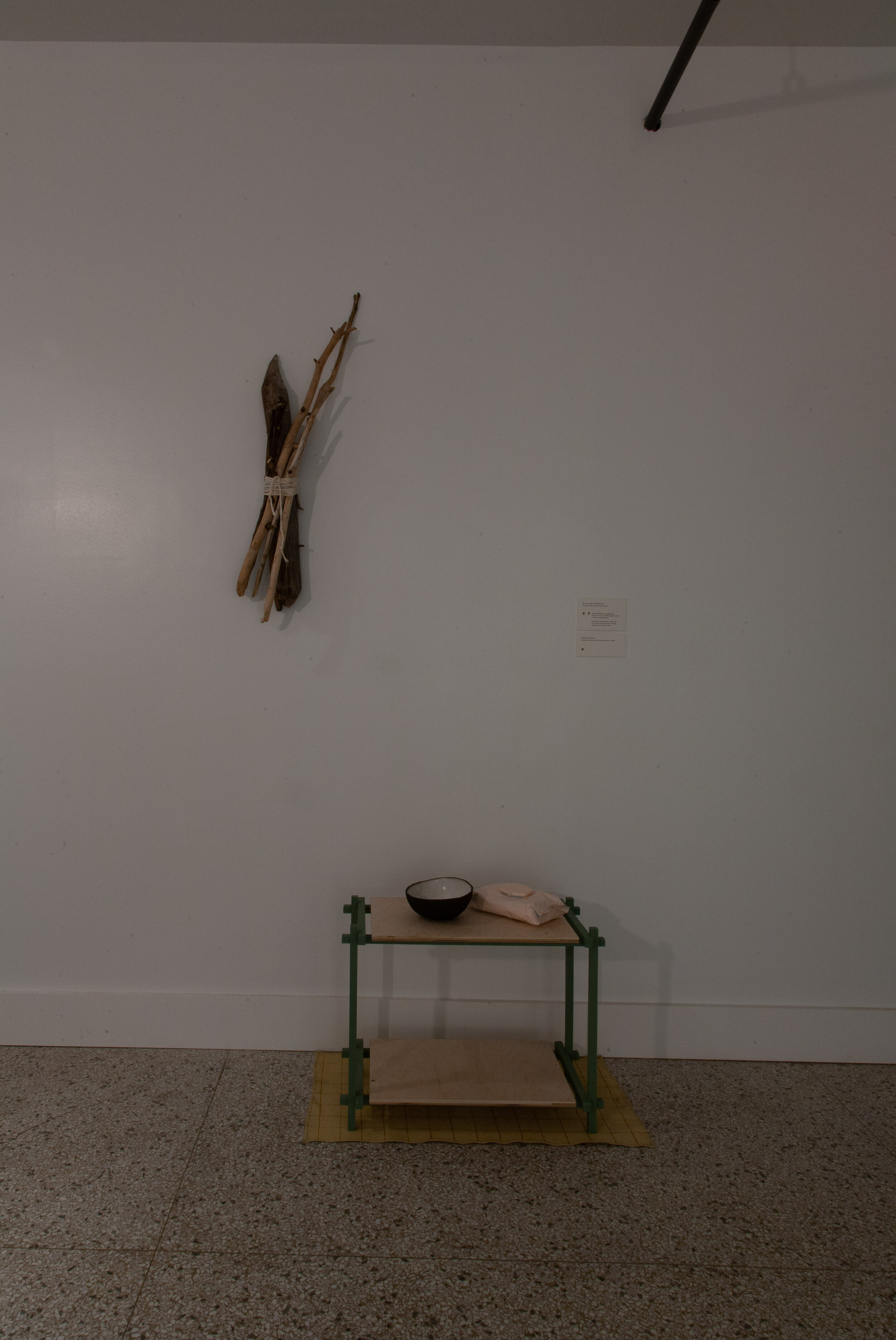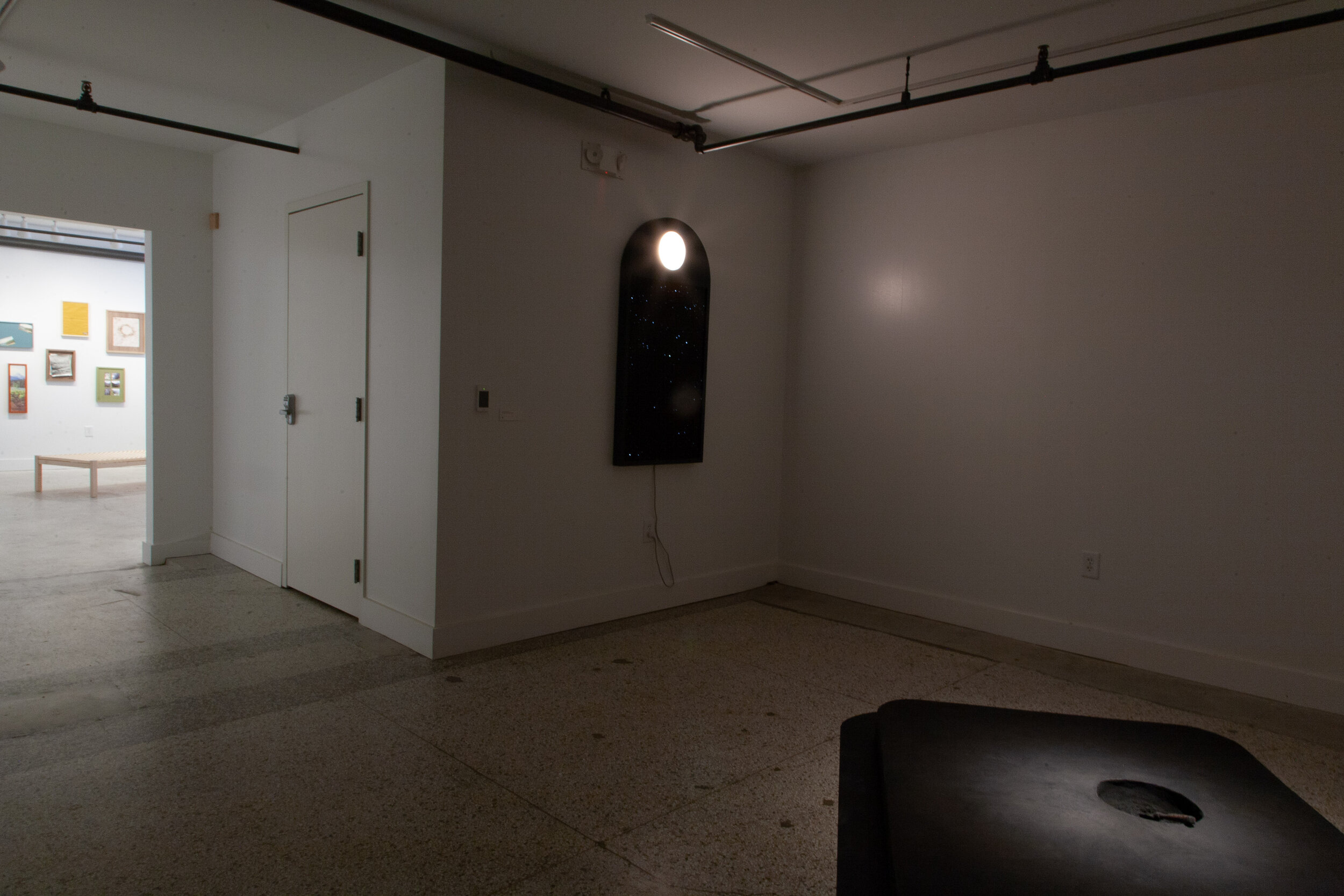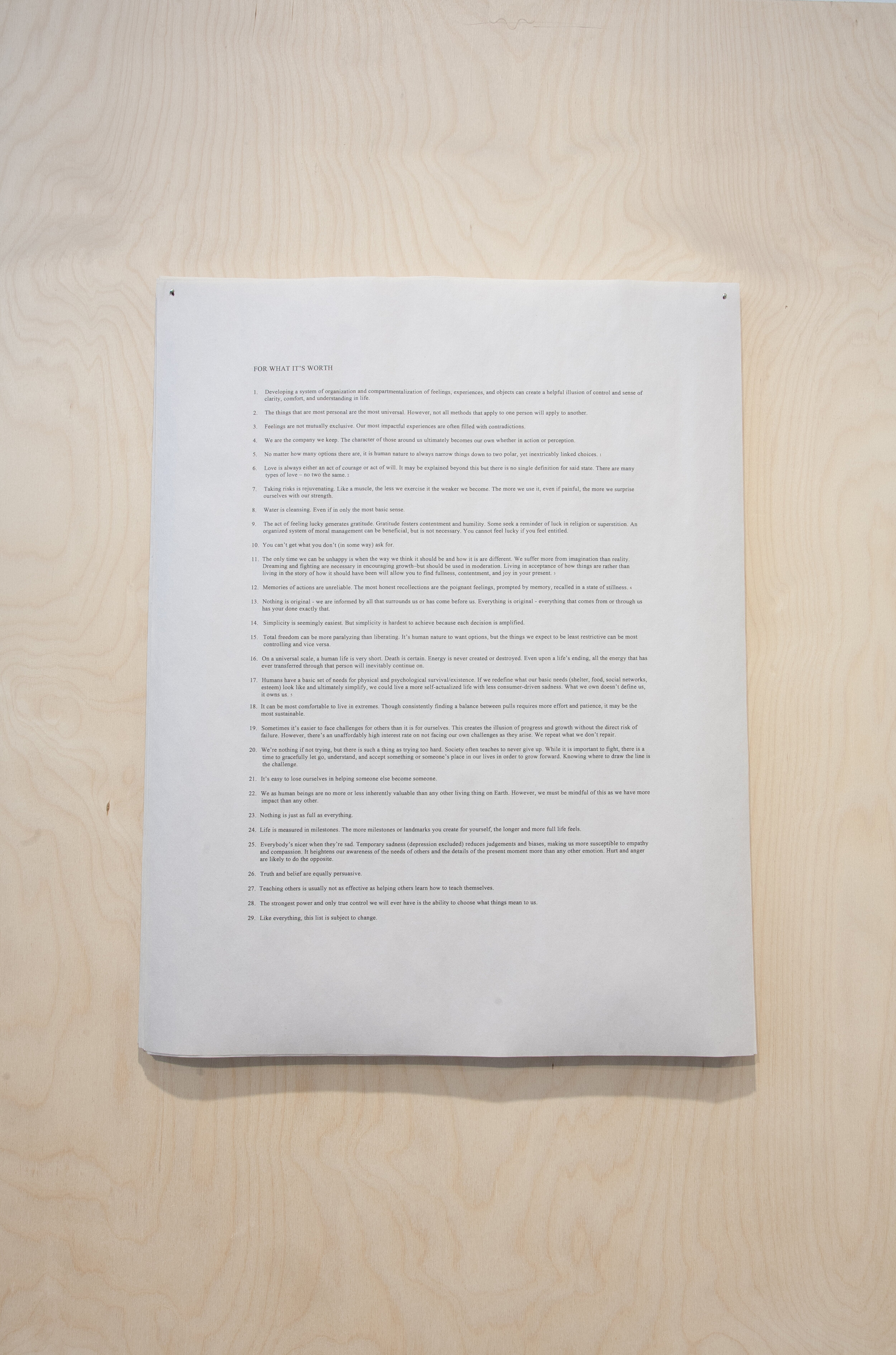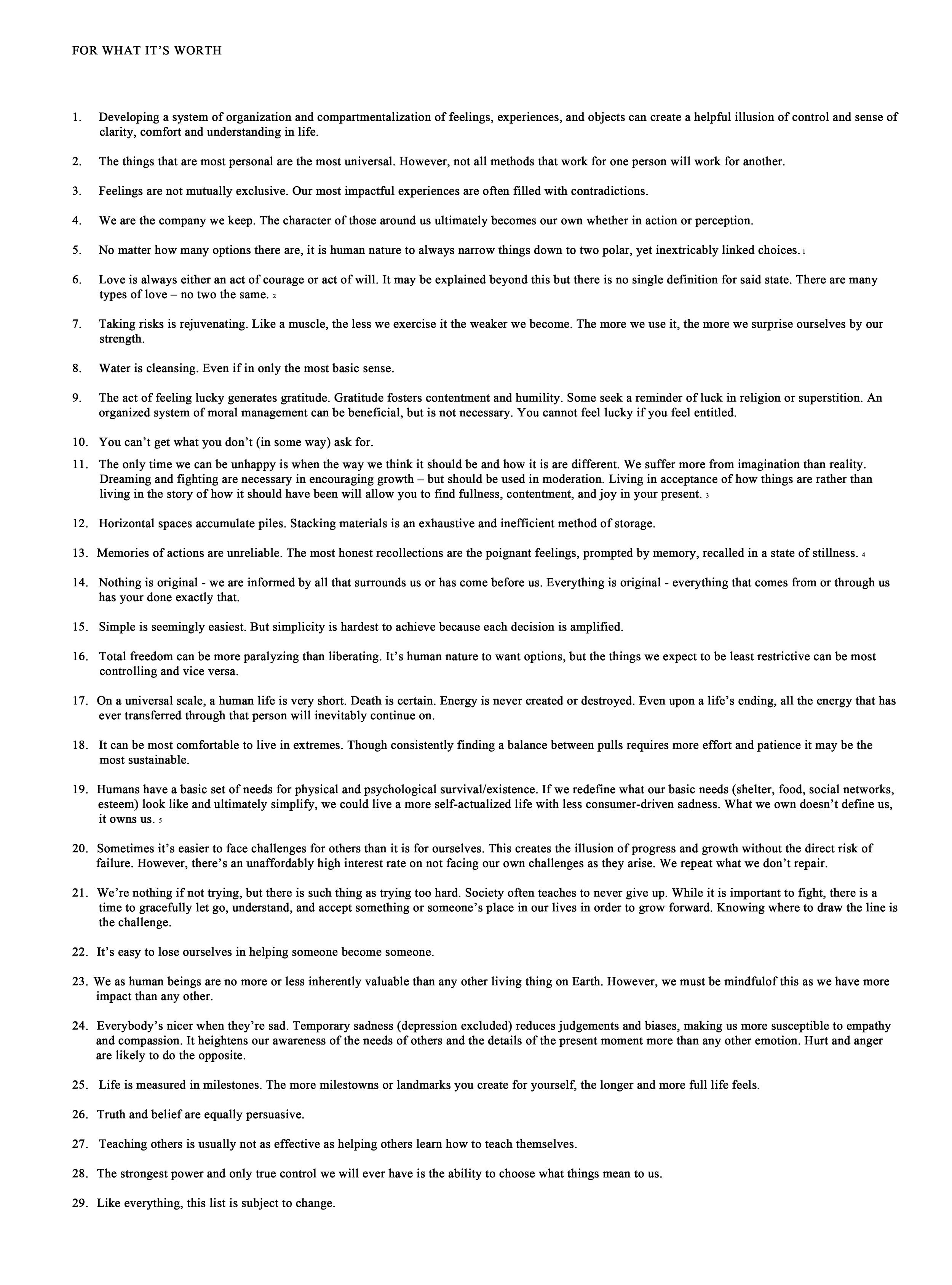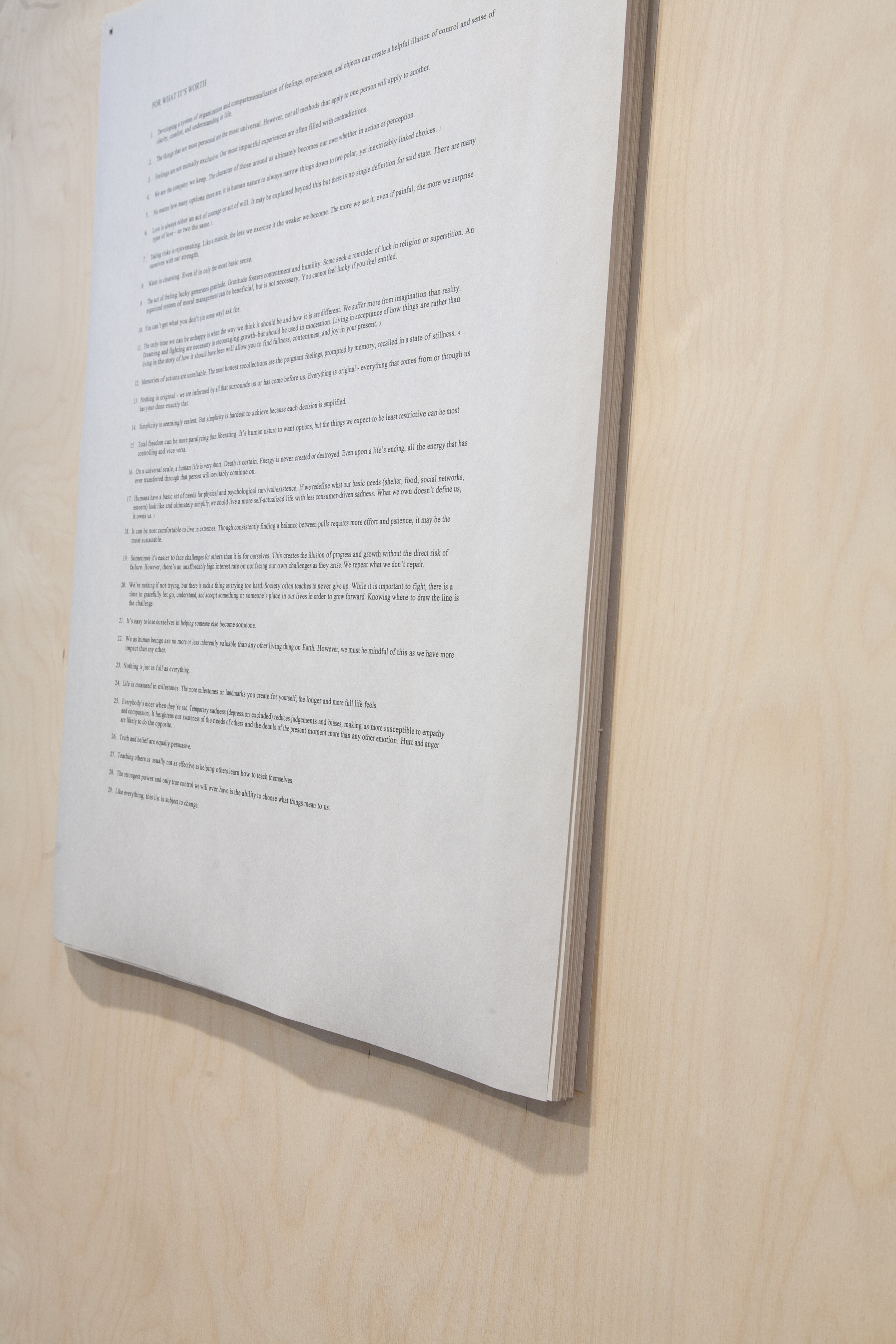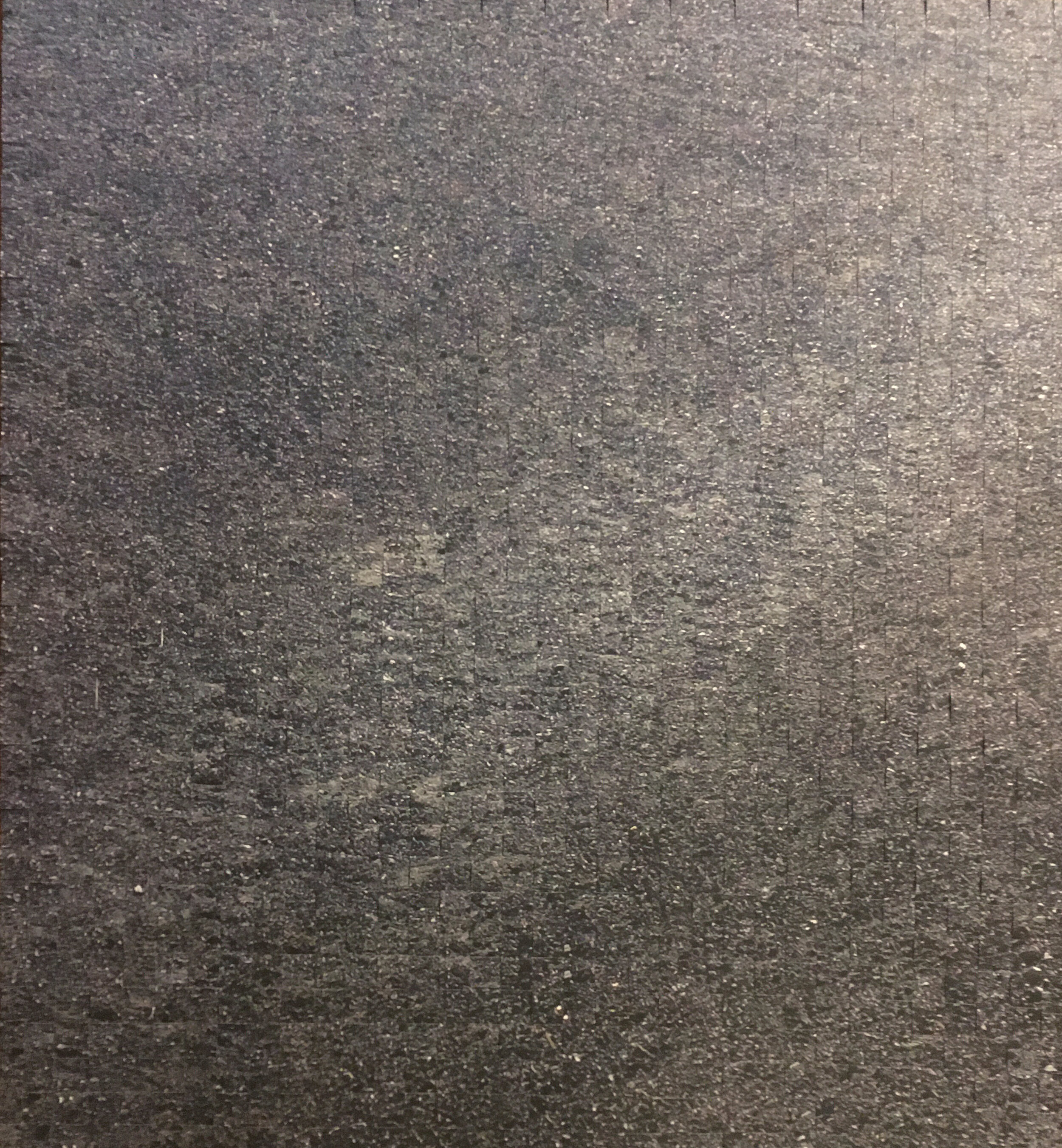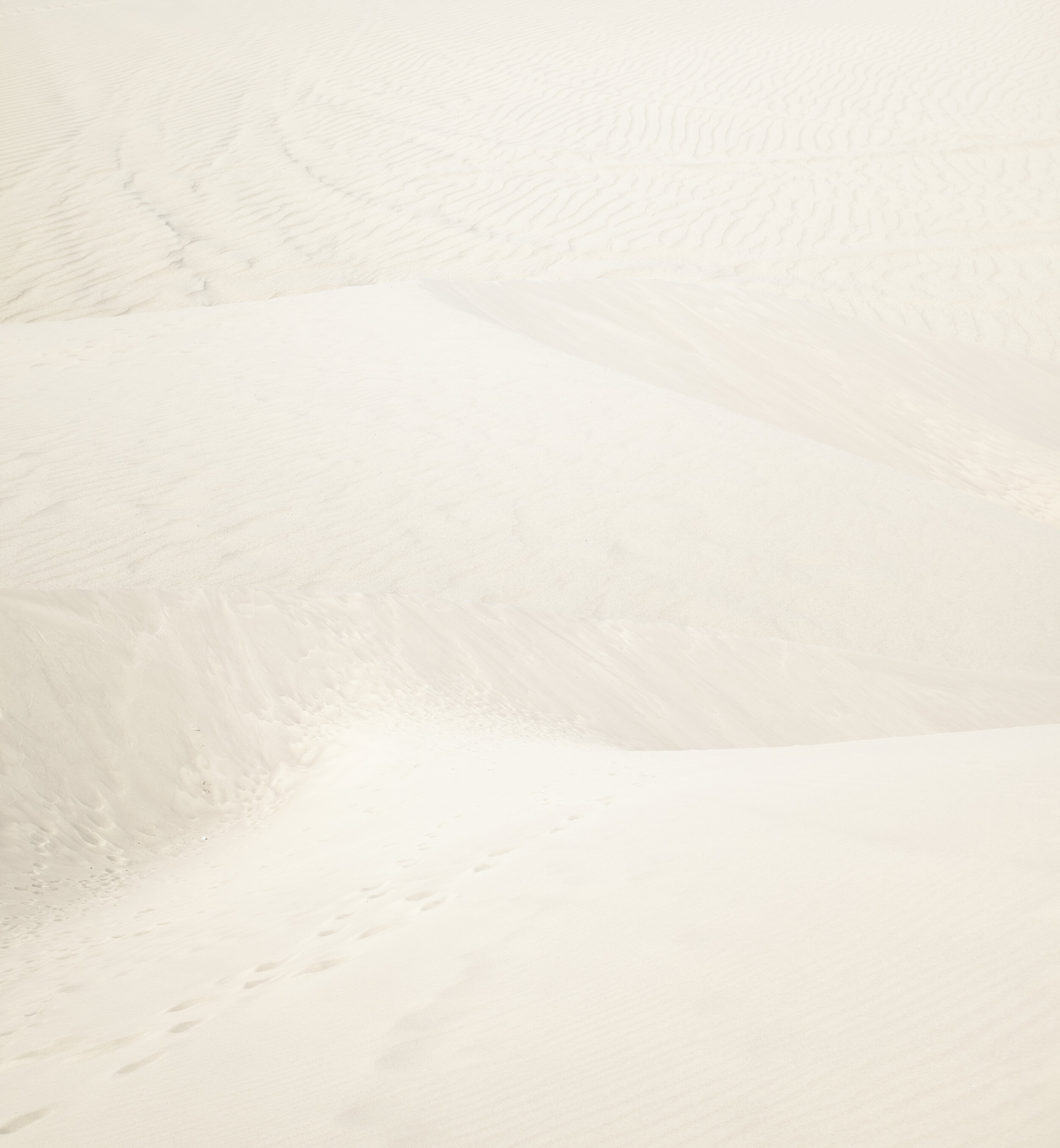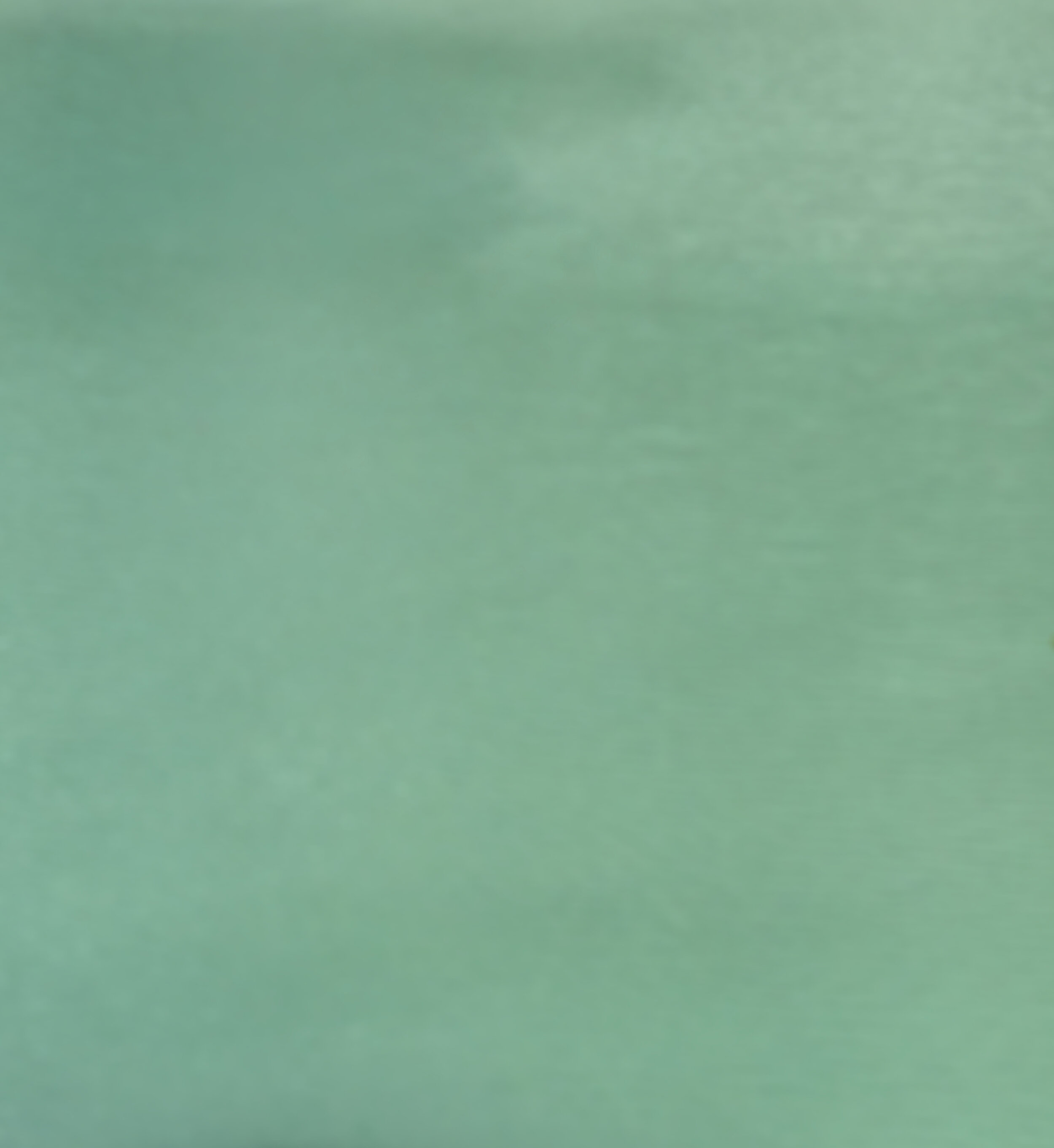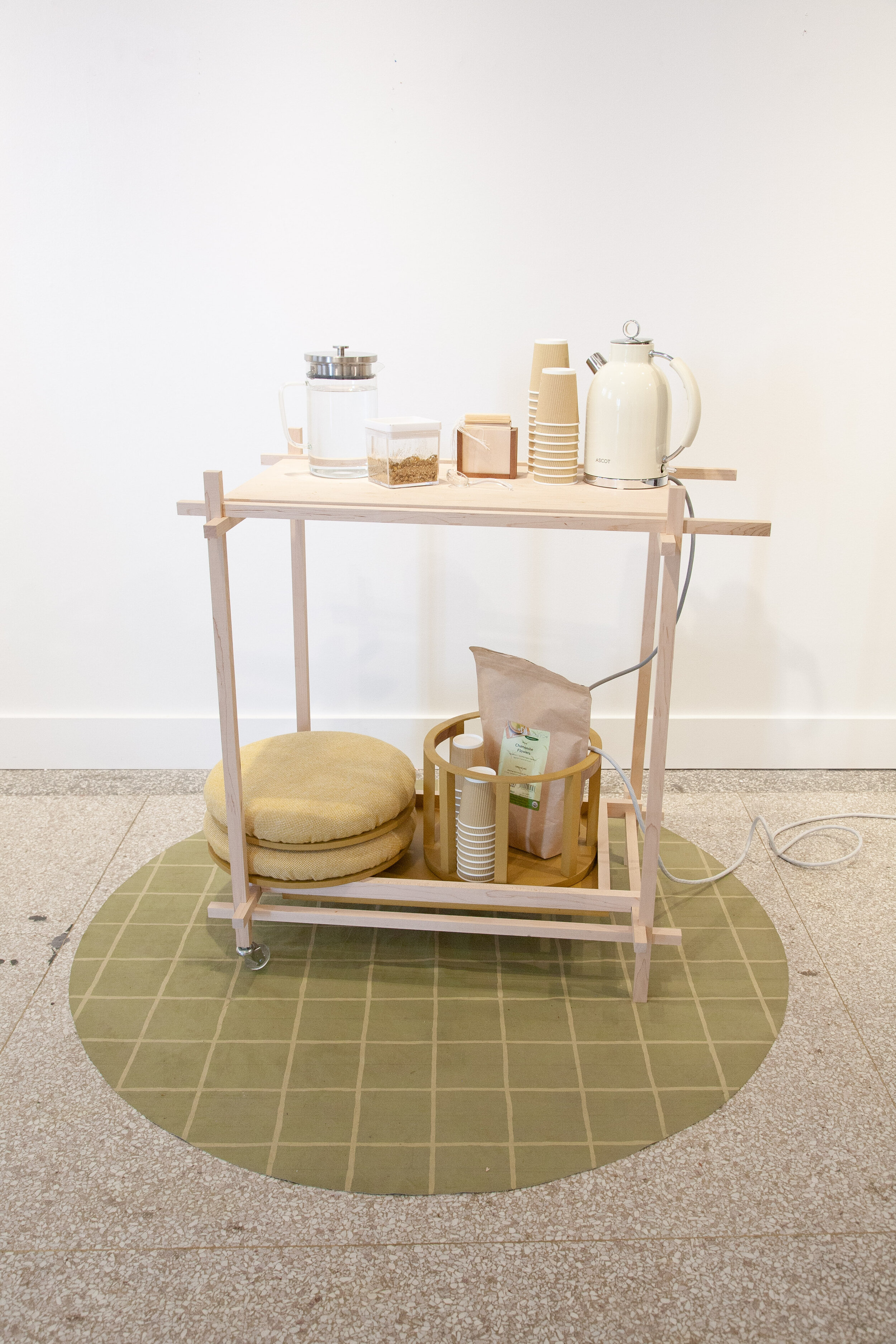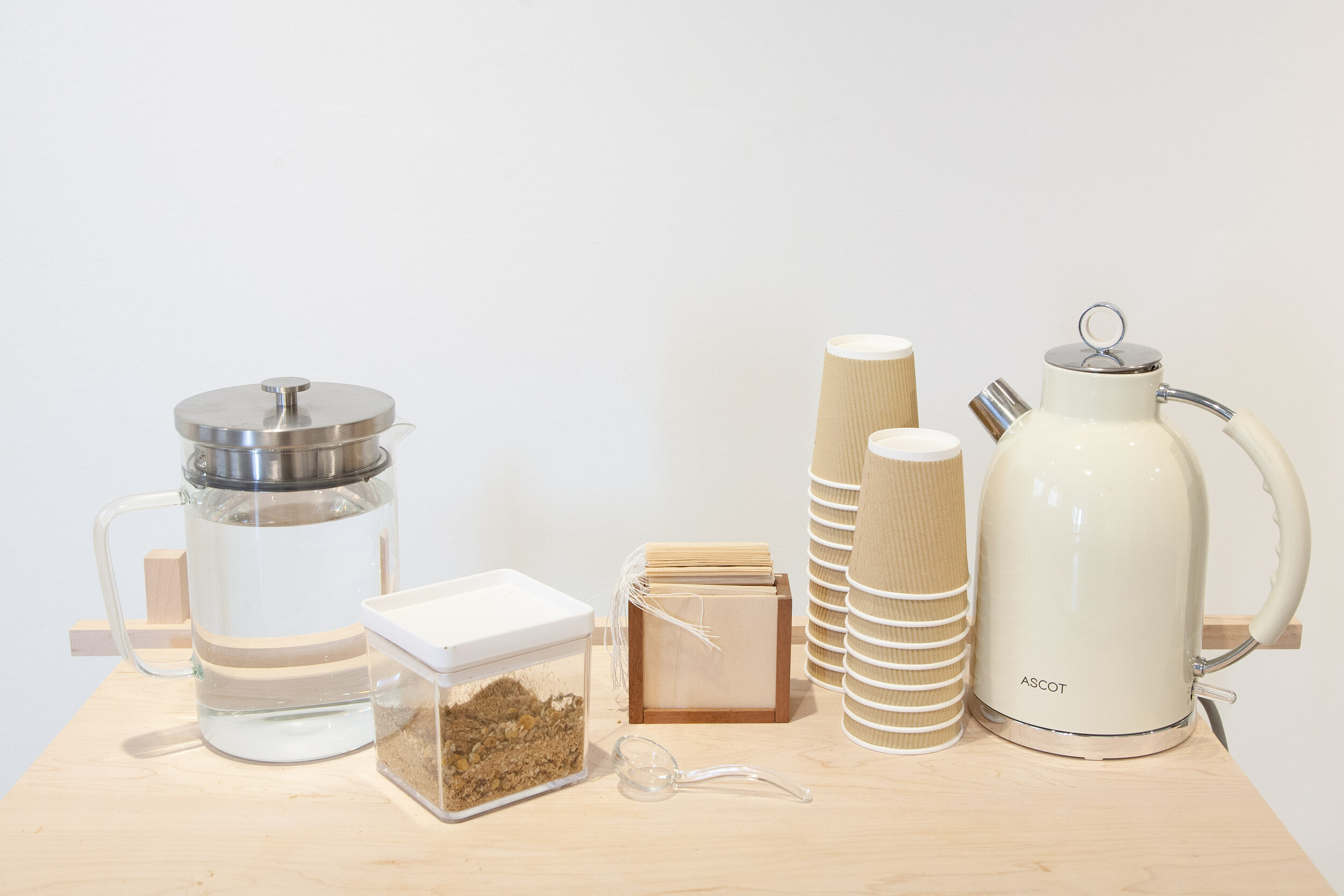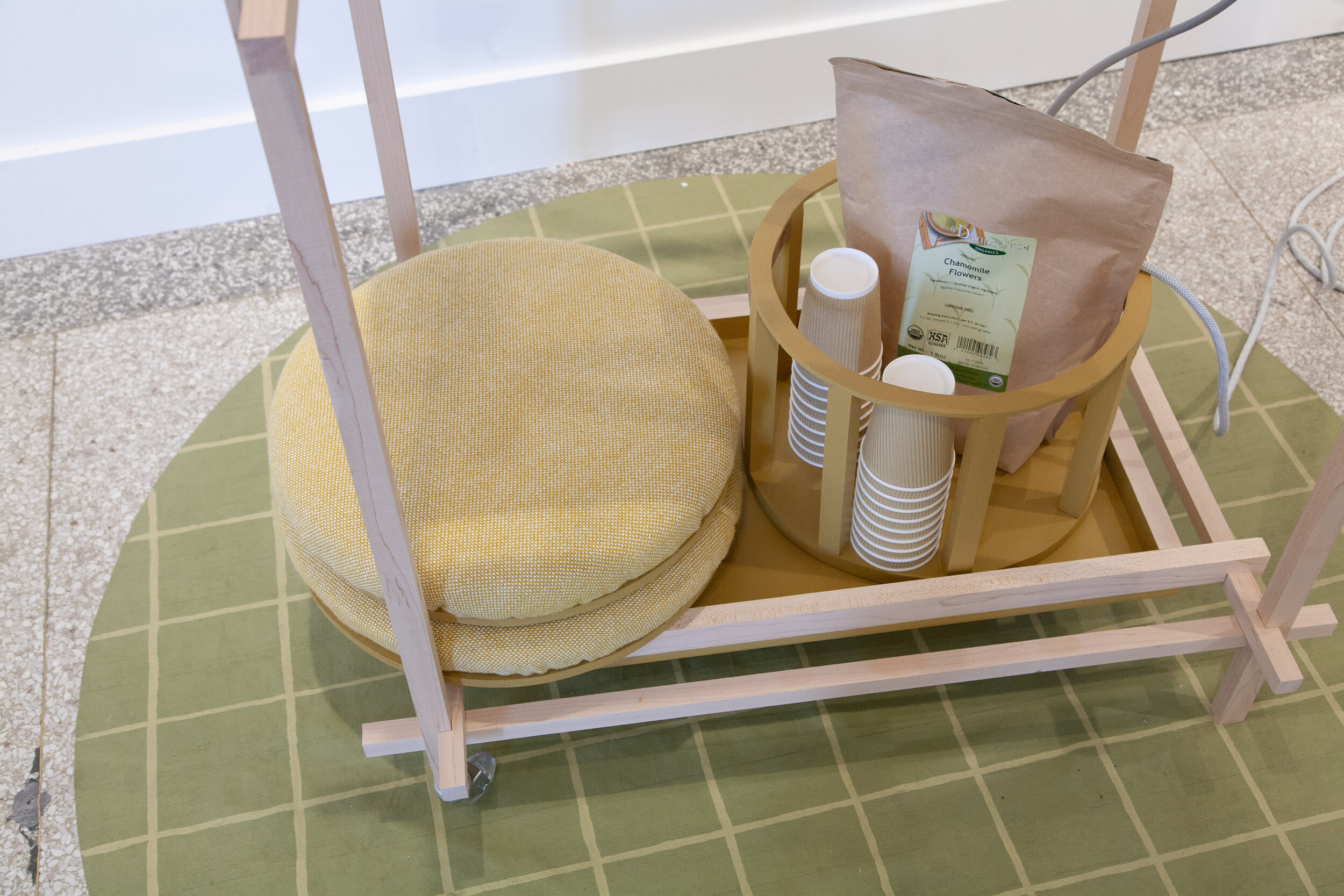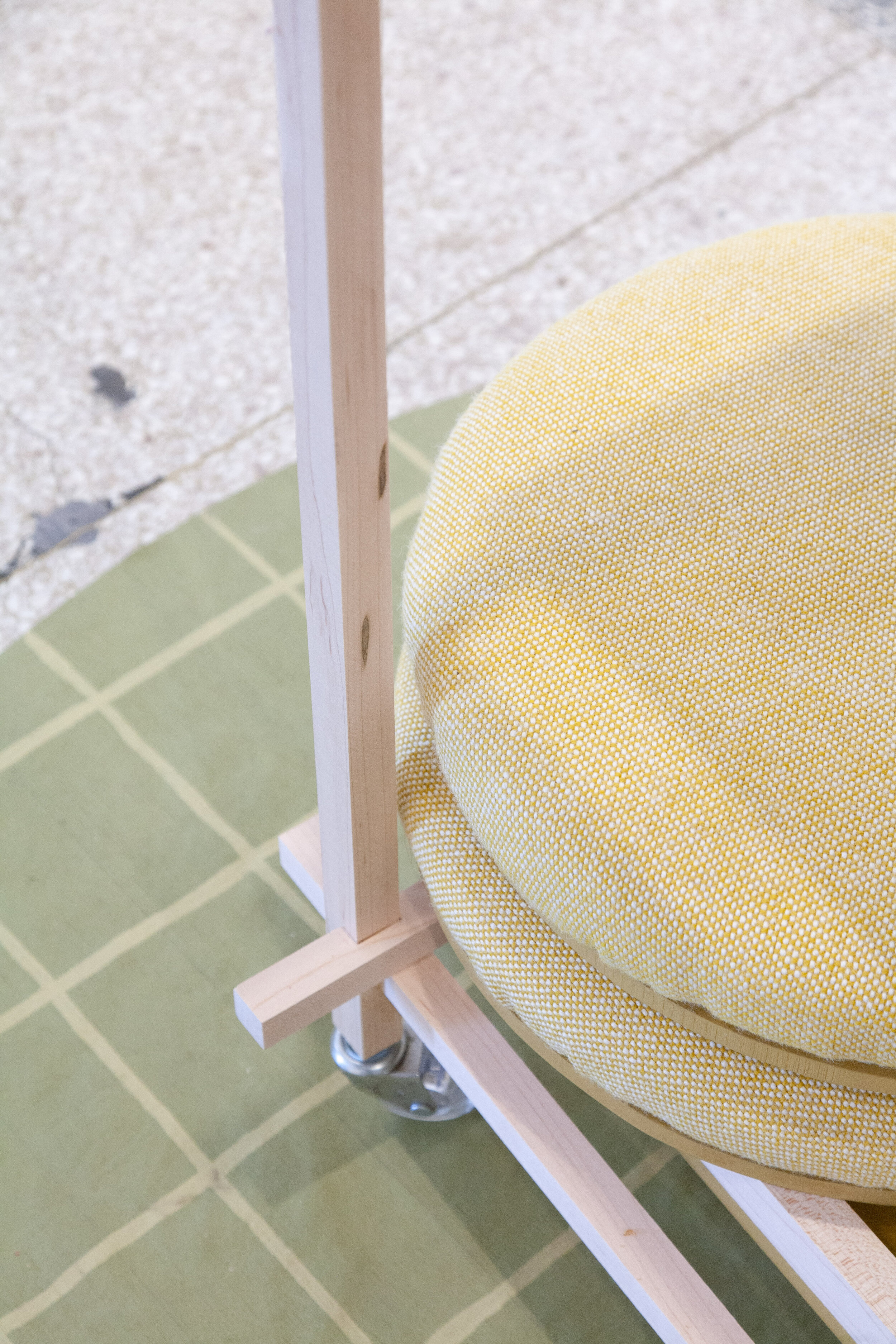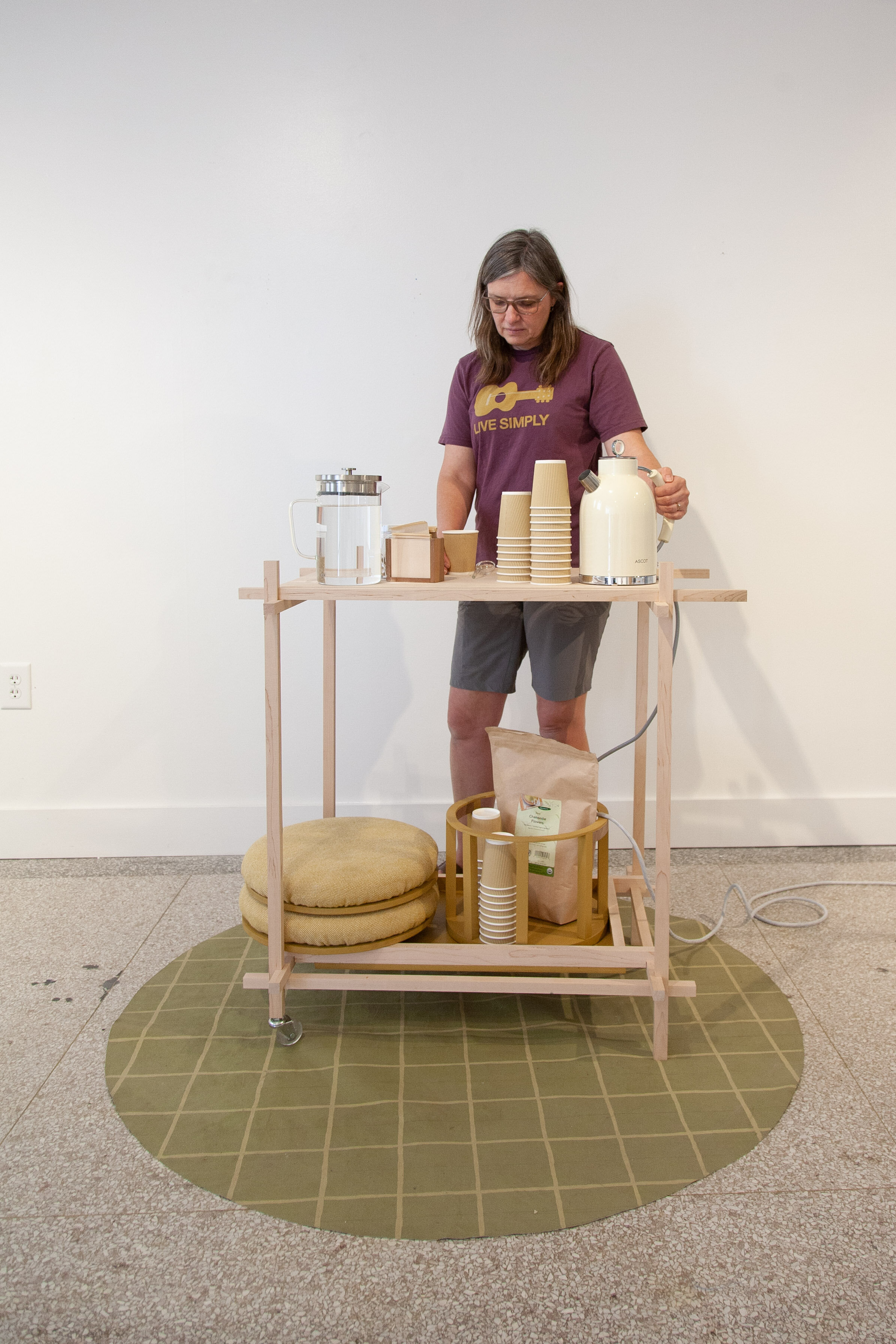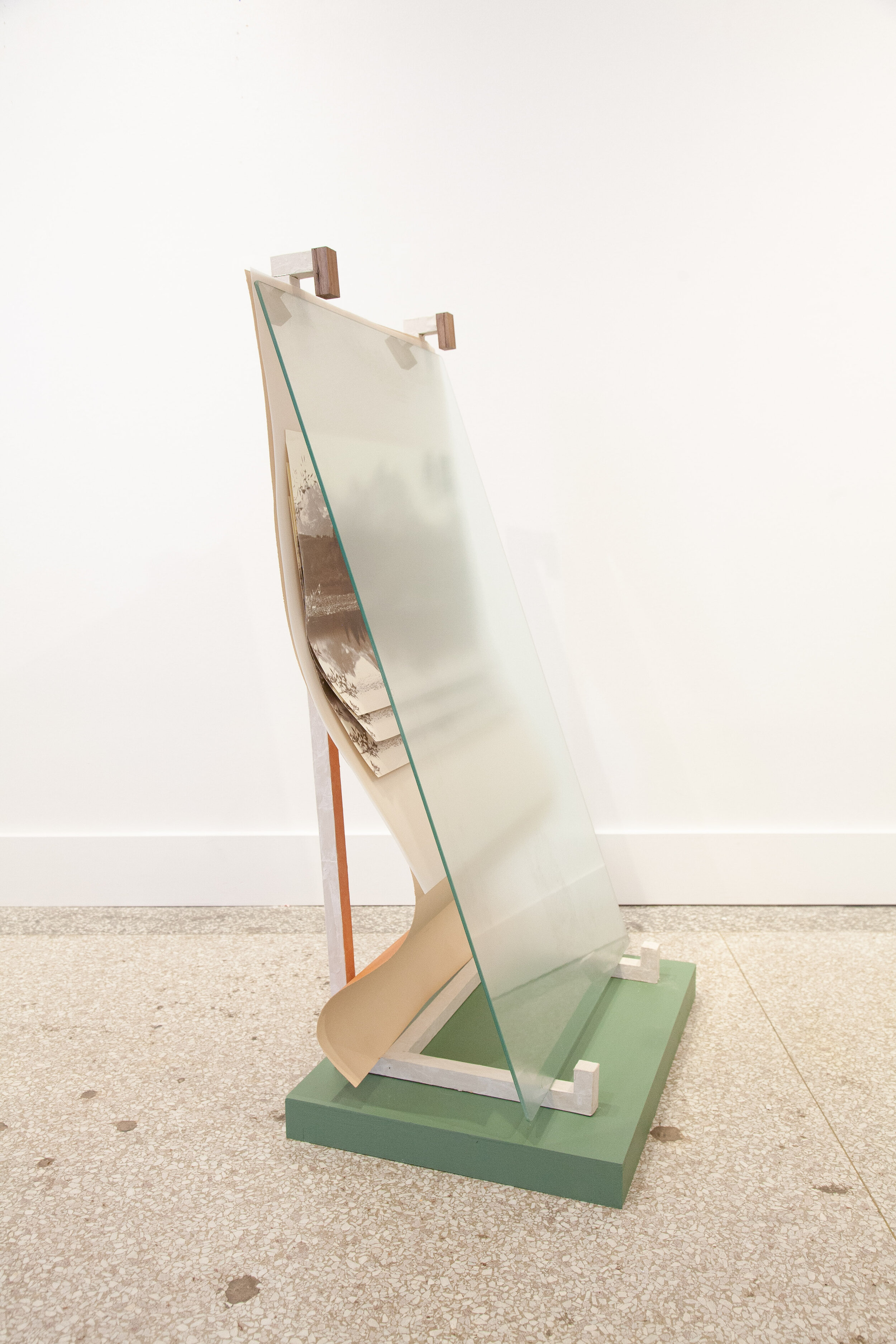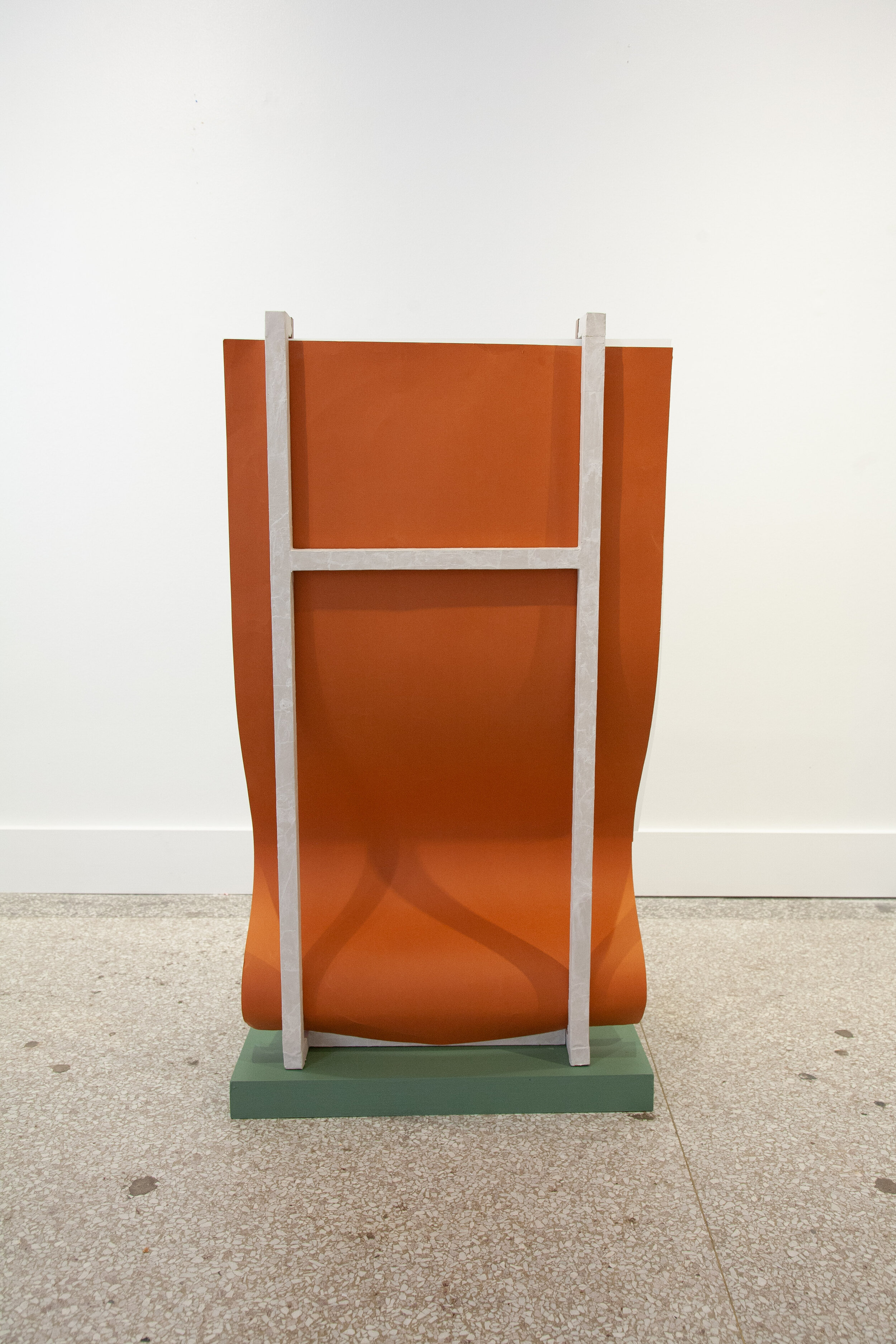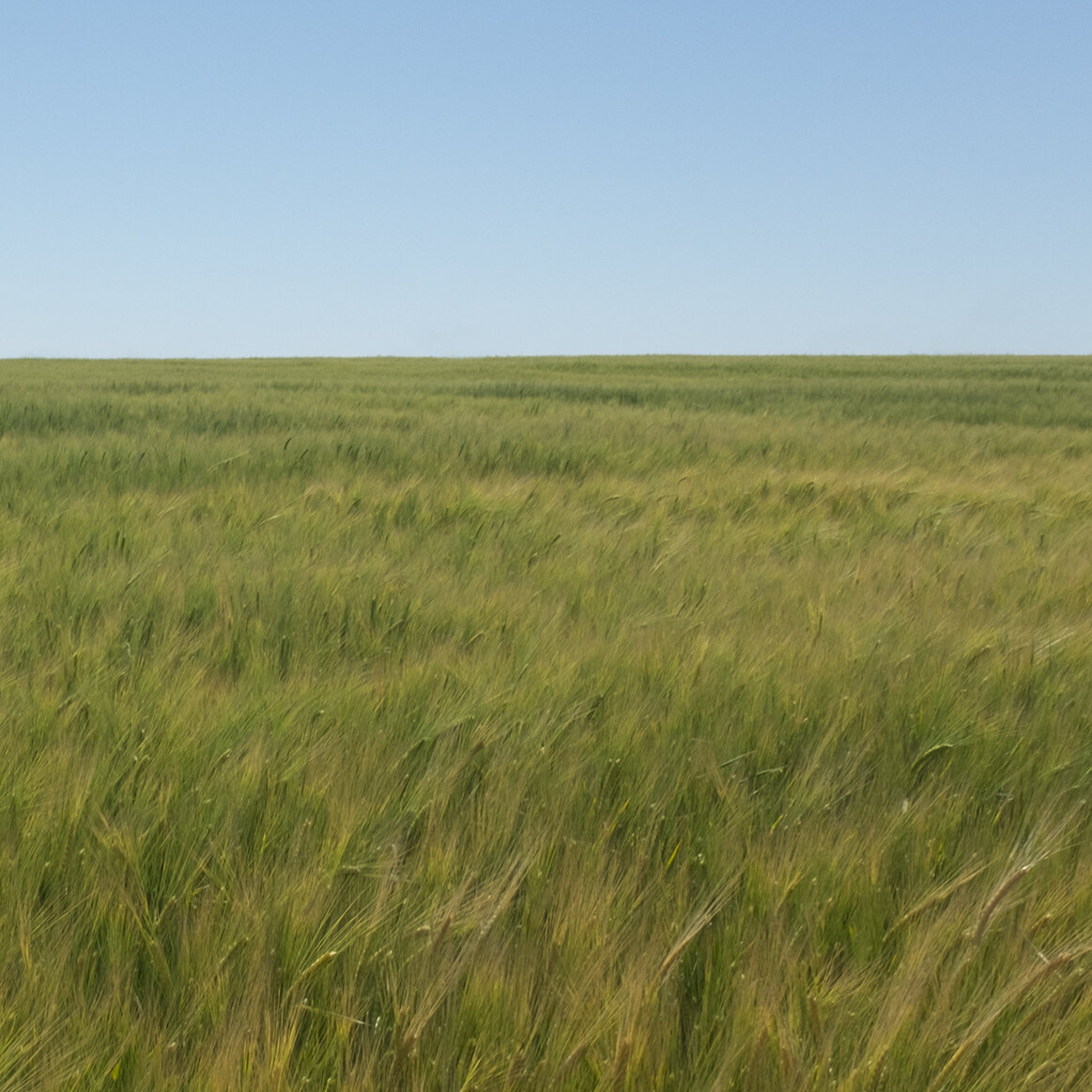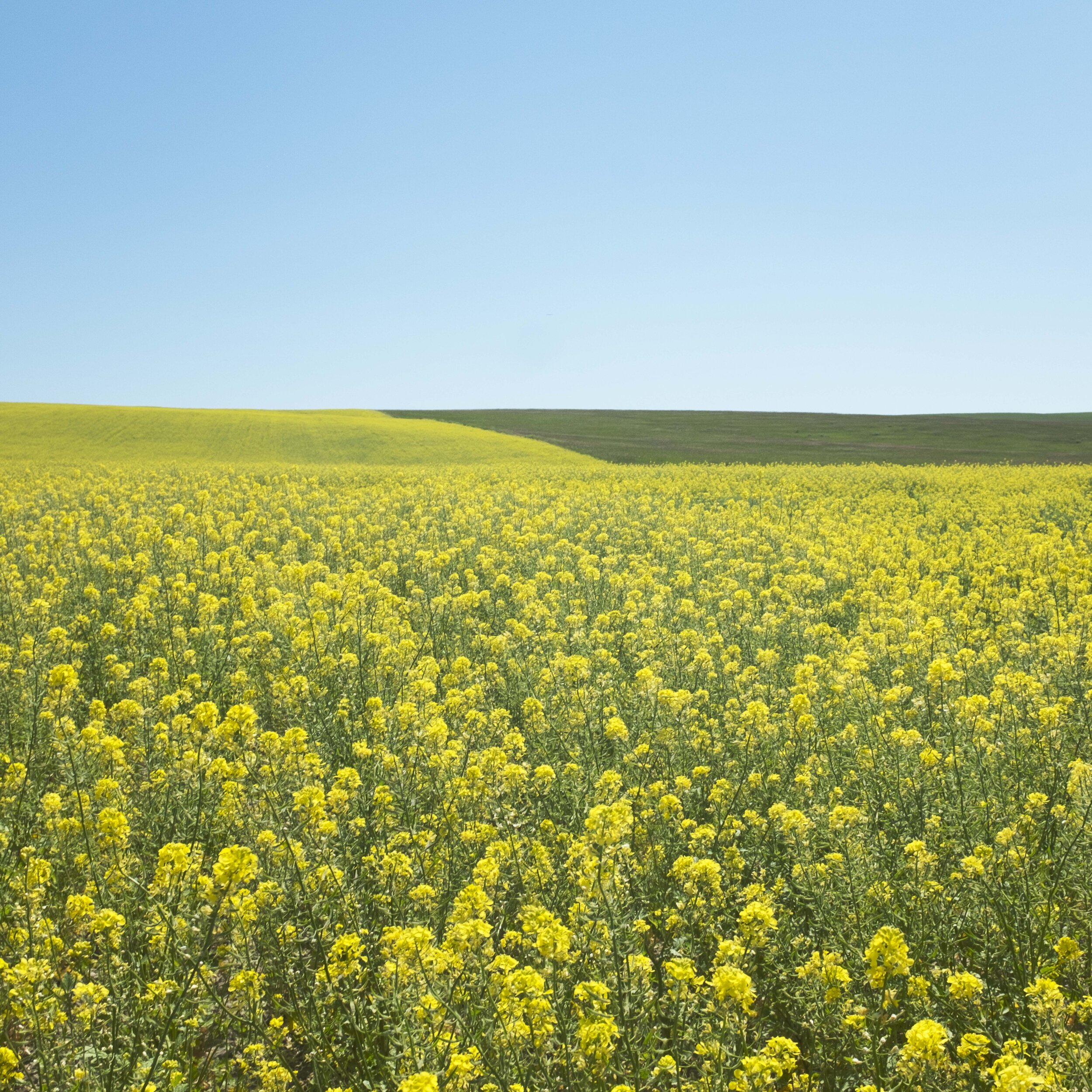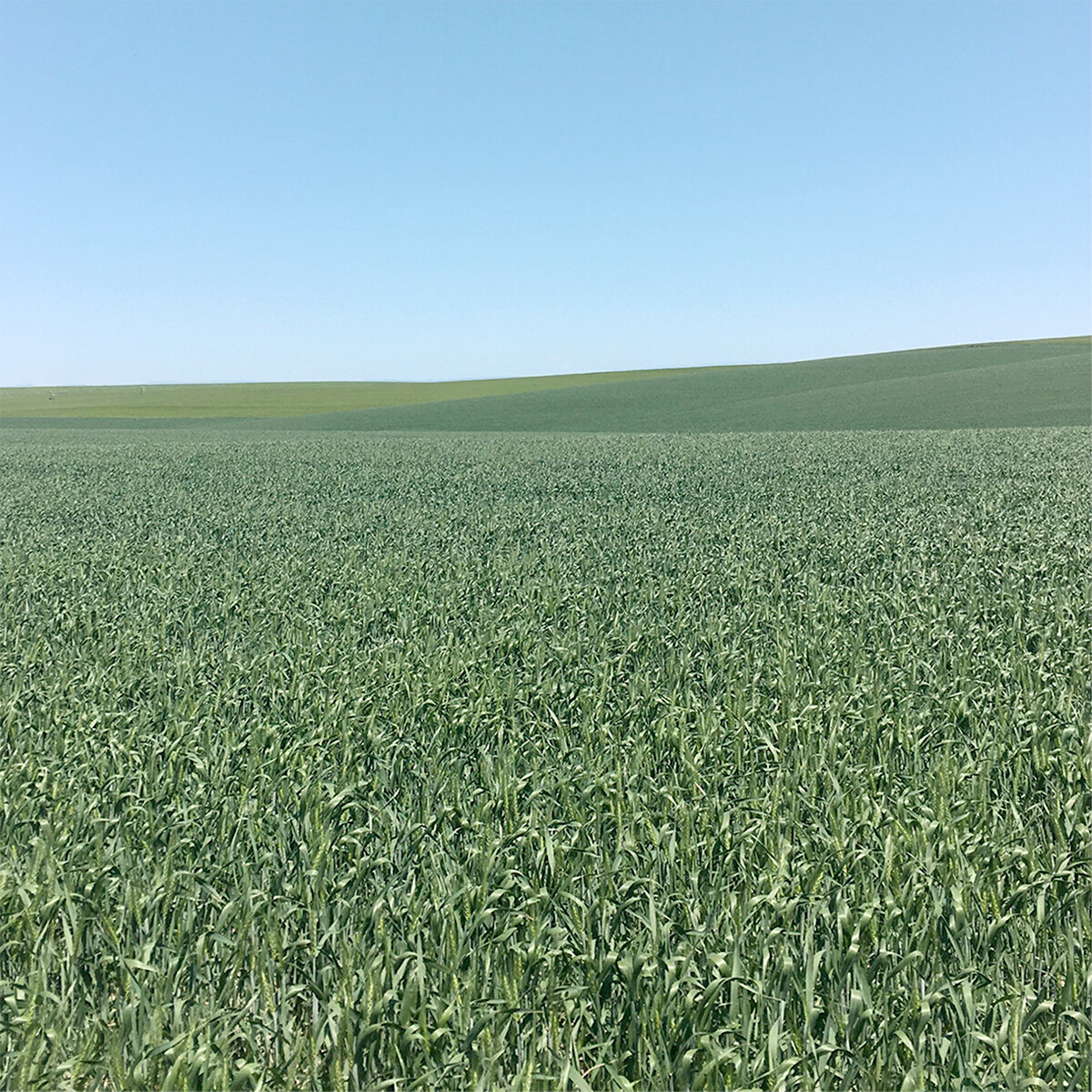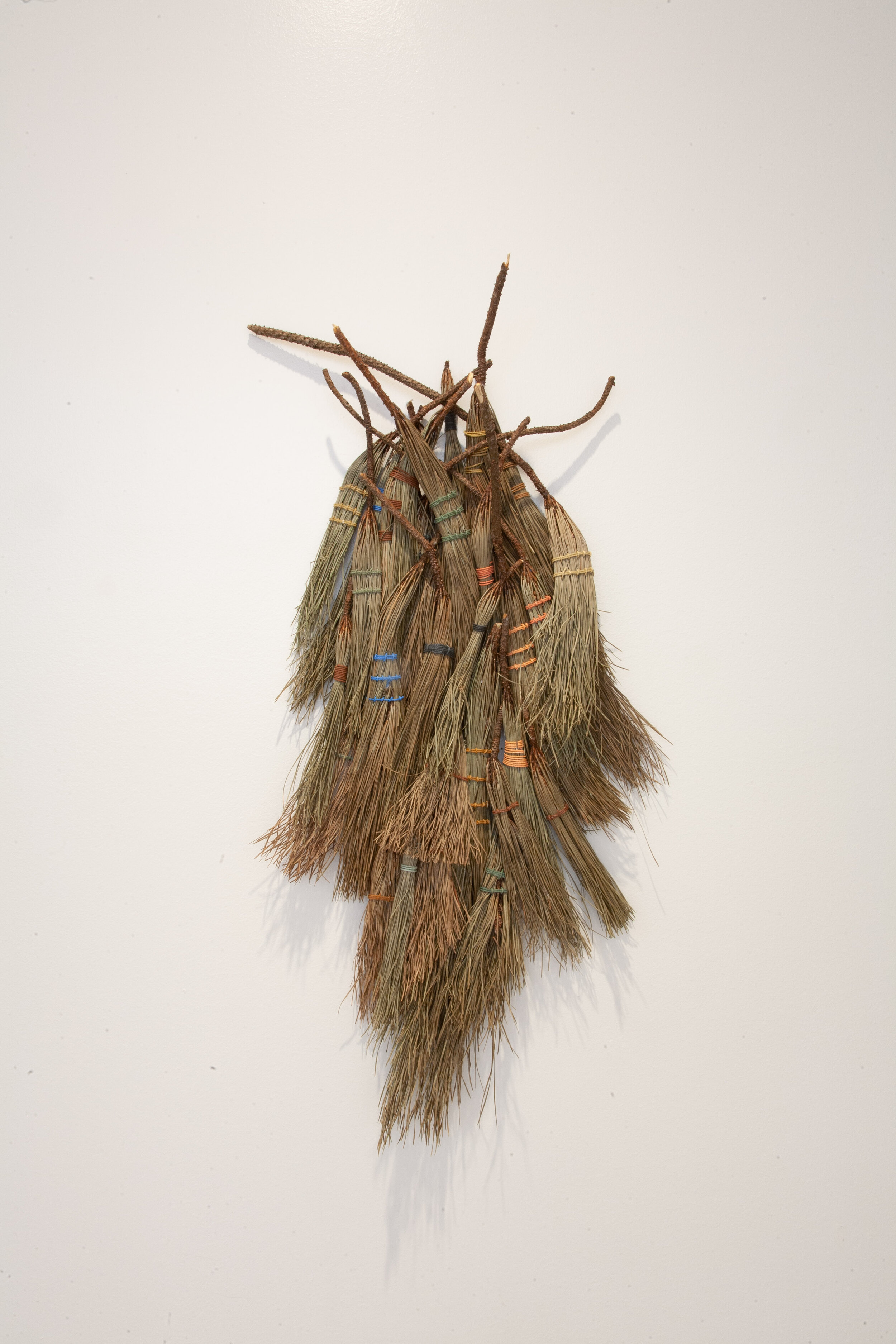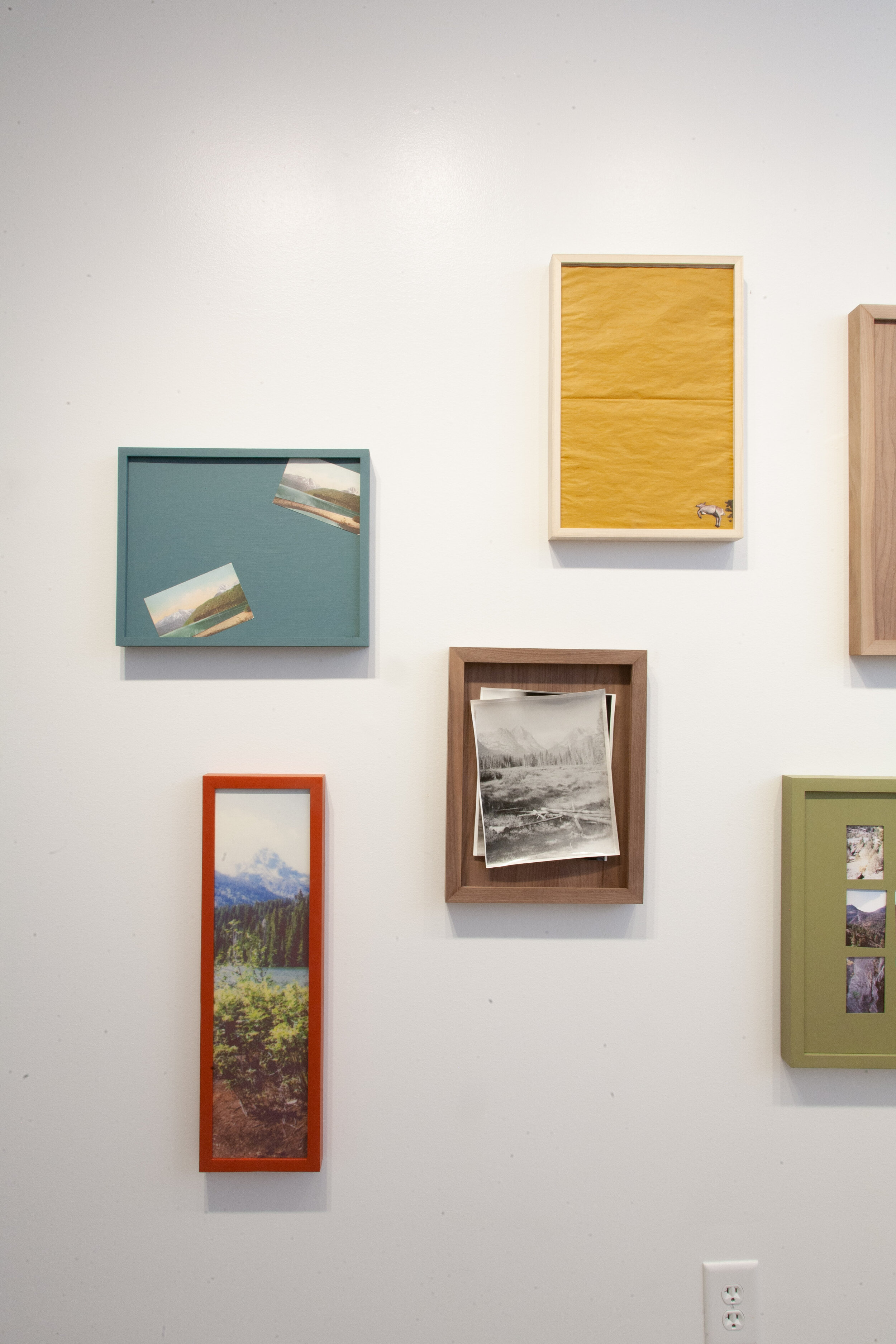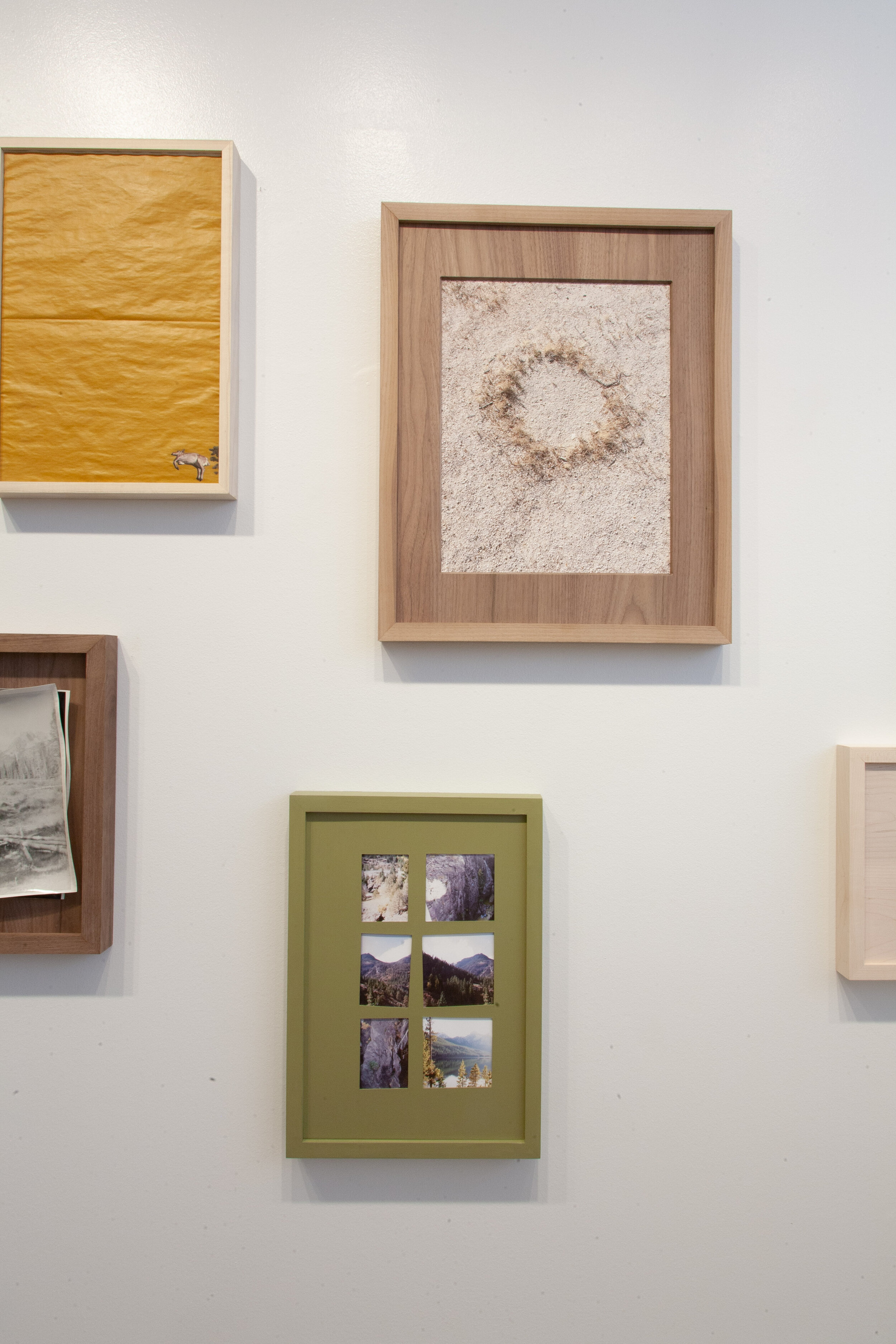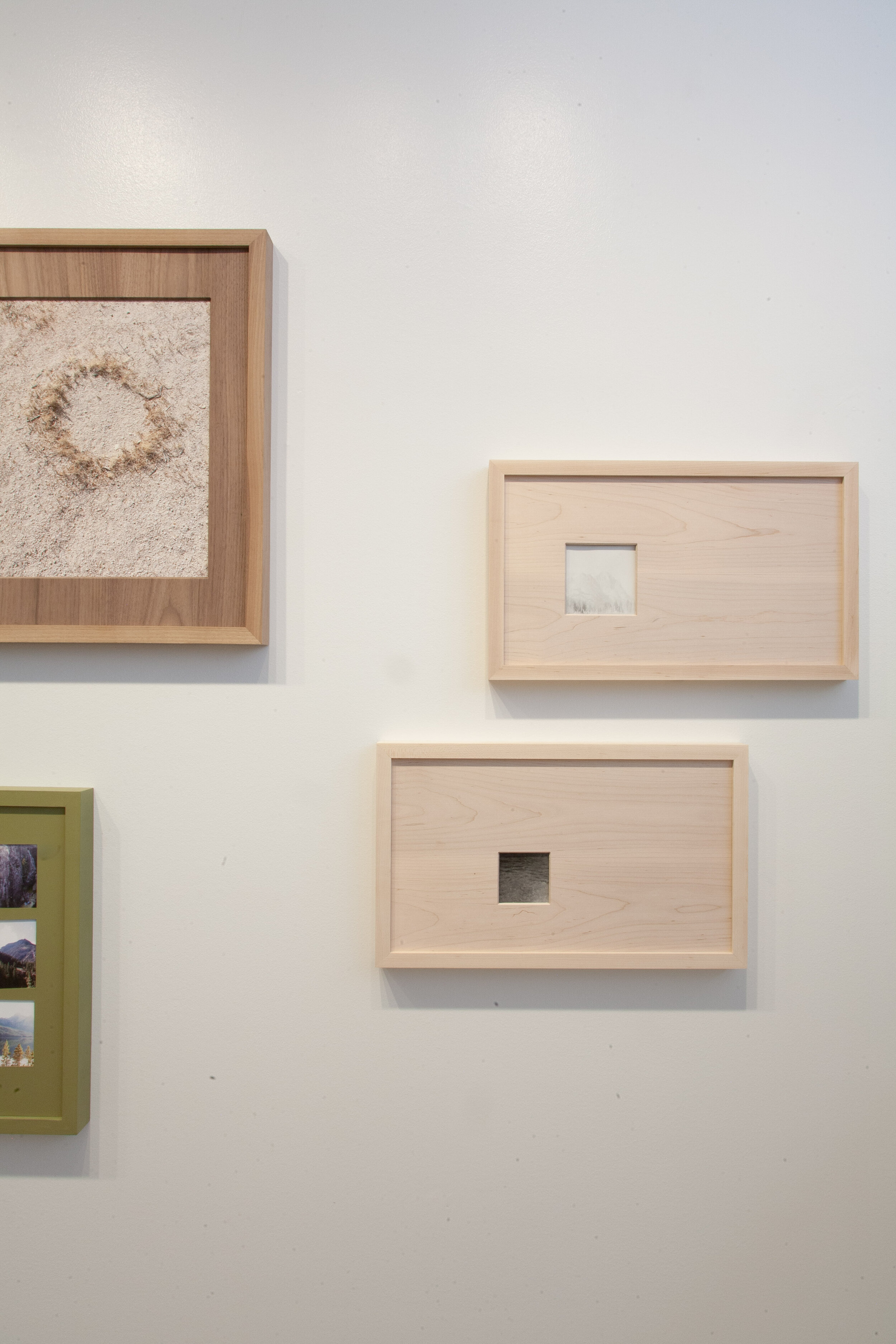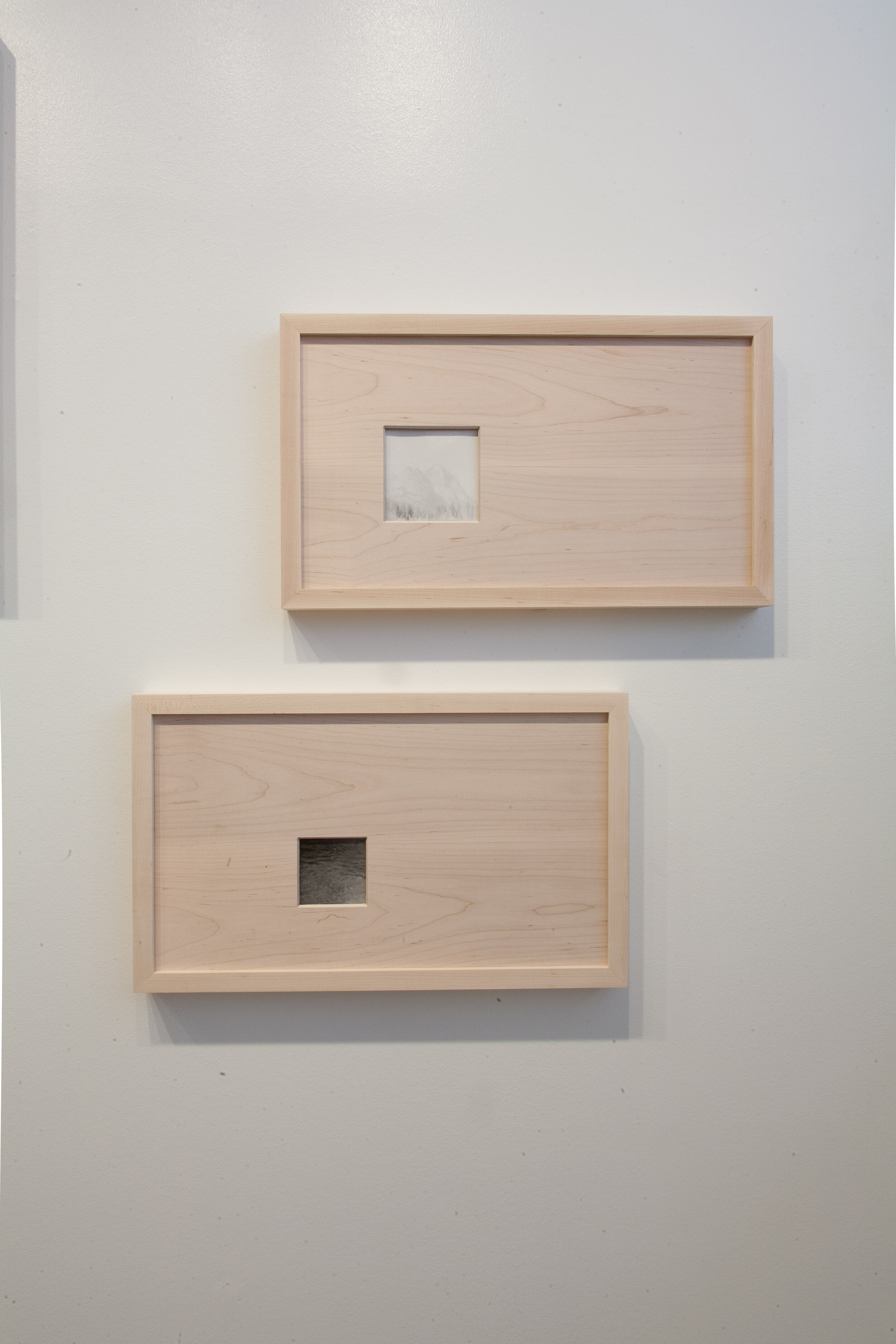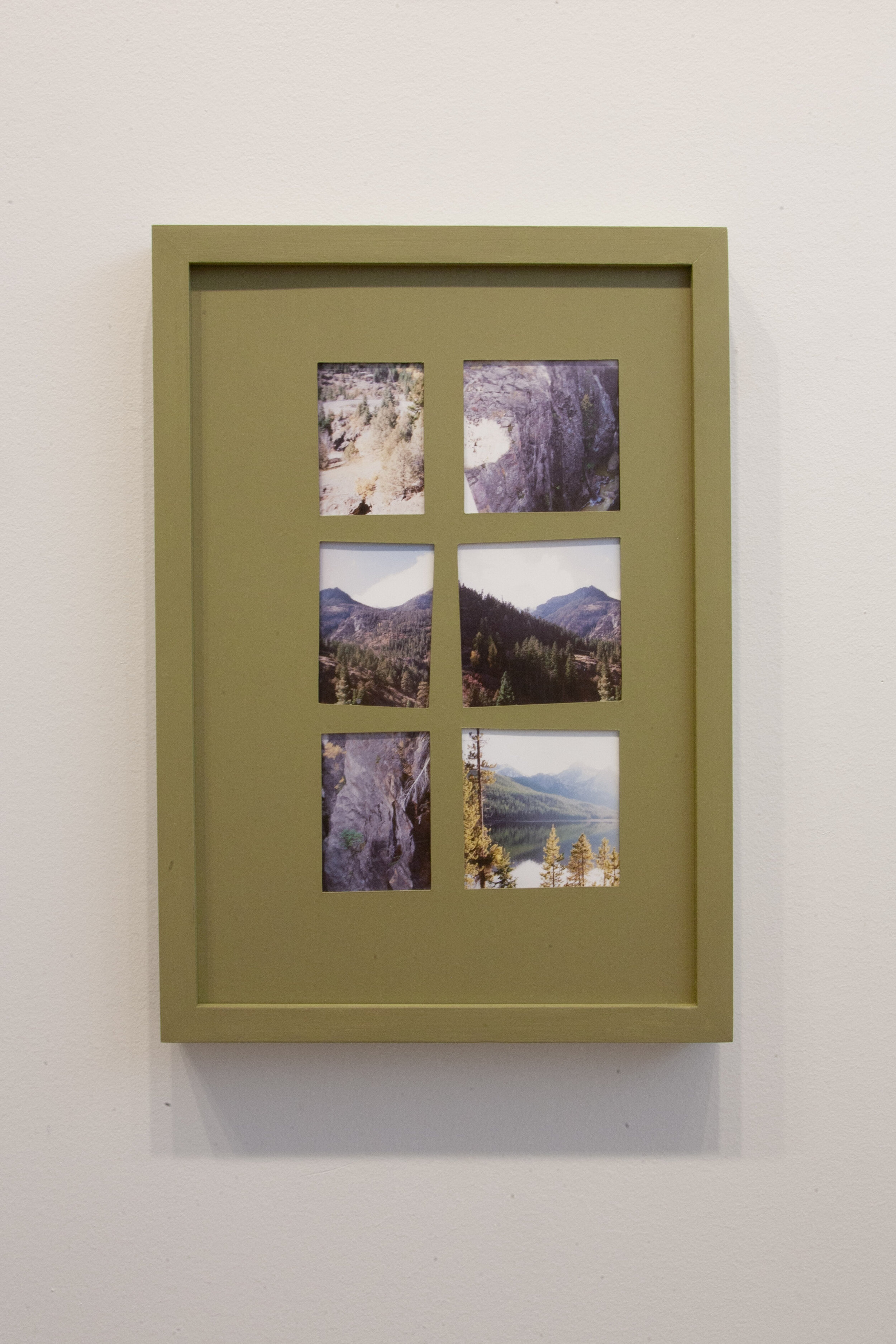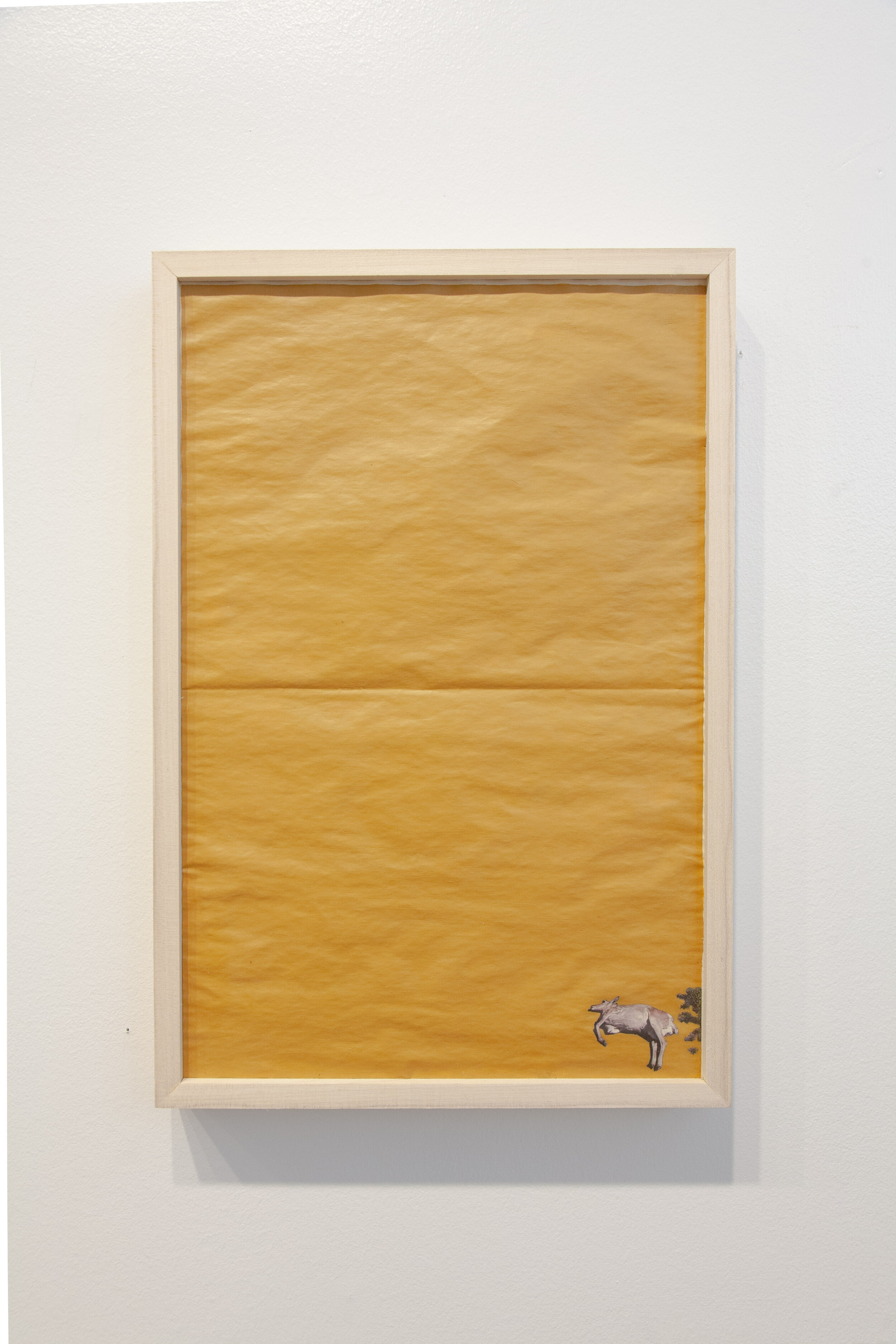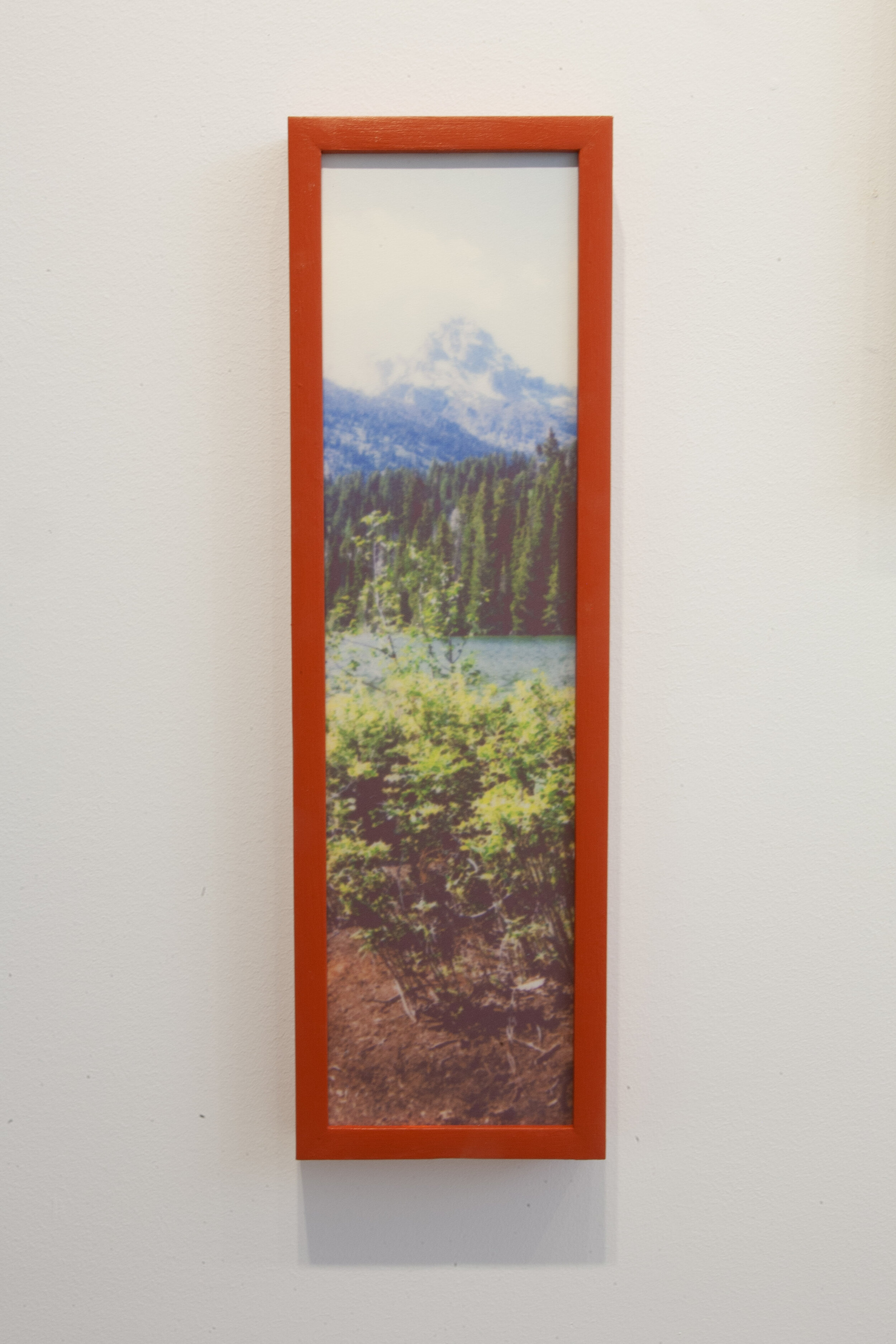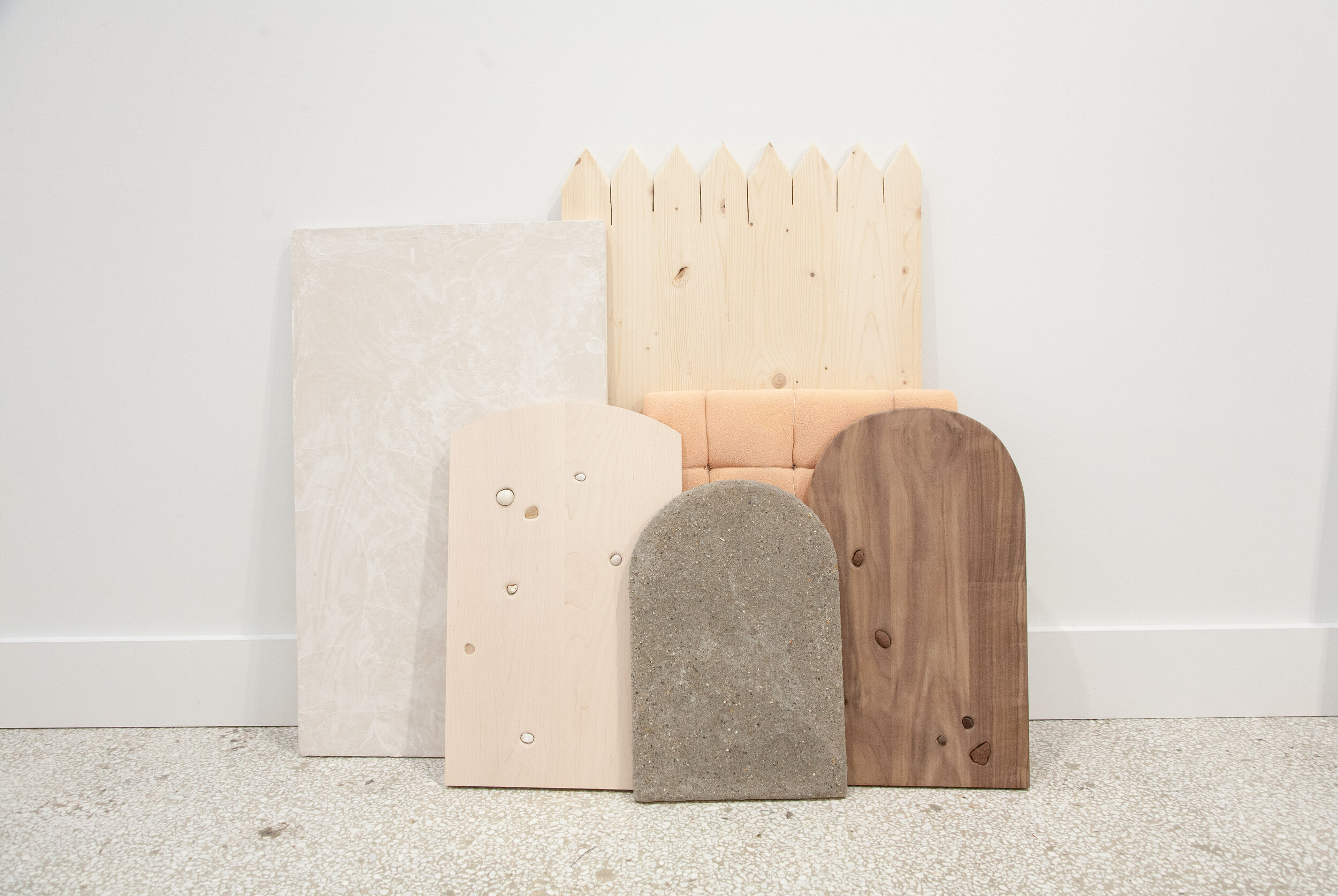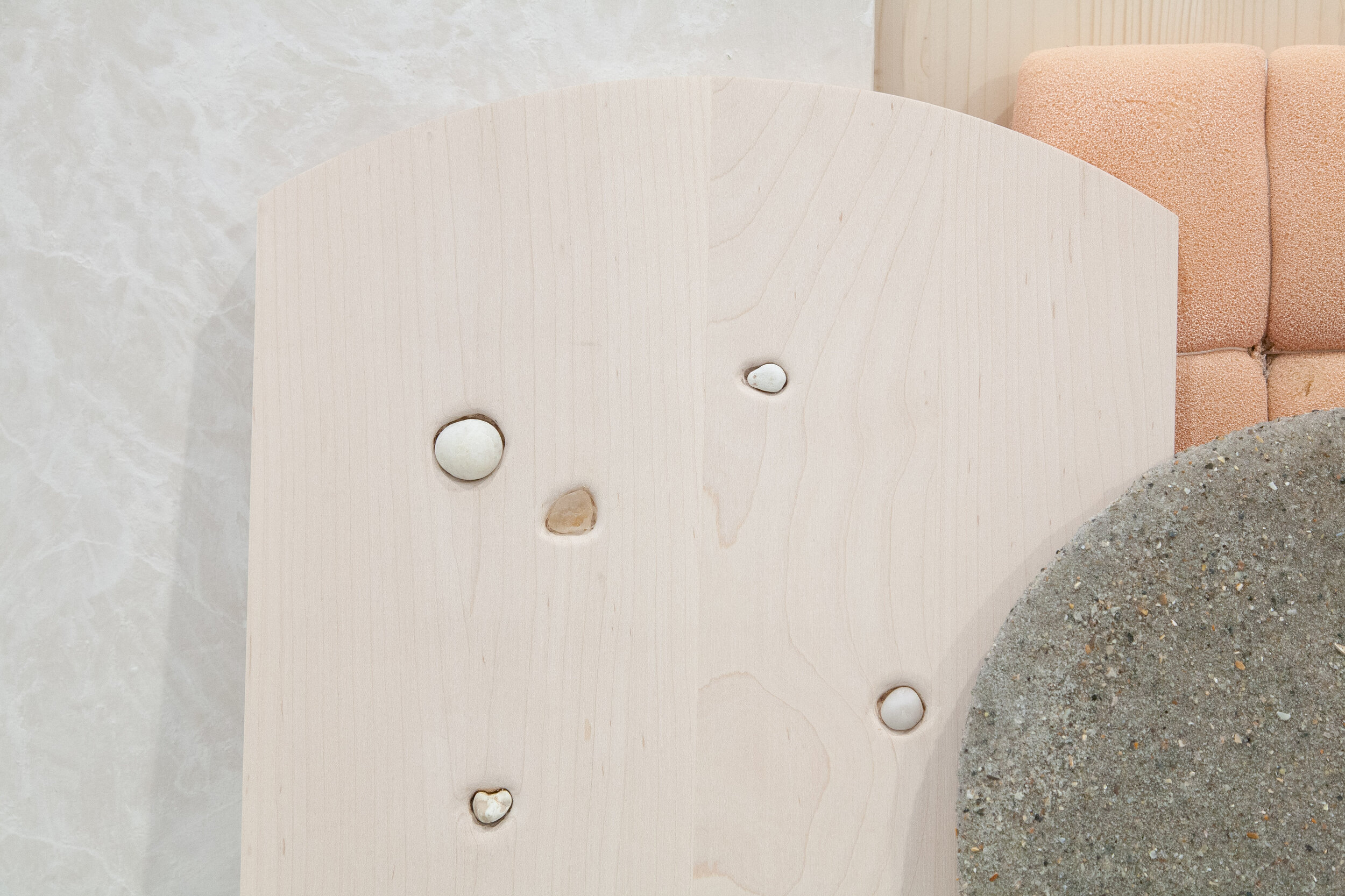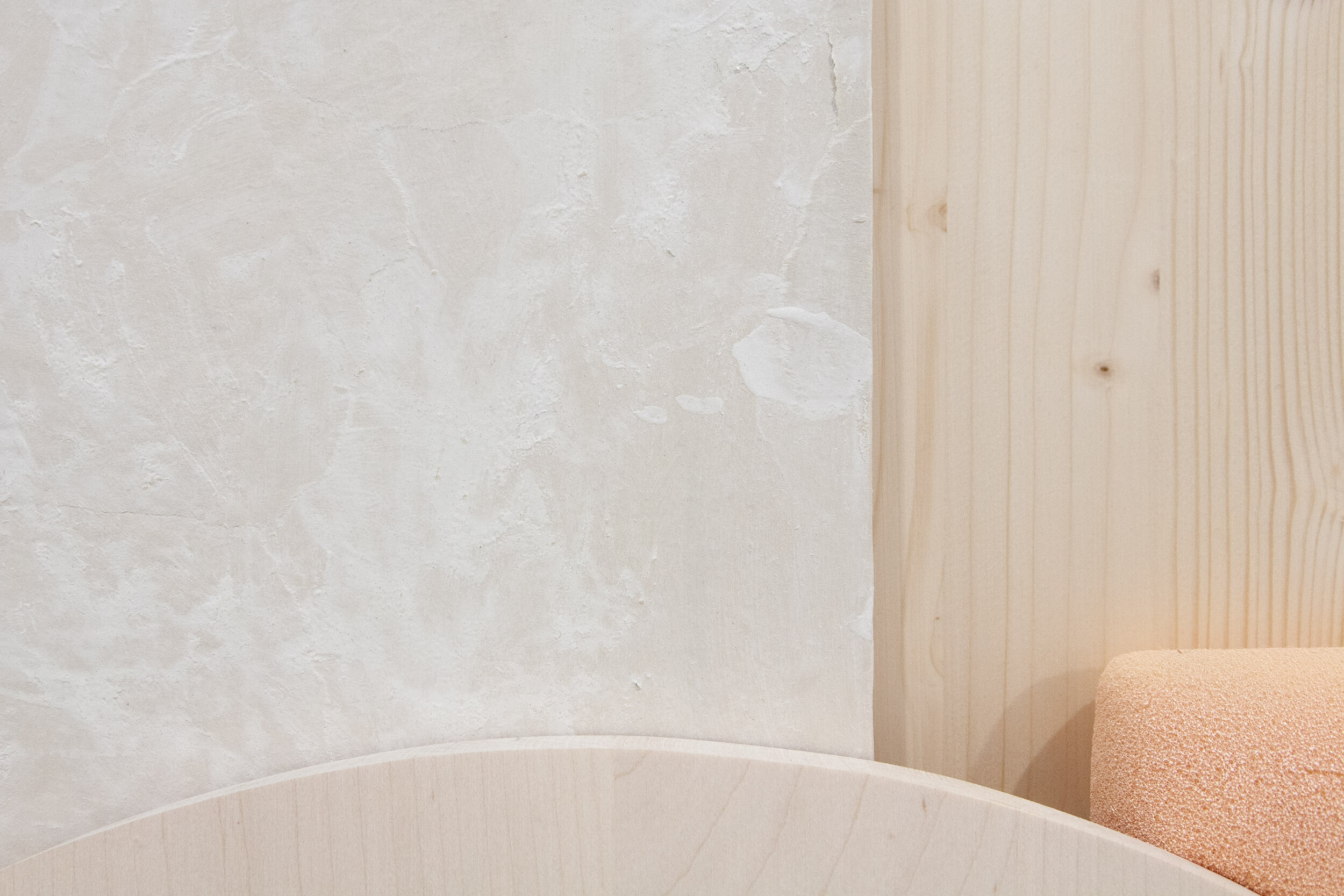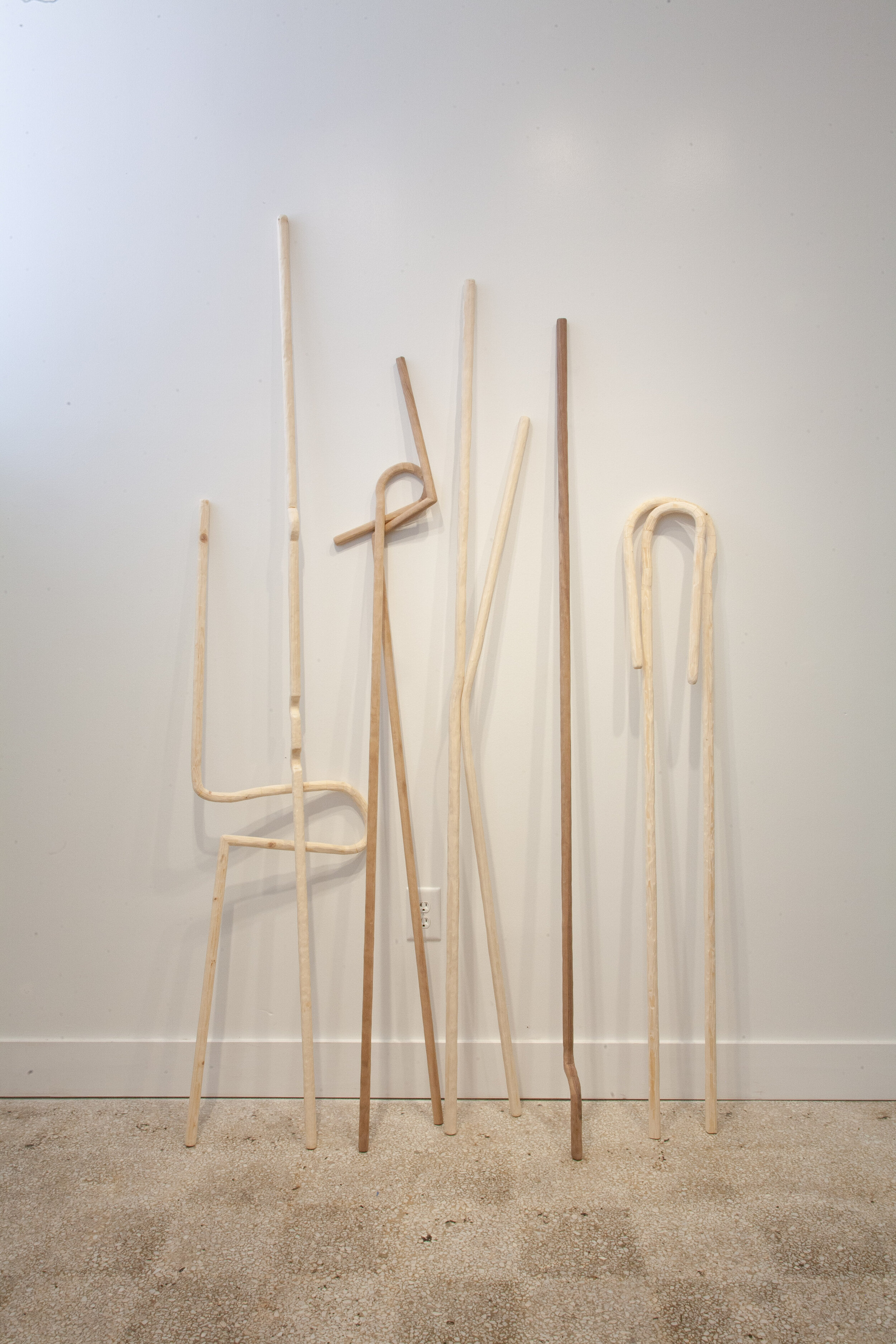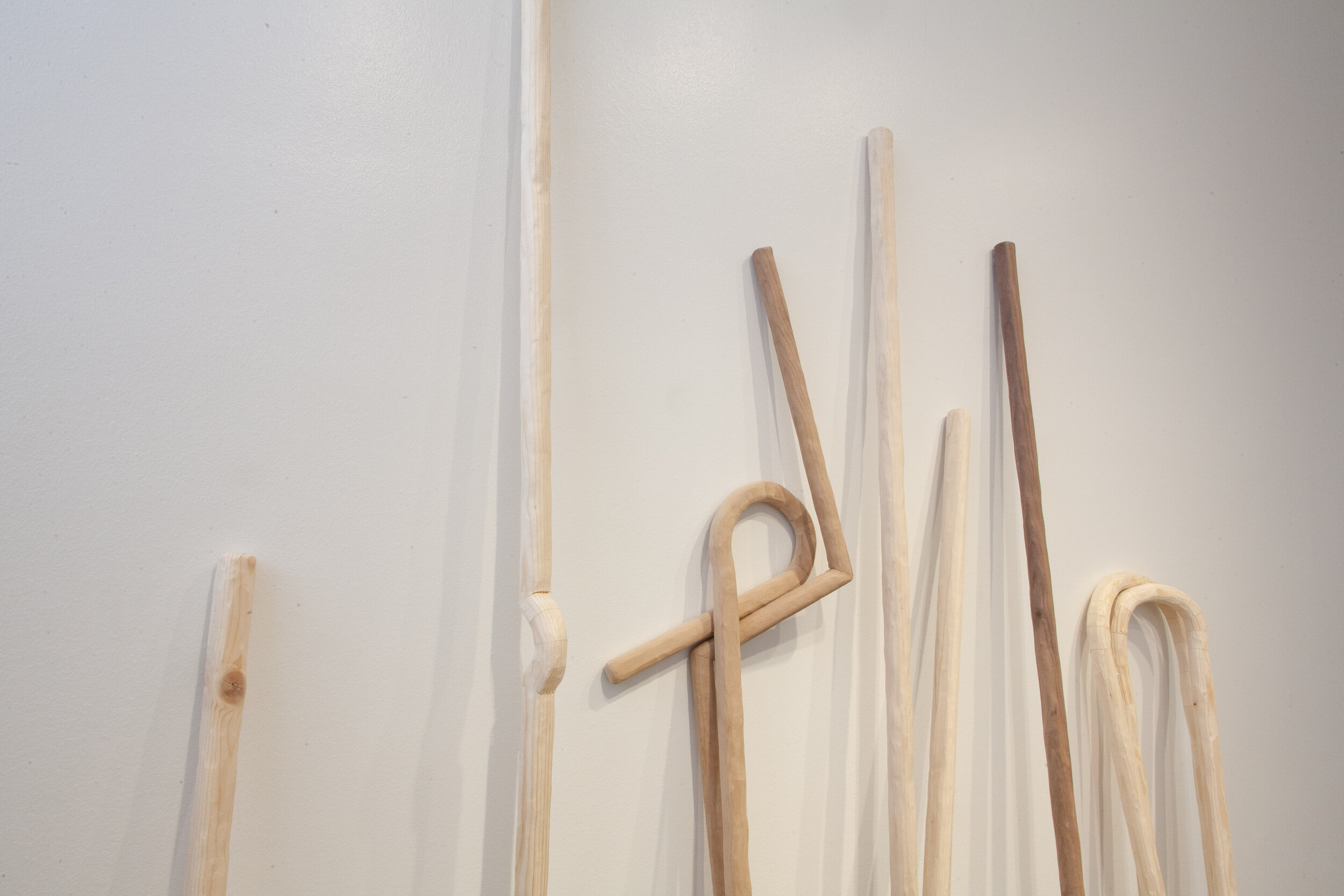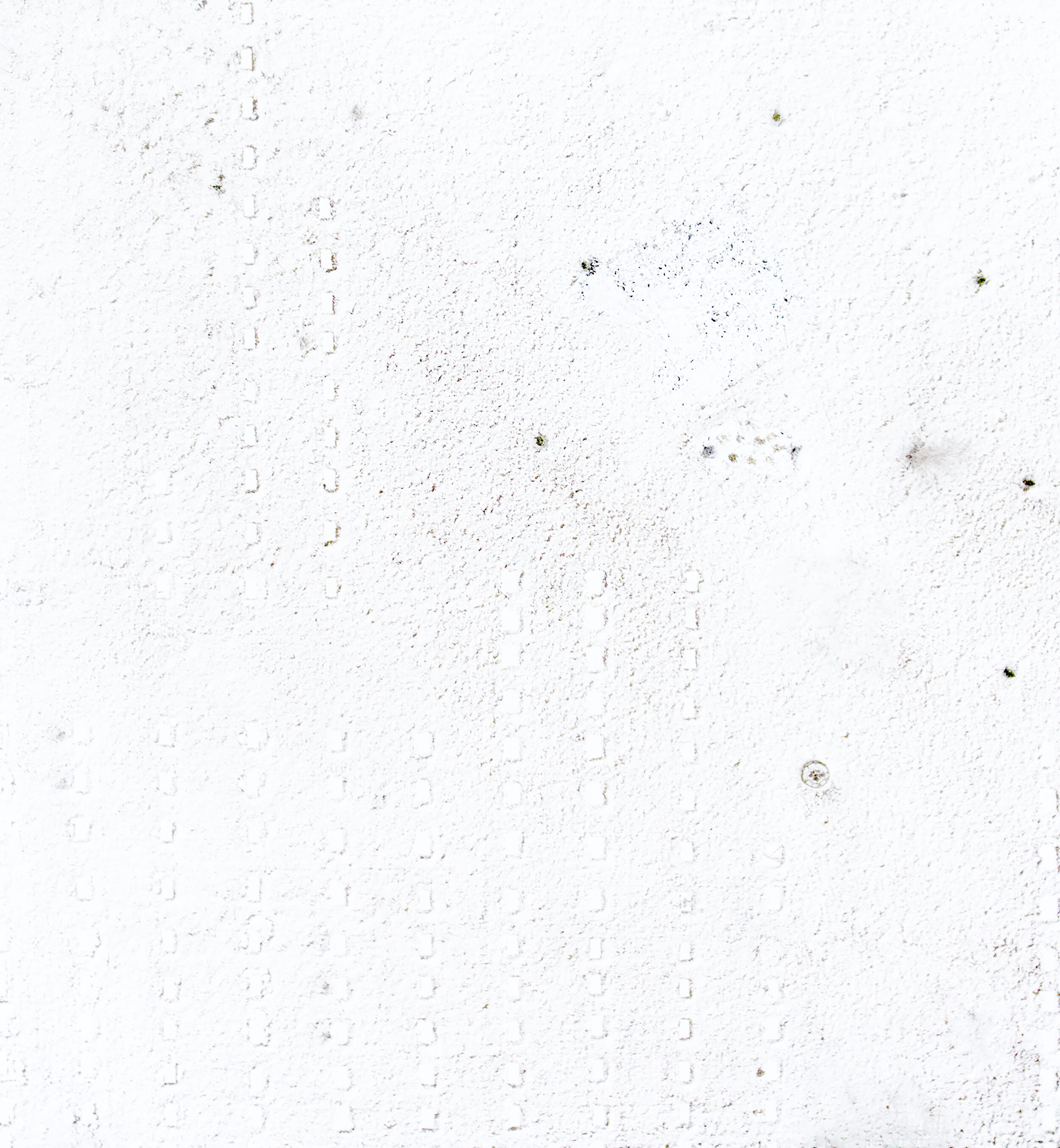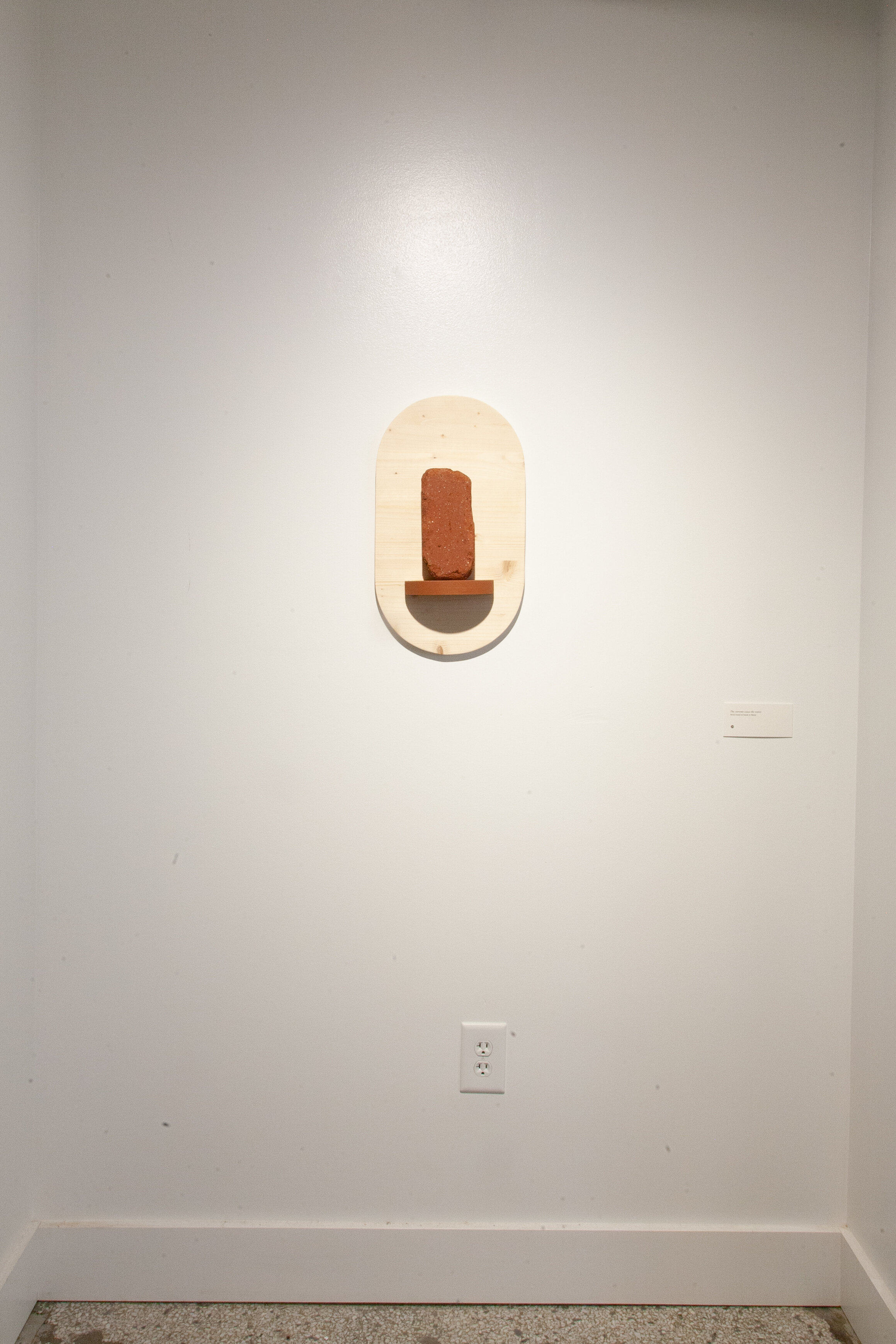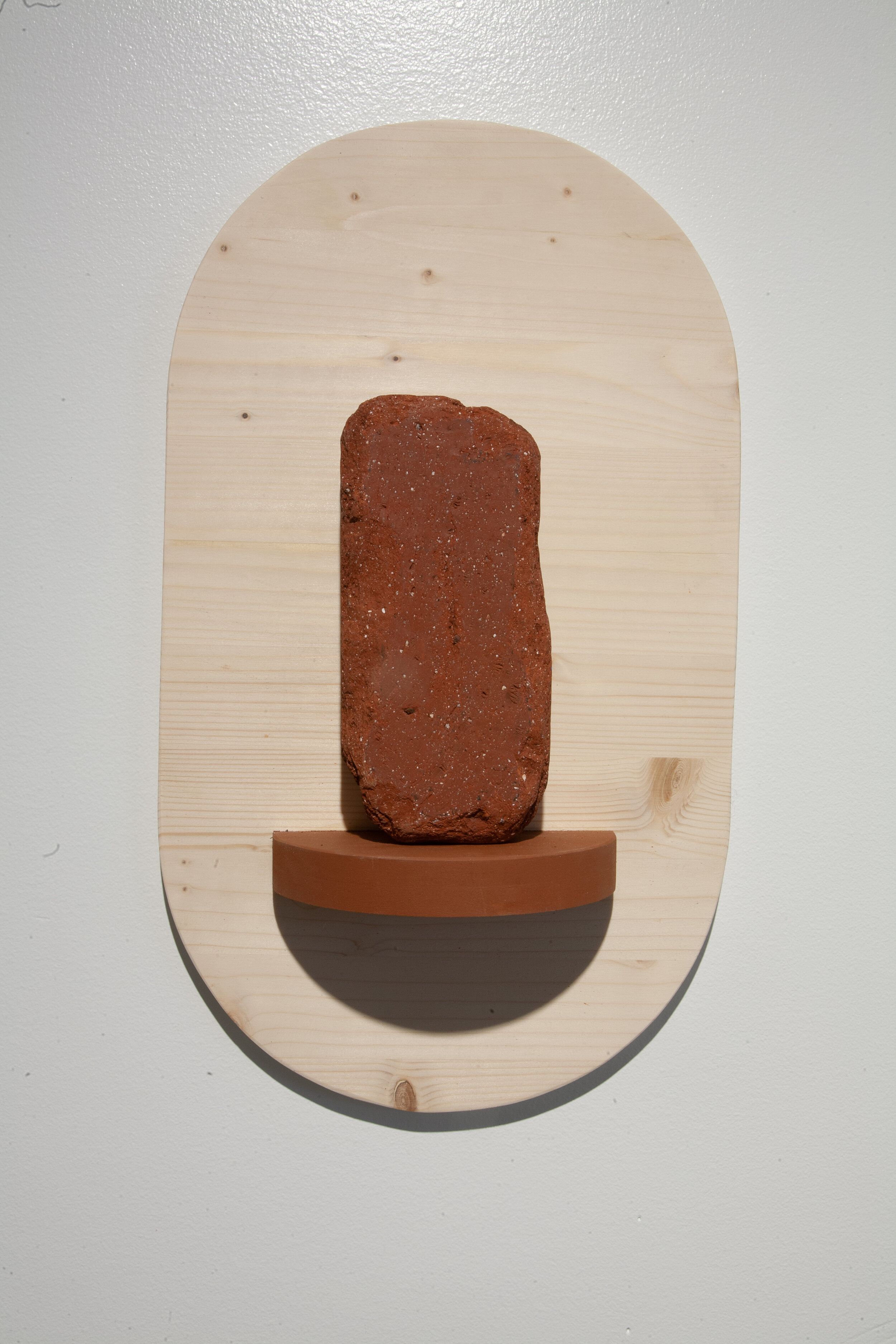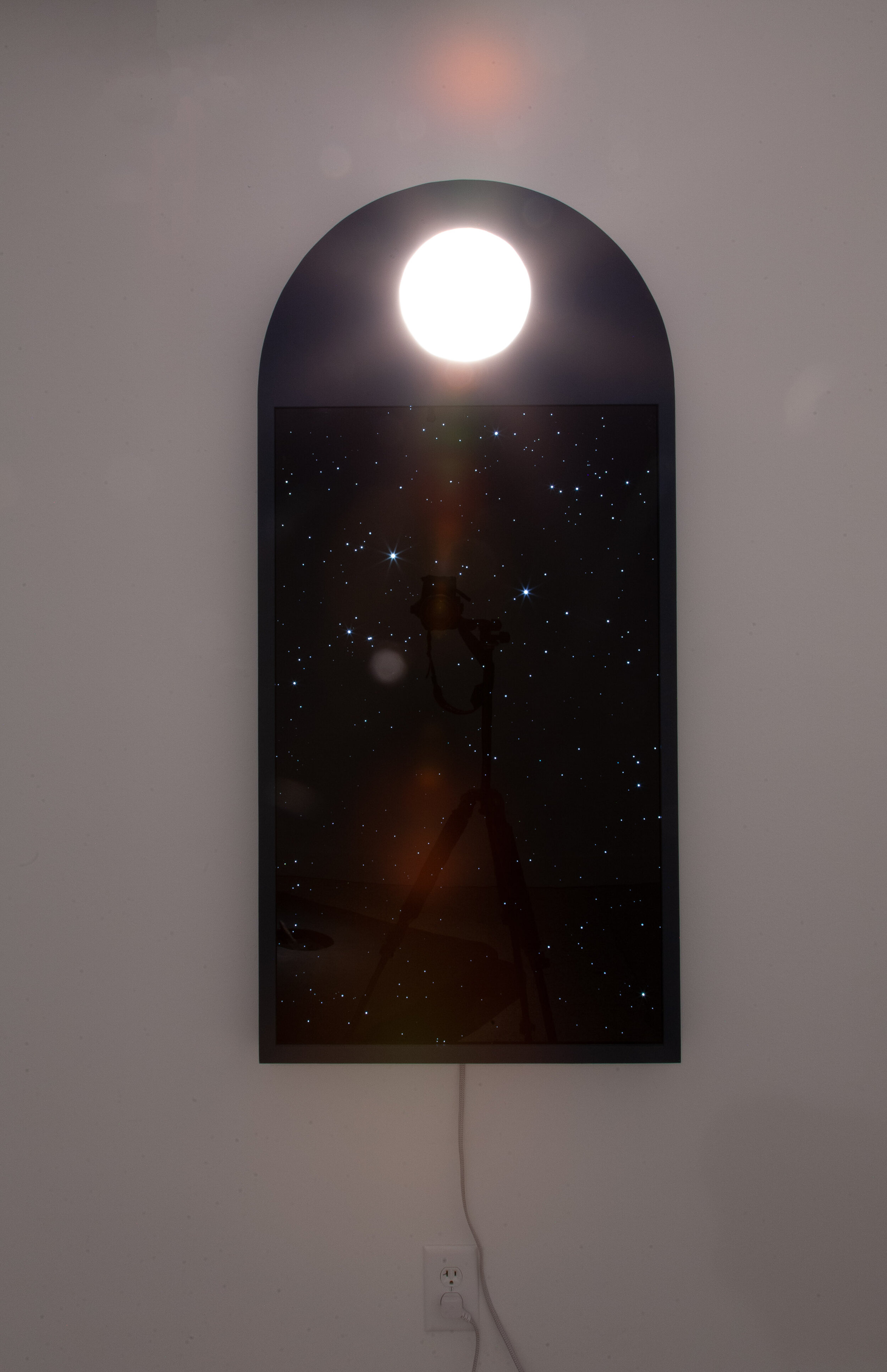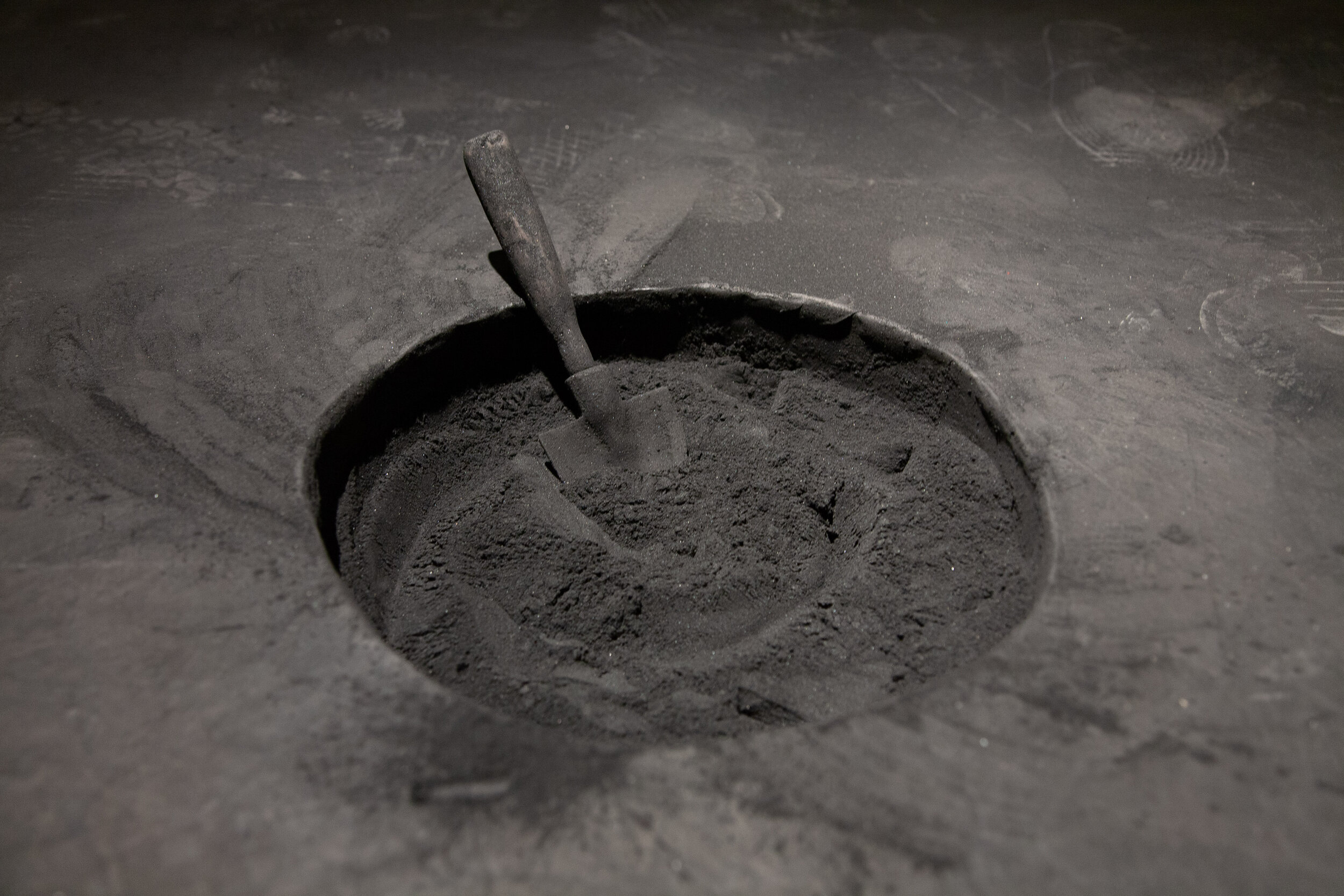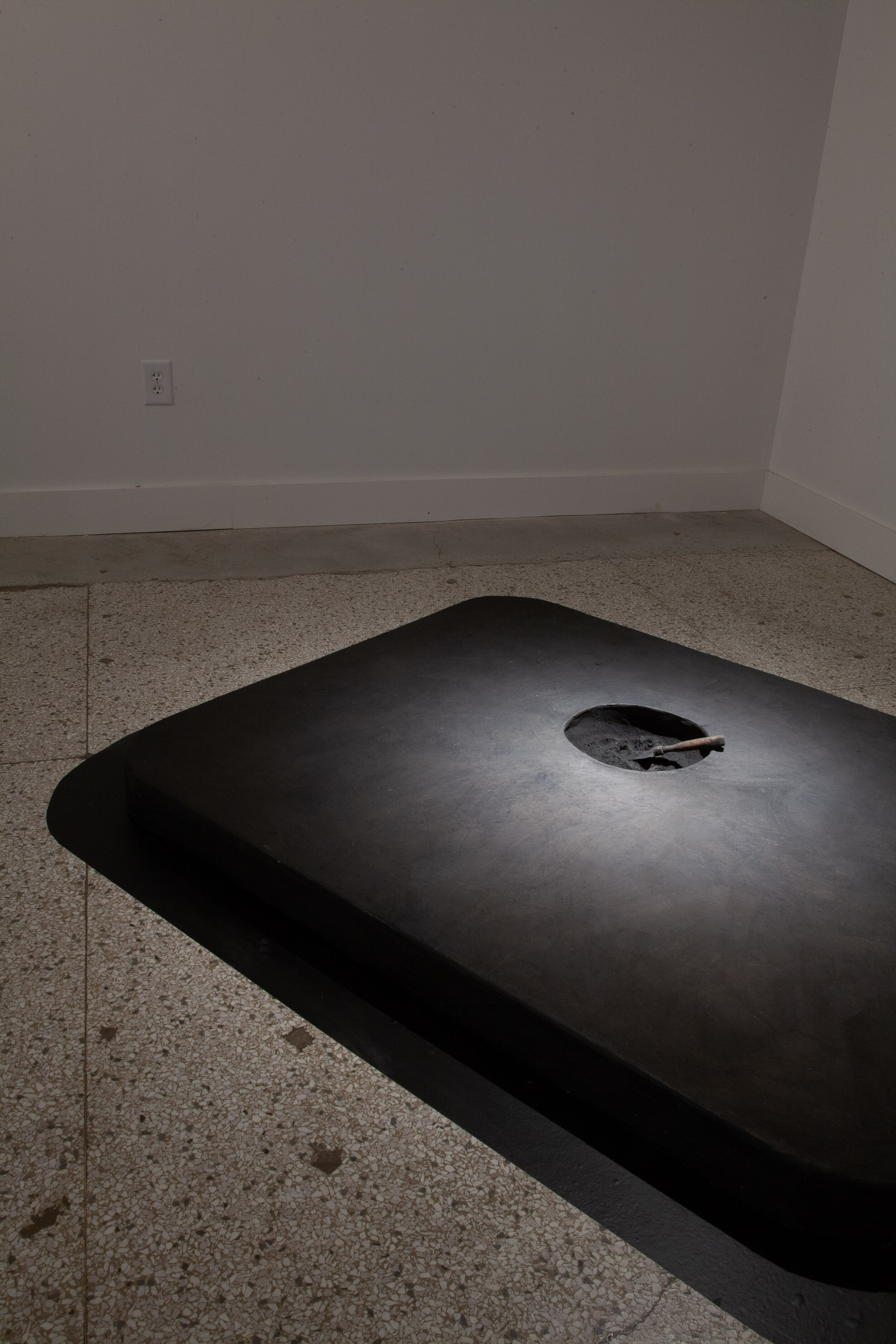keep in touch
Solo Exhibition, Greensboro Project Space, 2021
INSTALLATION
ACTIVATION
ARTIST STATEMENT
My creative practice is about developing a sensitivity and curiosity towards myself and my world as much as it is about the formal qualities of creating objects. For the longest time, I considered myself a taker more than a maker––constantly absorbing my surroundings and capturing them in photographs to contemplate, question, and appreciate. Through events in recent years, including my participation in graduate school at the University of North Carolina Greensboro, I have come to learn that making art does not simply mean making things. It means making time, making care, making space, making relationships, and making my life into whatever form these lessons shape. The exhibition Keep In Touch, acts as an evidentiary collection of ephemera that is both mentally and physically collected as I stumble along the path through this emotional education.
Emotional intelligence describes a person’s capacity to understand and use emotions to empathize with others, navigate conflict and challenges, and connect with ourselves and our surroundings. Though there are many ways to approach these subjects, engagements with the natural landscape act as an access point for my personal learning and reflection. I have found that the land not only makes our phenomenal physical existence possible, but it also hosts the complex system of intergenerational roots that ground me. It carries the heavy contradictions of past happiness and hurt, yet somehow still offers immense opportunity to expand, move, heal, and grow, while learning how to live, and how to let go. I often revisit the geographic formations that have become iconic in my life. Embodying the spaces that I’ve occupied previously, touching the cold stone surfaces, smelling the sweet pines, tasting the salty waters, these landmarks act as touchstones to help me see and feel where I’ve come from, and where I may go. By exploring the natural world and the reflections it conjures, I become more familiar with navigating my own emotional landscape.
Keep In Touch, looks to historic structures of teaching a social/emotional education, including religion, to physically and conceptually frame my creative practice. By viewing art and life as one in the same, my process of making becomes a spiritual practice as I create photographic and sculptural relics of rituals, iconize formative figureheads from my journey, and develop systems of organization that create a sense of comfort, humility, healing, and hope. “The earth is my church,” is a phrase that is carried throughout the exhibition, as I process and honor remnants of the transformative moments in my life, many of which are in deep relation to my surroundings. The experience of making allows me to use my body to collect and create, my mind to draw ties between materials, influences, and intentions, and provides my spirit the gift of choosing how each decision makes me.
EVERYBODY’S NICER WHEN THEY’RE SAD
The supplementary text, Everybody’s Nicer When They’re Sad (the MFA thesis paper that accompanies the thesis exhibition Keep In Touch), mines the transformative moments described in the artist statement through the empathizing tool of narrative. Rather than didactically telling a viewer where the sources of these works are coming from, this text aims to show the story of the complex, ever-expanding, interwoven web of instances and influences that craft a human life. Like the creation of the exhibited objects, this document also acts as a way to personally process my happiness, hurt, and healing to better keep in touch with how I live, while hoping to create space for others to consider the same.
The storytelling component of the exhibition distills some of this text into short vignettes to provide hints for the viewer of their context and influence. The excerpts were made available via the exhibition audio playlist found below, as well as in text form via a printed zine.
Everybody’s Nicer When They’re Sad is coming soon…
EXHIBITION DESIGN
I have been considering ways of communicating how a viewer can engage with work in a white-box gallery setting, especially as many of the objects in this exhibition can be interacted with through ingesting, sitting on, or holding. I believe it is important to not assume that a viewer knows a standard way of existing in such a space. To try to communicate my intentions and relieve viewers from potential discomfort related to an unknown, I have created hand icons that are printed on the labels of the objects that can be touched. In addition to this icon, some have specific instructions as to how they may be engaged with. There was a key that explains the hand icon’s purpose at the entrance to the gallery.
There are also numbers on the labels. Some of the works in the exhibit have stories accompanying them. The numbers on the labels correlate with the stories. The stories could be accessed via an audio file through a QR code at the start of the exhibit and text versions of the stories were also available via a take-home zine format. Visual descriptions of the works for visually impaired were also available. These stories and descriptions can be found at the link below.
OBJECTS
For What It’s Worth
Digital pigment prints on newsprint, wood
“Feel free to tear a sheet off and take it with you.”
A couple years ago after graduating college, traveling the country on my own, getting a couple seemingly dreamy art jobs, and building a life in a new home, I needed to leave it all to return to my parents’ house halfway across the country to rest. Due to little security in my work, I had exhausted my body to the point of injury and needed support. Even in my travels, I knew that I could so often afford to take risks because I had the privilege of parents who would always open their door if worse came to worst, but I never expected I’d ever have to actually walk through it and stay a while. The doctors looked me over, searching for some explanation, hunting for anything. When you hunt for something hard enough, you usually find it. They told me about a neck injury, a disability. They told me not to use my arms. They told me not to do much of anything. My heart was as broken as my body felt. The loss of all that I believed to determine my value –my productivity, my flexibility, my work ethic, my speed–began to greatly challenge my identity. When I had lost all the confidence I’d gained, and felt I had little to show for the risks I did take in the life I’d lived up to this point, I had to remember the lessons I’d learned along the way. Organizing these feelings, putting them into words, and making them concrete helped me see the true power I still held. I still had the ability to choose what life meant to me.
Hell’s Half-Acre
Digital Pigment Prints
I grew up visiting my mom’s side of the family in Idaho Falls, Idaho. This was also the town where I was born. Within about an hour’s drive you could get from the lava fields that paralleled the land where my grandfather once grew potatoes, to the sand dunes near the little town where my grandma and her chickens were raised. The phenomena that allowed these sharp, dark stones and the fluid white dunes to exist within a relatively close proximity to each other amazed me. I thought of yin and yang as I reflected on the harmony I found exploring this land as a child, and how it was woven into the intergenerational hurt that I had grown to know affected my mother and ultimately how she and my father raised me. I could feel the intensity of how these two contradictions could occupy a singular place that I called home through the earth’s dynamic surface at my feet.
Plenty
Digital pigment print
3)
Mother Sun (It all turns on affection)
Wood, paint, LED lights
4)
Planar Views
Digital Pigment Print
As a young child, one of my main goals in life was to find a place where I could lay on my back and only see the sky––no obstructions in my periphery, only a field of color. It wasn’t something I sought out specifically, but I’d test on every hill top and mountain peak. As an adult I laid on my back as my friend’s mom hypnotized me on the guesthouse daybed at her home in Vero Beach. “Do you want general guidance or do you want to explore something specifically? Something in a past life? Something from blocked memory?” she asked as she prepared me for a past-life regression session. I wasn’t sure I was a believer in the process, but I was sure that I couldn’t tell her what I really wanted. I tried with everything I had to give it a chance and quiet the monkey brain that asked if I was doing it right, while I struggled to focus on the true question at hand. Had I been assaulted before? Sexually? Had I maybe blocked something out from that day in preschool? Or was it in my genes? I didn’t get answers, but I saw colors. Endless planes of shifting orange, then purple, then green, then blue, as though, with my eyes closed, I had made the dreams of my younger self come true.
The Lack of Difference Between Truth and Belief (Healing Tea)
Wood, fabric, household items, water from Crumpler, NC healing spring, fabric, paint
6)
“Help yourself to a cup of tea.”
A Little Closer to Heaven
Wood, vellum, digital pigment prints of image found in my grandmother’s basement, paper mache, glass
7)
Sweet Fields
Digital pigment prints
During undergrad, I lived on the western border of Minnesota, in the center of the Midwest, with not much but prairie and farm fields in every direction. I’d occasionally feel stuck, with an eager itch to travel and move and grow in the ways this small, easy town wasn’t providing me. When I was feeling stressed or stagnant, I’d often take the back roads to my parents’ house. As I drove, the plains became lake country and the flat lands turned into hills that undulated out my window. I watched the unobstructed horizon line, a rare thing to find, ebb and flow against the sky. I witnessed the seasons change and the color blocks shift with time. This drive accidentally became a routine meditative exercise and along the way I learned to find the most profound beauty in the landscape's subtleties.
John Muir was the subject of the first biography I remember reading. Gifted to me by my father. Originally an inventor and machine-shop operator, Muir lost his eyesight during an accident working at a carriage plant. In the month that he spent without vision, unsure if it would ever be restored, he promised that if God would return him to “heaven’s light” he would leave the world of machines to devote the rest of life to the study of the inventions from heaven above. “This affliction has driven me to the sweet fields. God has to nearly kill us sometimes, to teach us lessons.” He eventually became one of the most well-known naturalists of all time.
You are here (Confessional)
Wood, fabric, foam, metal, plastic
9)
“Sit with yourself or with another.”
American Dream (Cemetery, Bonanza, ID)
Digital Pigment Print
10)
A Full Sweep
Longleaf pine branches, acrylic on cotton
I had previously worked in Joshua Tree with the artist Andrea Zittel. One of her personal rituals was to occasionally sweep (with the rest of her studio employees) the desert floor that surrounded her property. Though it did clear the brush and make it look tidy, the controlled approach wasn’t something I felt connected to.
The first thing I made when I got to grad school years later was a hideaway bed. I cried the first time I admitted to my professor that it wasn’t just for a project, but was also because I constantly felt weak. The first semester it wasn’t just hard to acclimate physically. It was also an overstimulation of input, the heartache and questioning that came with the sudden death of a friend and peer, and little time for processing. I’d often take walks in the woods to try to decompress, but even nature’s dense forests of leaves and sticks felt too all consuming. One day I decided to sweep. I brought a broom to the woods and insatiably brushed the ground until I was left with a packed dirt floor of about 4’x4’. I stood in the middle, and though it looked tidier, I didn’t feel any more in control.
I later visited Carolina Beach State Park. The longleaf pine needles in the fall covered the ground with a golden glow. Rangers swept a path for hikers, exposing the sandy earth below. As I emerged from the forest, crossing the paved road, a pine branch with long needles sticking out of one end looking much like a whisk broom rested in my way. In the coming months, by connecting with nature and taking a slower pace, I realized that, if I let it, the land would slowly tidy me.
Touch Stones
Wood, digital pigment prints, gelatin silver prints, 2016 Rocky Mountain National Park newspaper
I had just had arm surgery when we traveled west. My partner was scheduled to work at a ranch in Jackson Hole and I was to stay at my grandma’s empty home in Idaho to rest. During this time, we hiked on the lava rocks, took in the sunset at Redfish Lake, and camped in the Grand Tetons. The land I’ve lived upon, especially the mountain ranges, warmly pigmented desert dirts, and floras and faunas of the western landscape have acted as touchstones throughout my life. They were the same peaks I had seen in my grandma’s photo albums, the same creeks my parents’ had carried me along in their backpacks as a baby, the same soil I’d driven upon when I felt completely lost and alone, and they were now the views I’d seen when someone decided they were choosing to love me. Sure, the landscapes weren’t exactly the same as they once had been, but their smells, shapes, sounds, and pace were enough to offer me space to be. Space for me to reflect upon all the happiness and hurt that we––myself, my ancestors, and the land––had been through before. Like figureheads or saints, I looked to them for guidance, healing, humility, and an ability to better see just how far I’d come and find peace within life's uncertainties.
A Place of Rest (Daybed)
Mixed wood, nylon webbing, paint, fabric
13)
“Sit or lay on the bed if you’d like.”
Headboards
Wood, paper mache, sand from Jacksonville Beach, rocks collected for sentimental reasons which have since been forgotten, foam, wire
14)
Part ways
Lava cinder
15)
“You may take a rock with you. When choosing a rock, think of a problem. Don’t let go of the rock until you’ve decided to let go of the problem.”
Lean
Mixed wood
16)
The moon is a house...
Paint, matboard, 2016 Grand Teton National Park Newspaper
View From Above (Fergus Falls State Hospital Cemetery)
Digital pigment print
18)
The currents cause the waves
Brick found on beach in Maine
20)
He’s in the stars now
Wood, acrylic, paint, vellum, LED lights
During the Christmas of my eleventh year, my family drove to Idaho to stay at my grandparents’ home. My grandpa’s health was failing and we wanted to make sure he could meet my newborn sister before he’d go. We ate a large dinner around the extended dining table while he sucked on a popsicle in bed and later, all 20+ extended family members, gathered around his side to open presents. I wondered what you could possibly give a dying man? That night, I could hear my mom and her siblings, and their mom saying the rosary around his bed while I tried to sleep in the guest room down the hall “Now and at the hour of our death” rang through my head on repeat accompanied by his painful wails. I ran through the hall, past his room, down the stairs to the basement where I buried my head in the musty couch and covered myself with blankets. I could still hear his cries in my mind as they began to match those that came from my chest.
The next morning, I kissed his cold, stubbly cheek for the last time and sobbed into my aunt’s chest.“When you look at the stars and you see the brightest one, that’s him looking down. He’s in the stars now,” she said. We weren’t far from Idaho Falls, headed home after the funeral services, when a storm hit and my dad decided it would be best to spend one more night. It was an unprecedented winter storm, unlike anything I’d ever experienced before or since. Thunder and lightning lit up the snow-covered scene. The power went out and Mom, Dad, Gram, my sister and I all gathered next to the lava rock-faced fireplace on the living room floor as the sky grew dark. We told stories––some about my grandpa, and I fell asleep thinking that this had to be a sign from above; something to remind me of where I belonged.
Collective Memory
Mixed sticks collected during various sad moments, plastic wrap, cotton
21)
In a new light (Healing Dirt)
Wood, stain, paper mache, charcoal powder
“Rub the healing dirt on something that pains you. Disclaimer: Charcoal powder should wash out of clothes with warm water.”
I traveled to New Mexico for an artist residency. It was during the year that I was told by doctors not to use my arm. I was broke and depressed and almost didn’t go. I told myself I should justify it because it would be good for my “resume,” but I knew it was my soul that needed it most. Traveling alone, I was reminded of how much I could still do on my own. But I was largely ignoring my pain, pretending it wasn’t a part of me. At the end of my trip, I met a new friend in Chimayo, New Mexico. A beautiful little town known for its red chili powder and a small, humble chapel called El Santuario de Chimayo. People pilgrimage from all over to visit this holy space. The interior of the chapel was adorned in hand painted iconography of vibrant blues, greens, oranges, and pinks. Next to the chapel was a room filled with images of icons and saints hung salon-style across the walls and a line of crutches, candles, and other offerings. These were left behind by people that visited another adjacent room called el pocito, or little well. El pocito was a small, much less adorned room with a hole dug into its floor. This dirt was believed to be holy, offering healing of pains and struggles. With my friend at my side, I knelt down at the hole and used a small toy shovel to scoop the sandy soil into my hand. I was in no way Catholic anymore, but as I rubbed the dirt on the arm, the skeptic in me felt sort of transformed. I don’t know that it was the holy spirit, as much as it was the act of marking my body; owning the hardship and the healing by making what I’d been trying to hide clearly visible to myself and others. Maybe it was God, maybe it was the belief in something better, but with this acknowledgment, I found, in myself, a little higher power.
